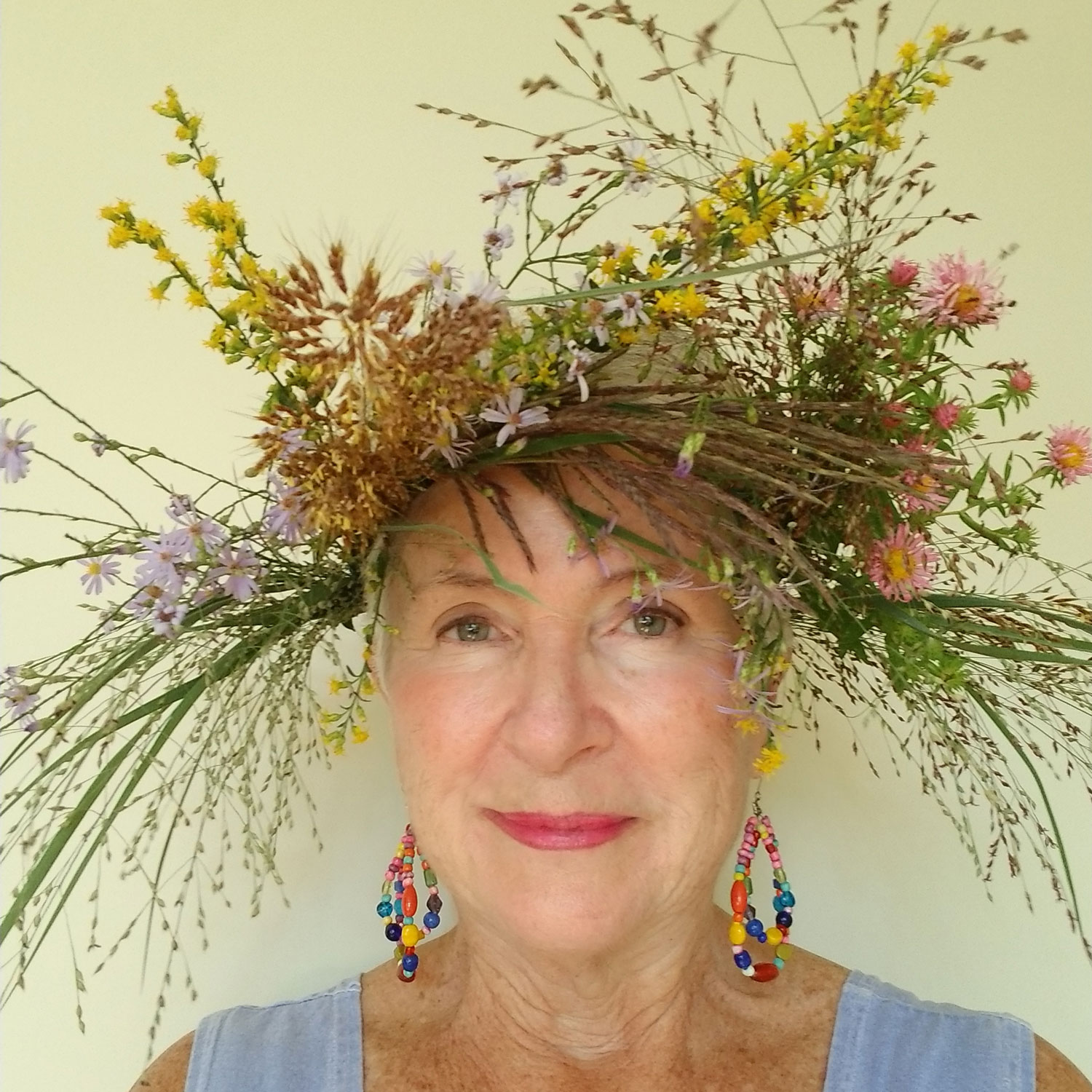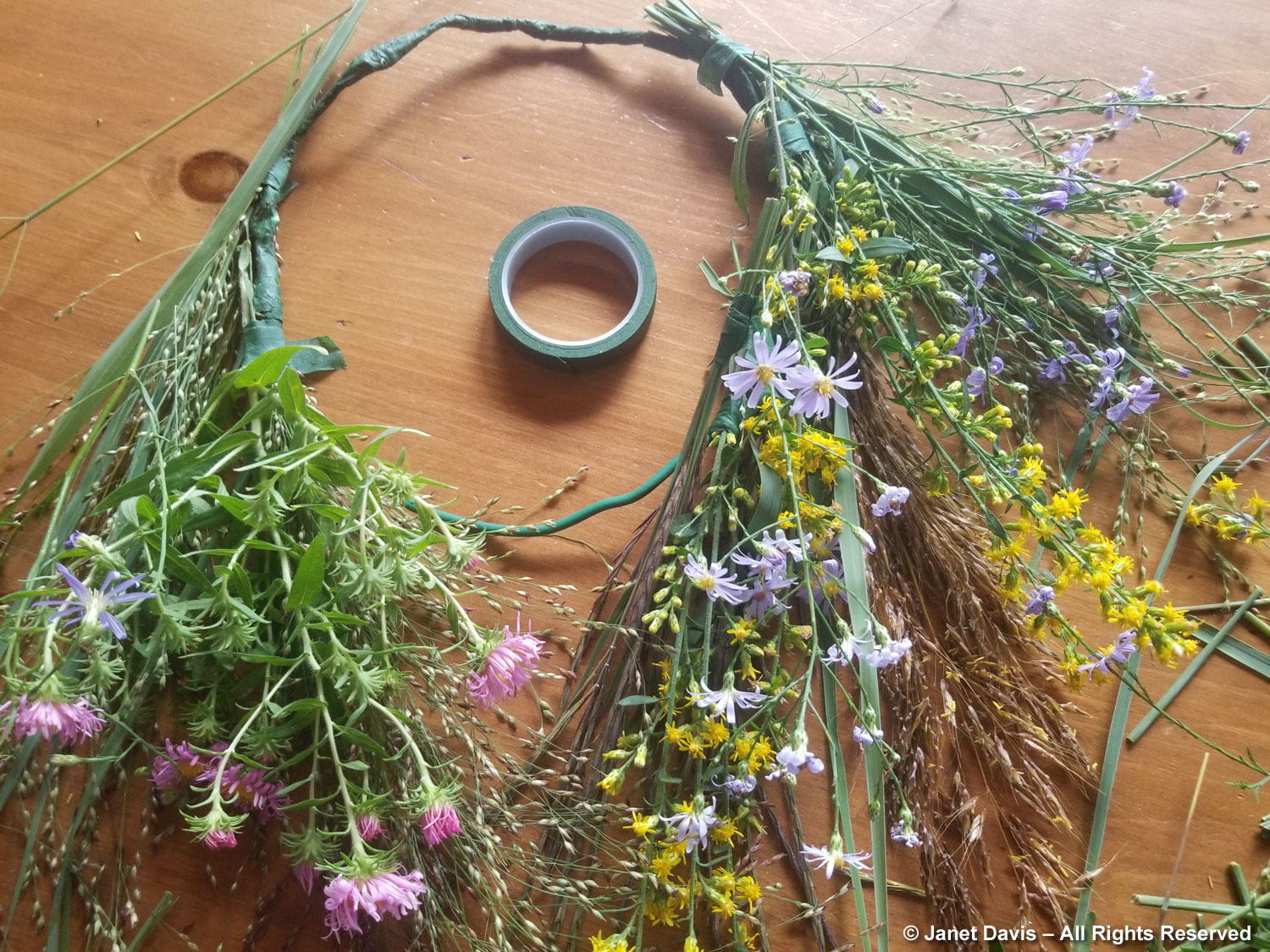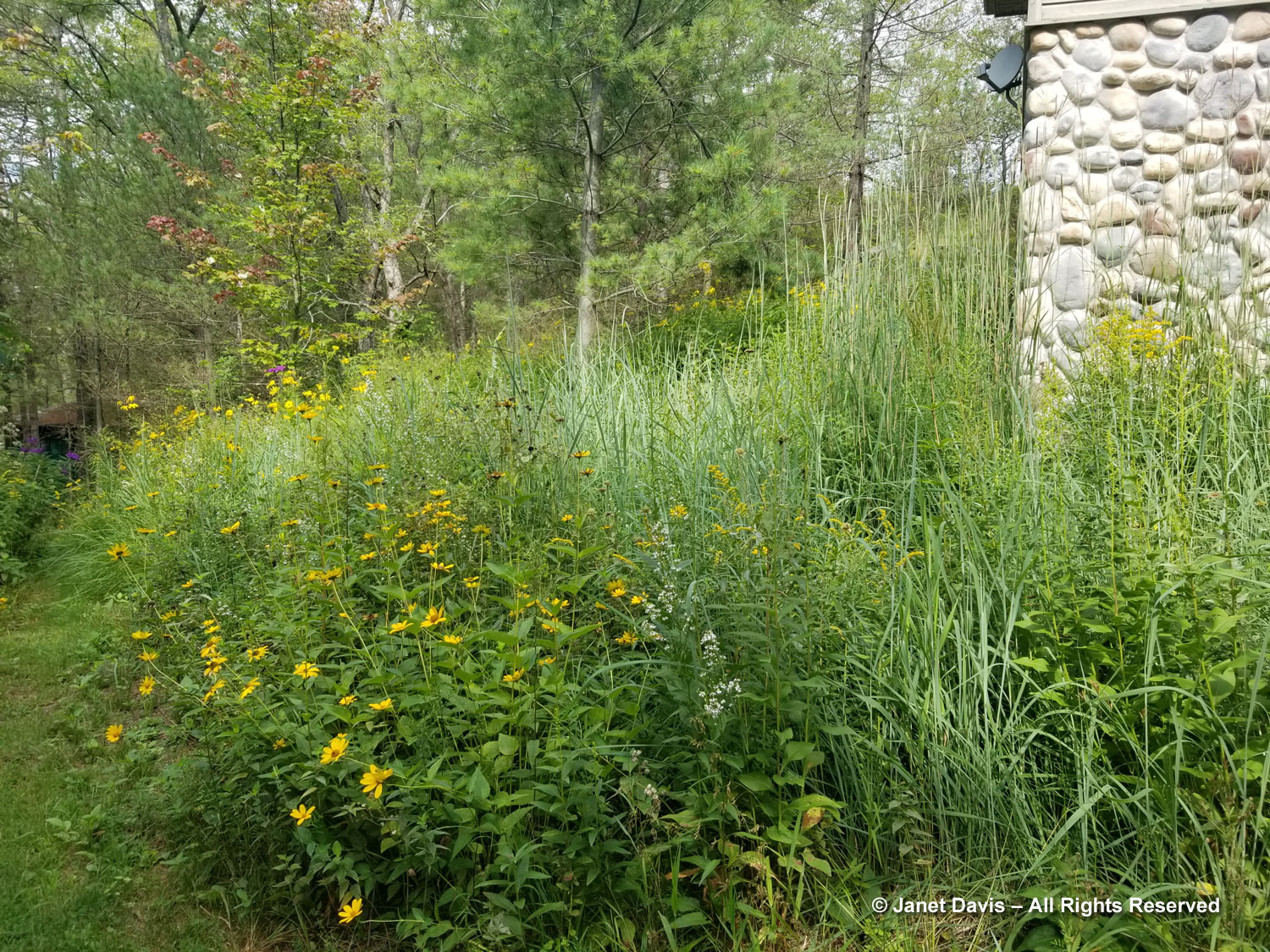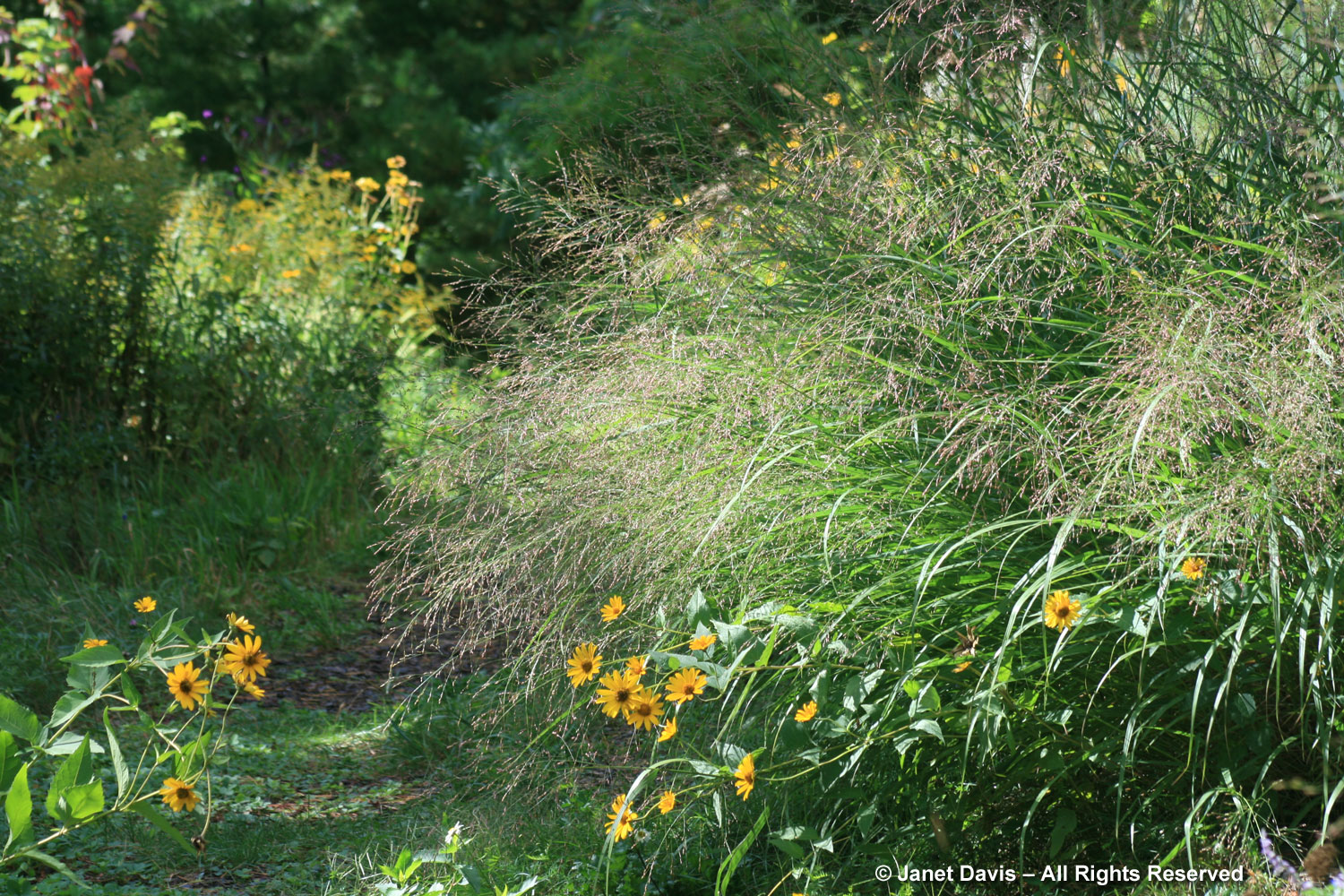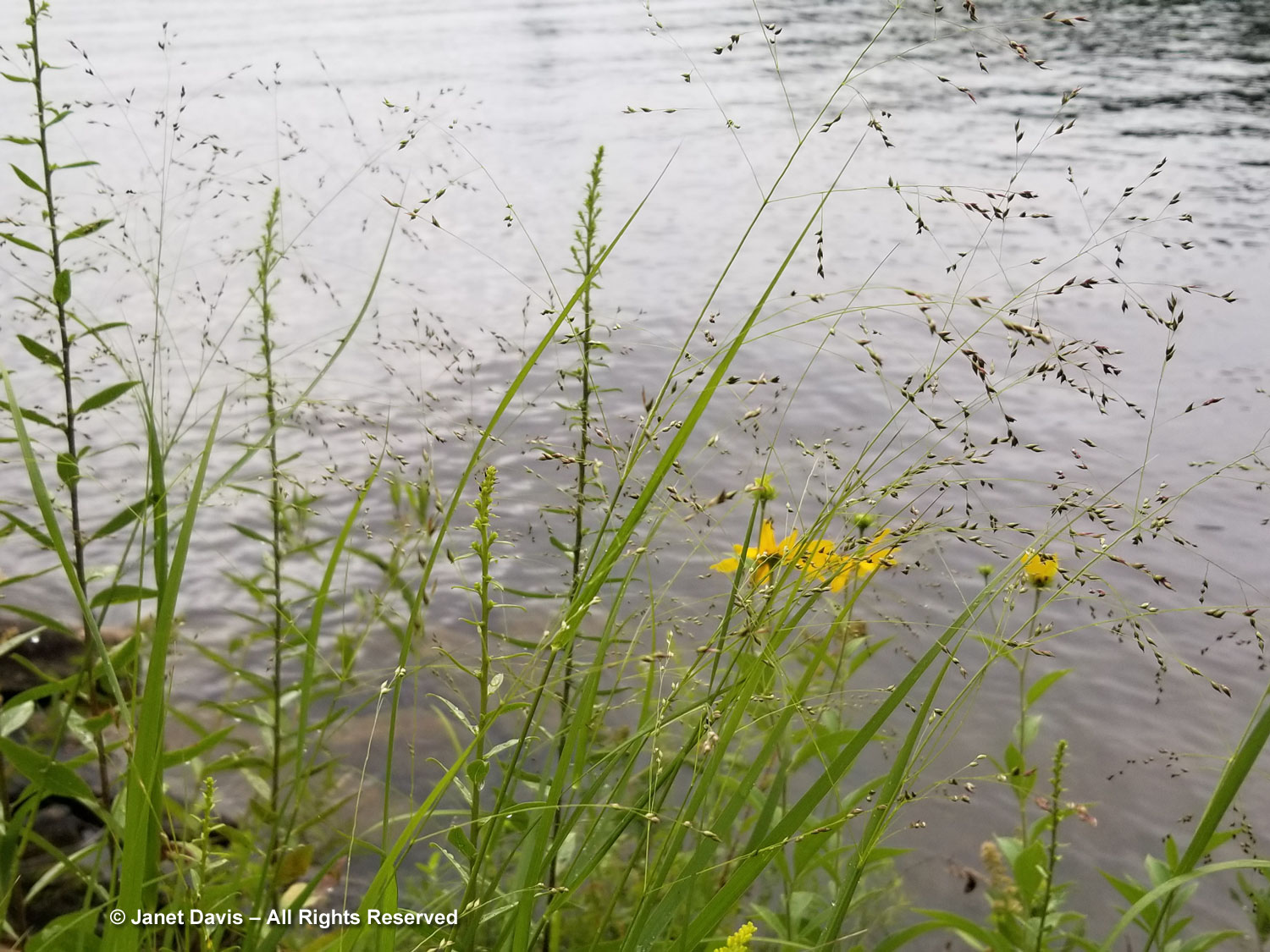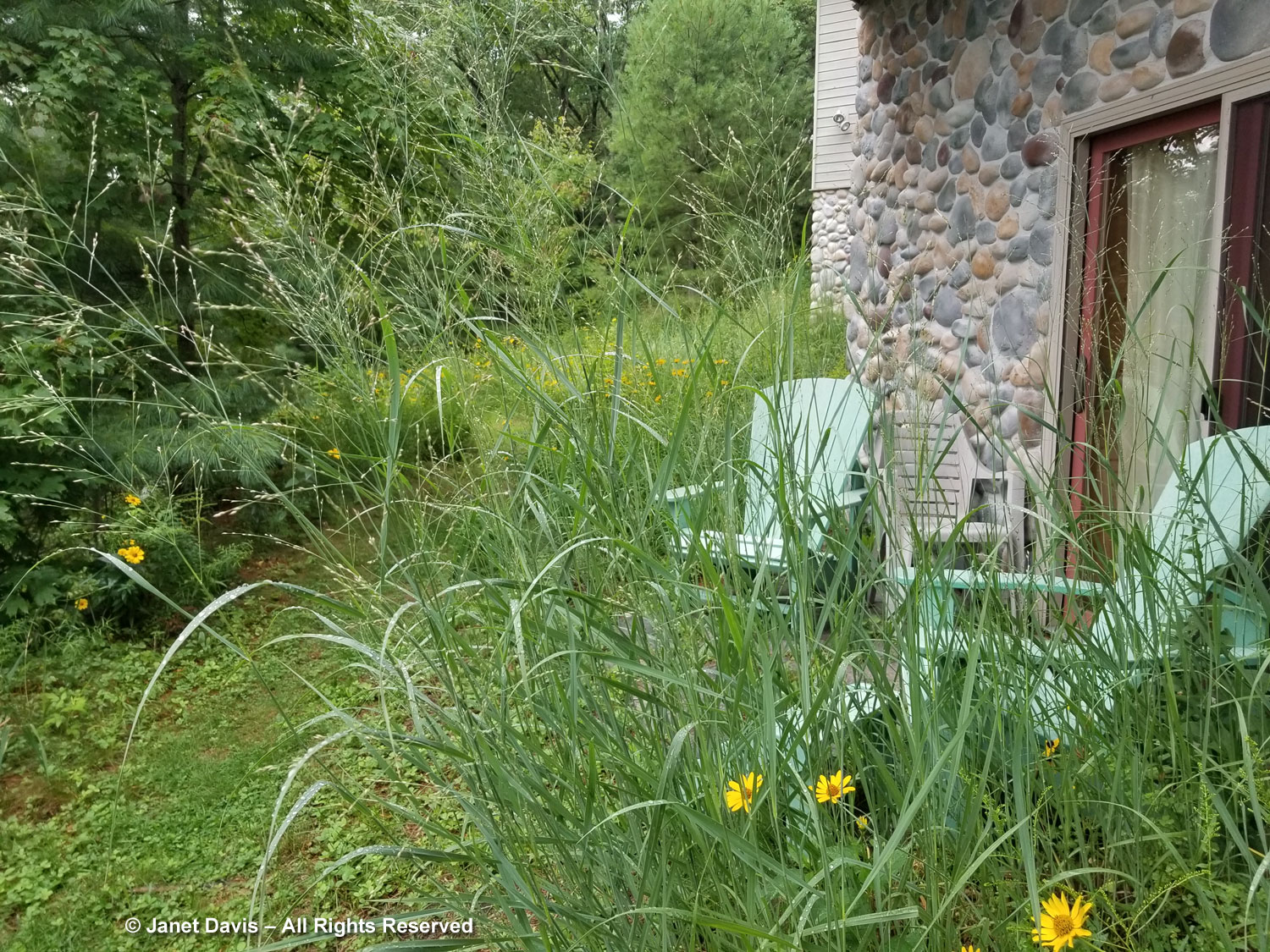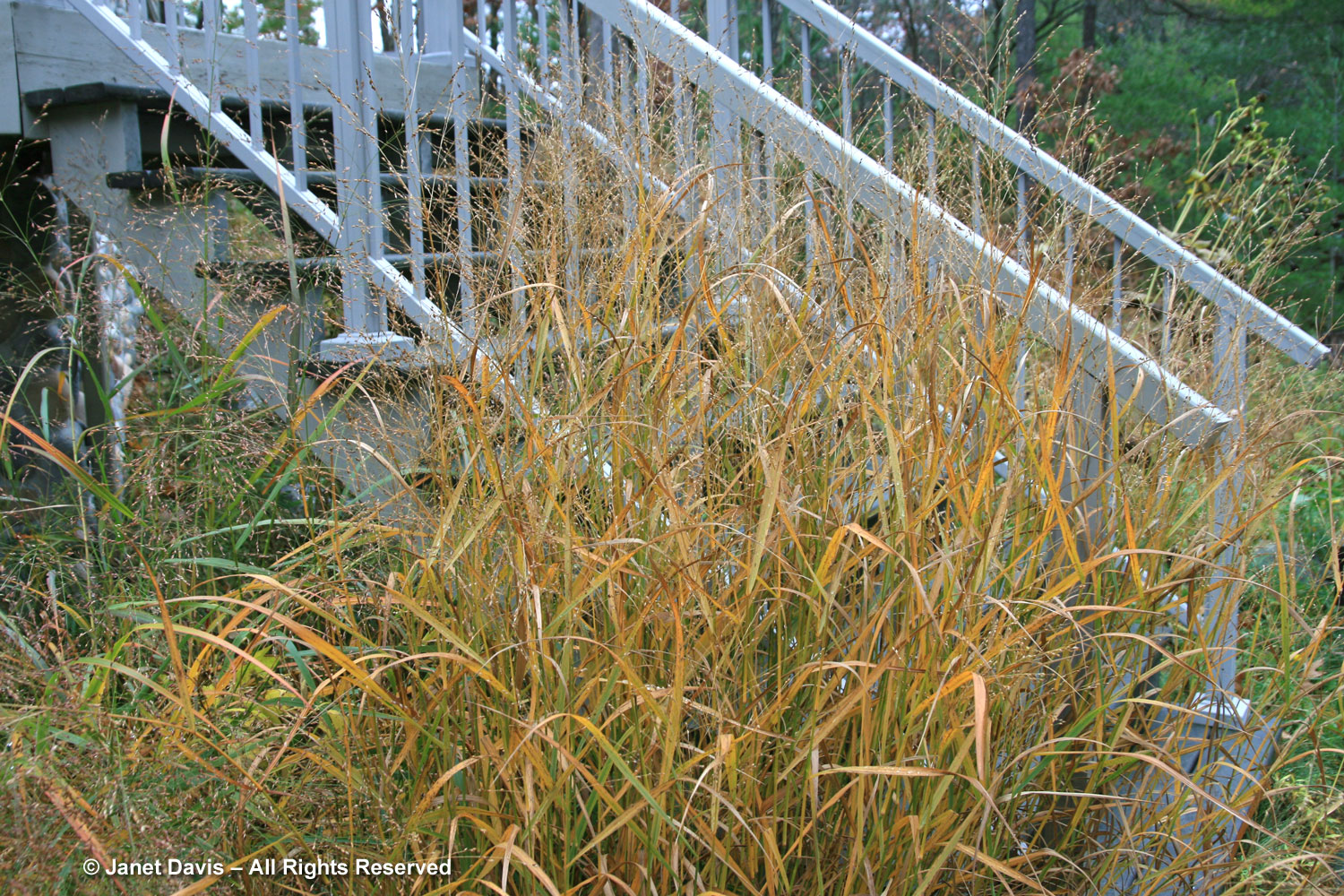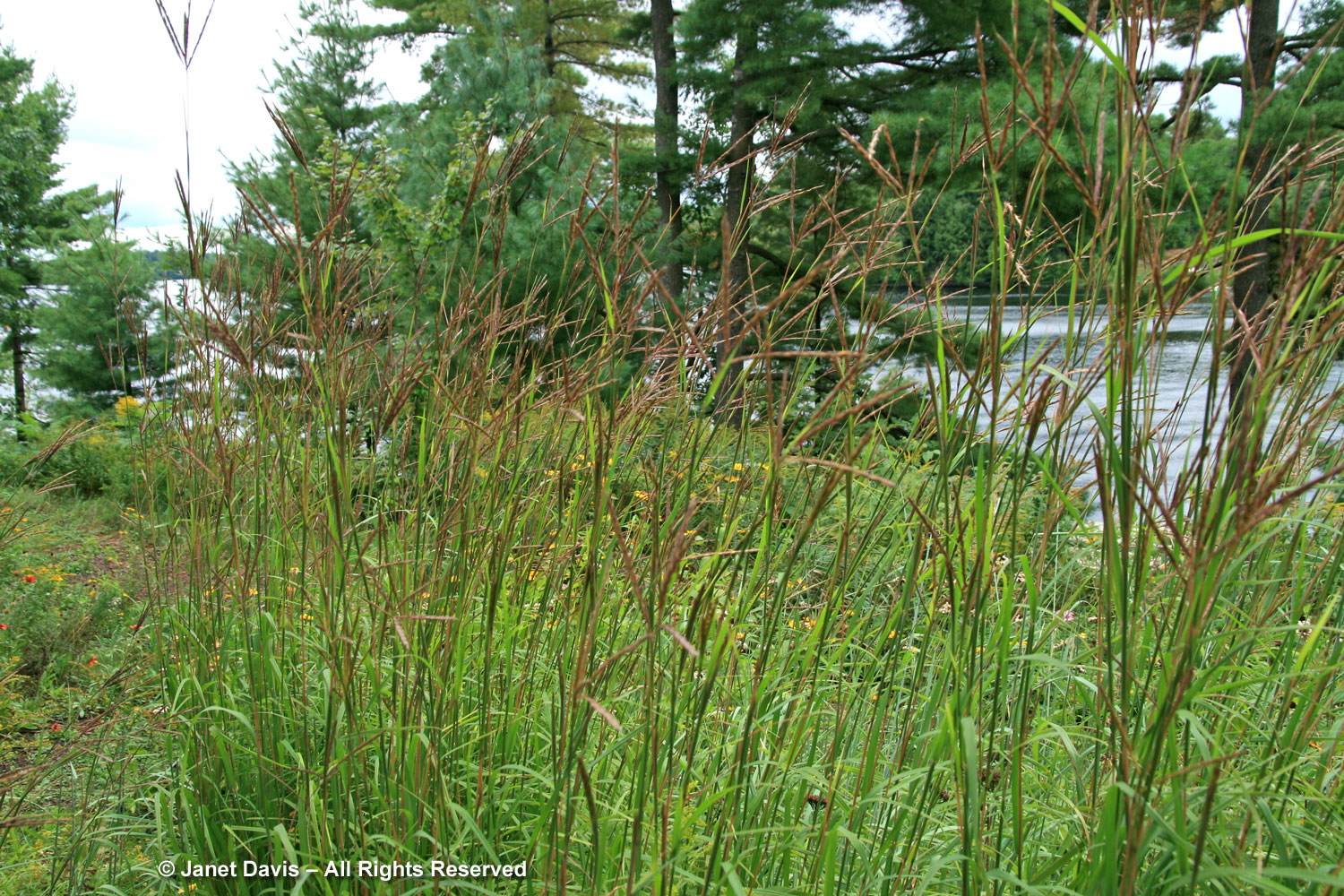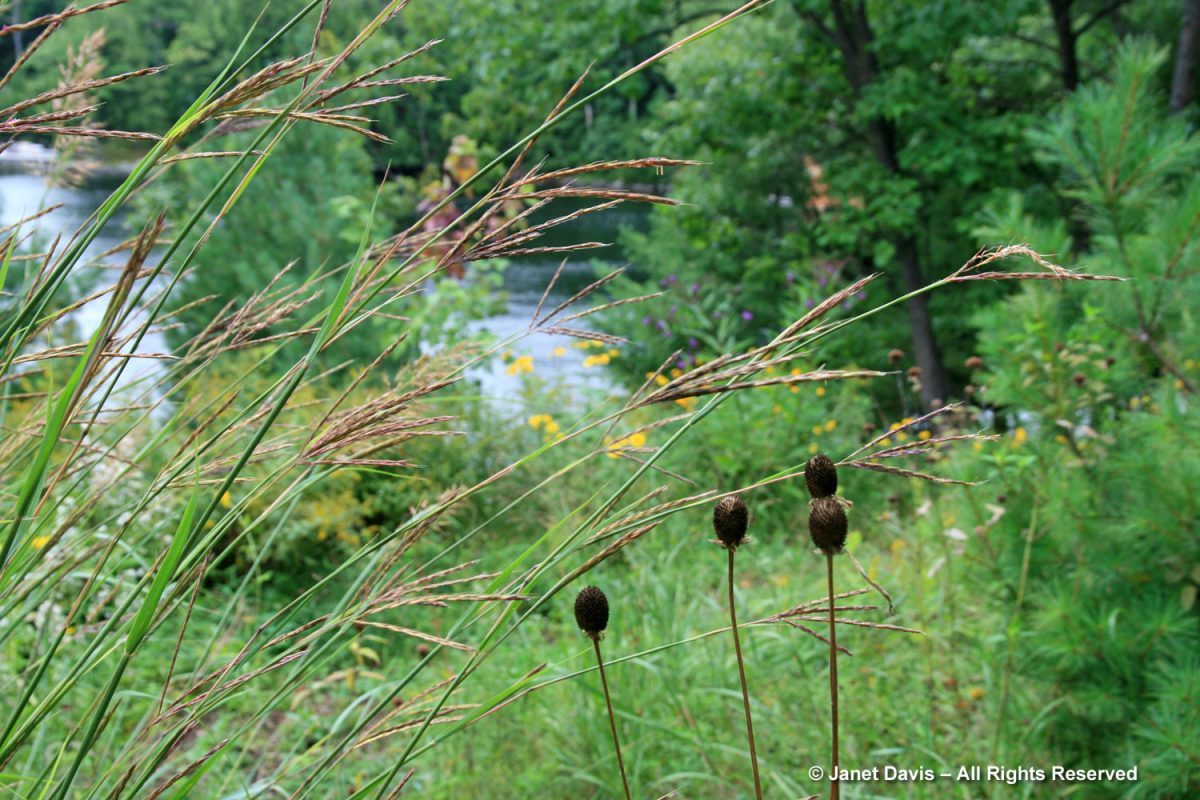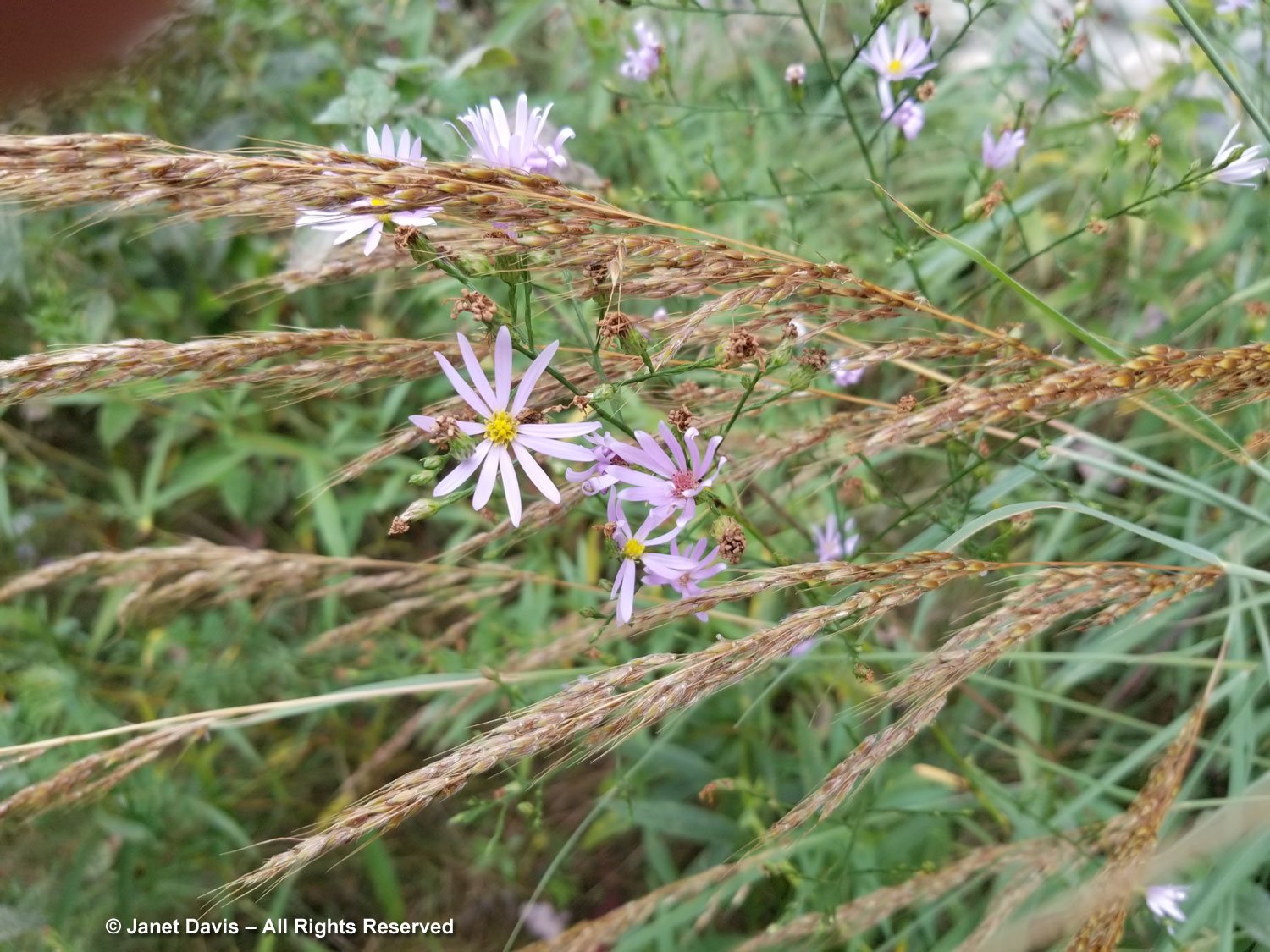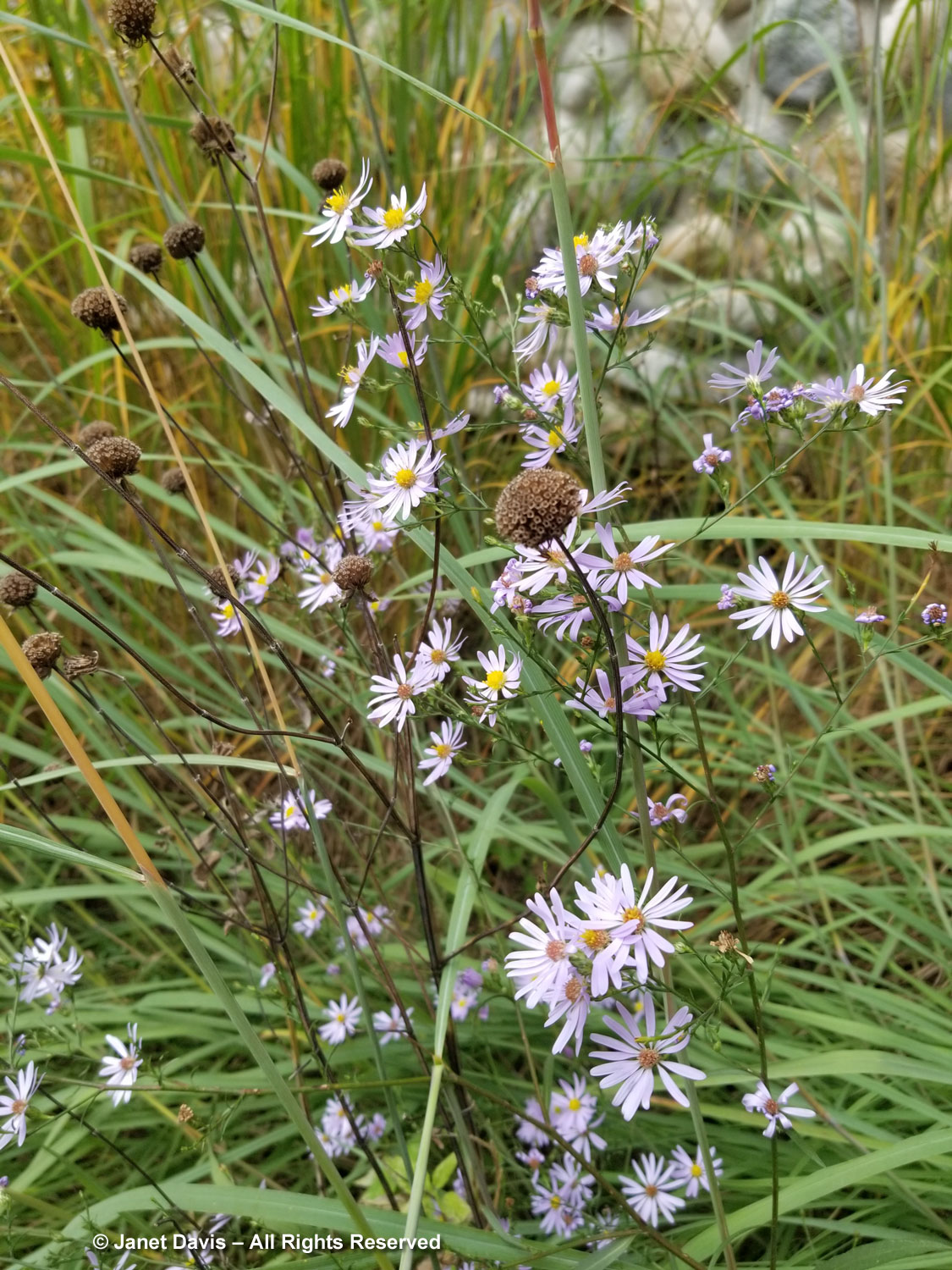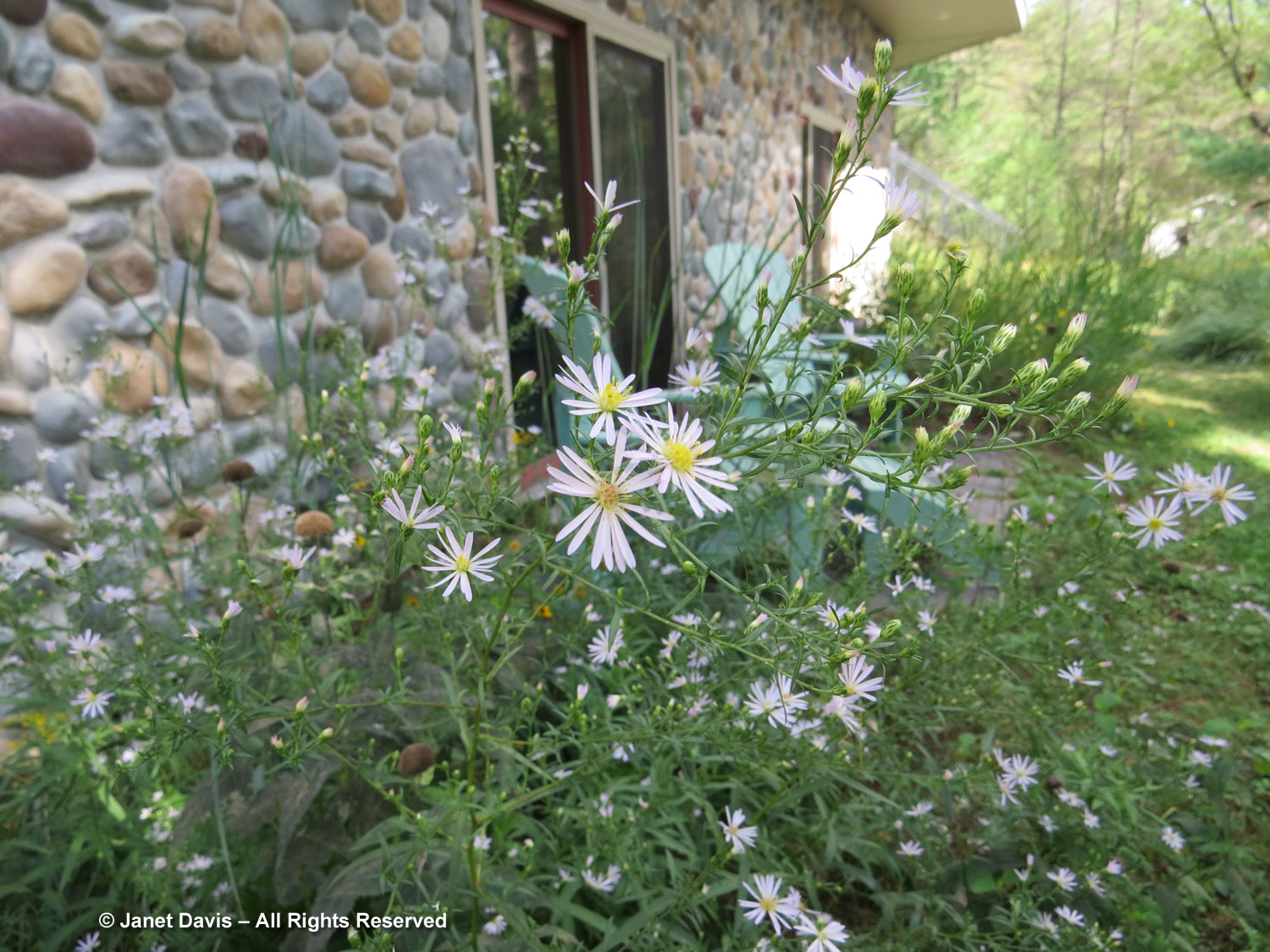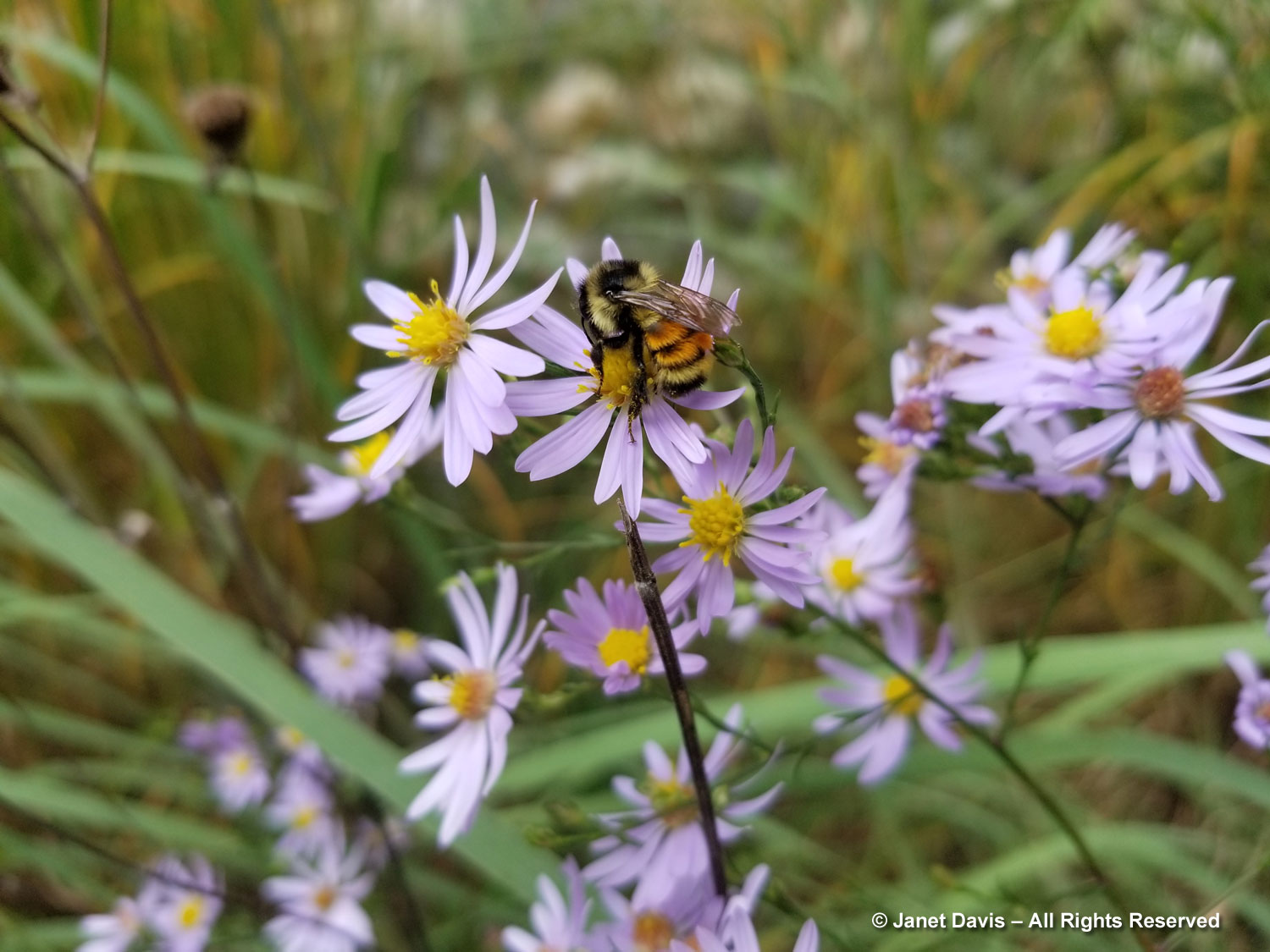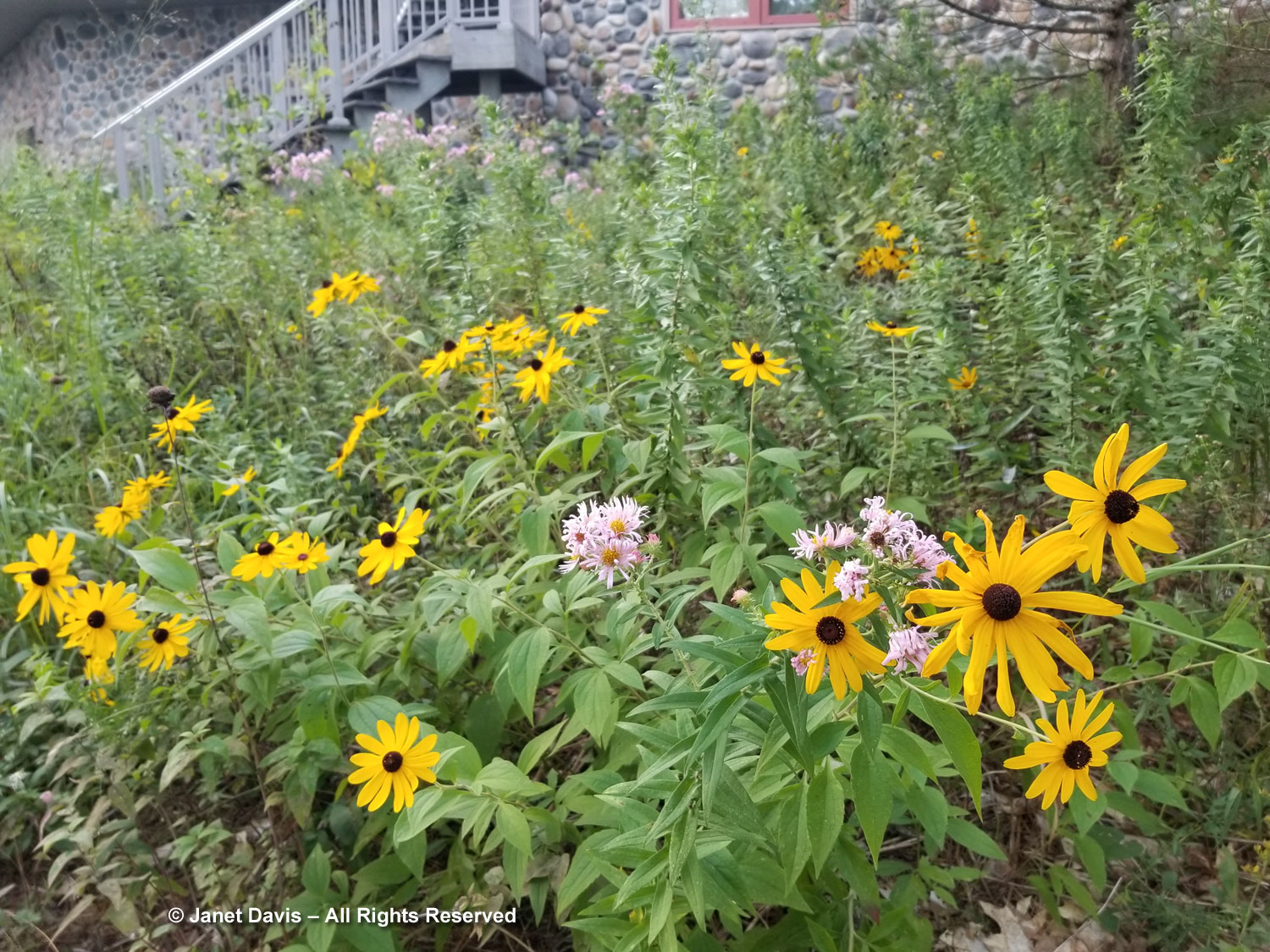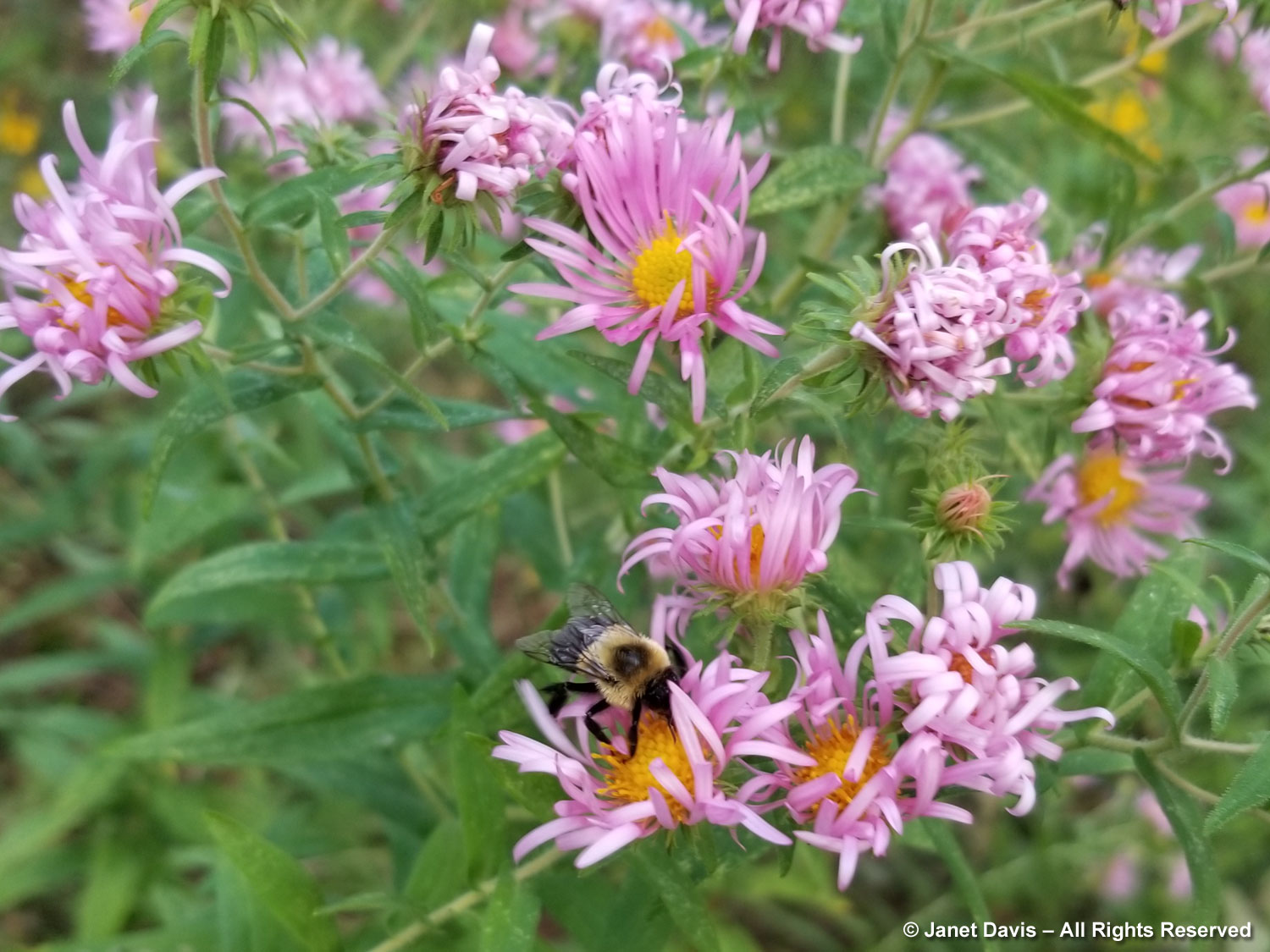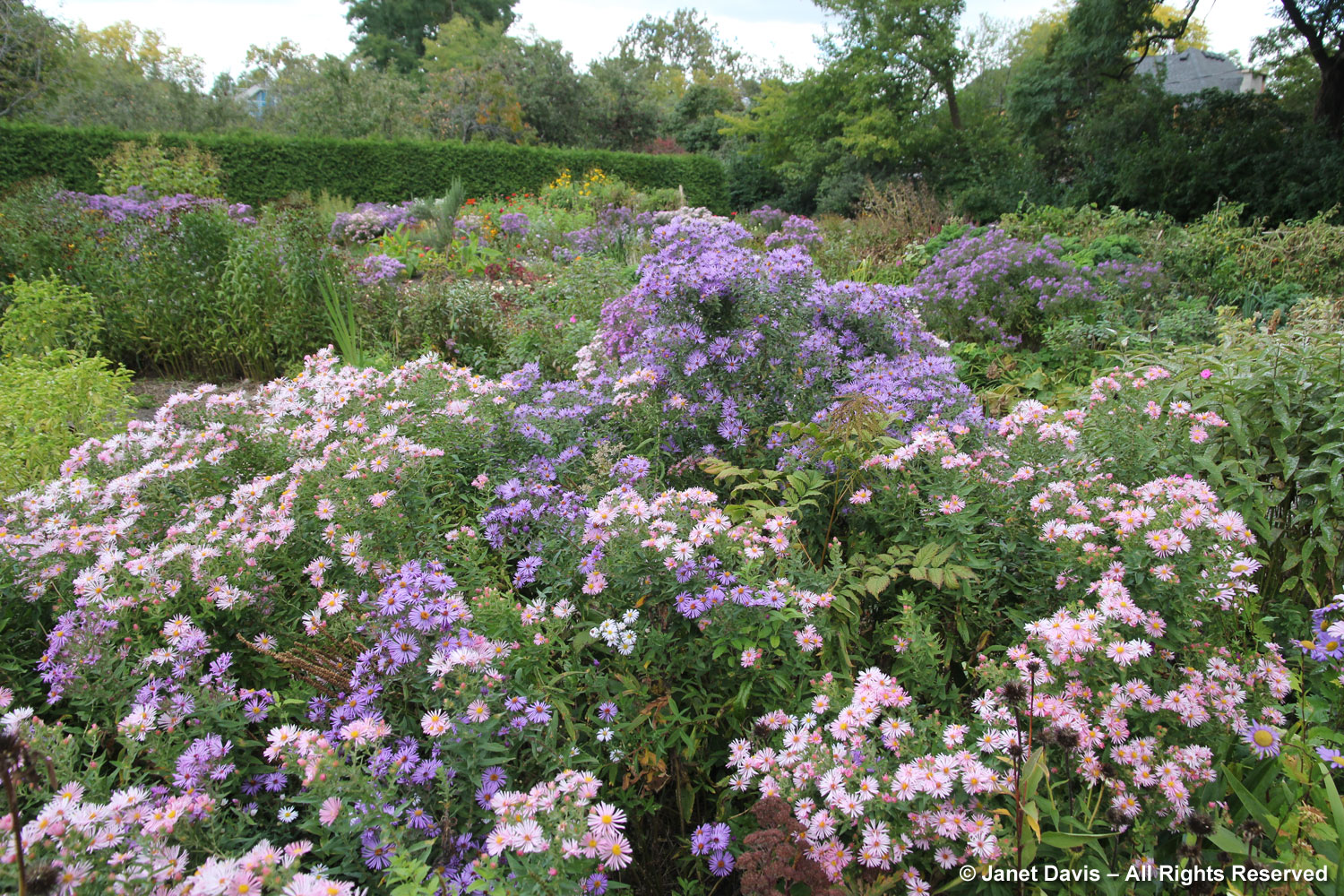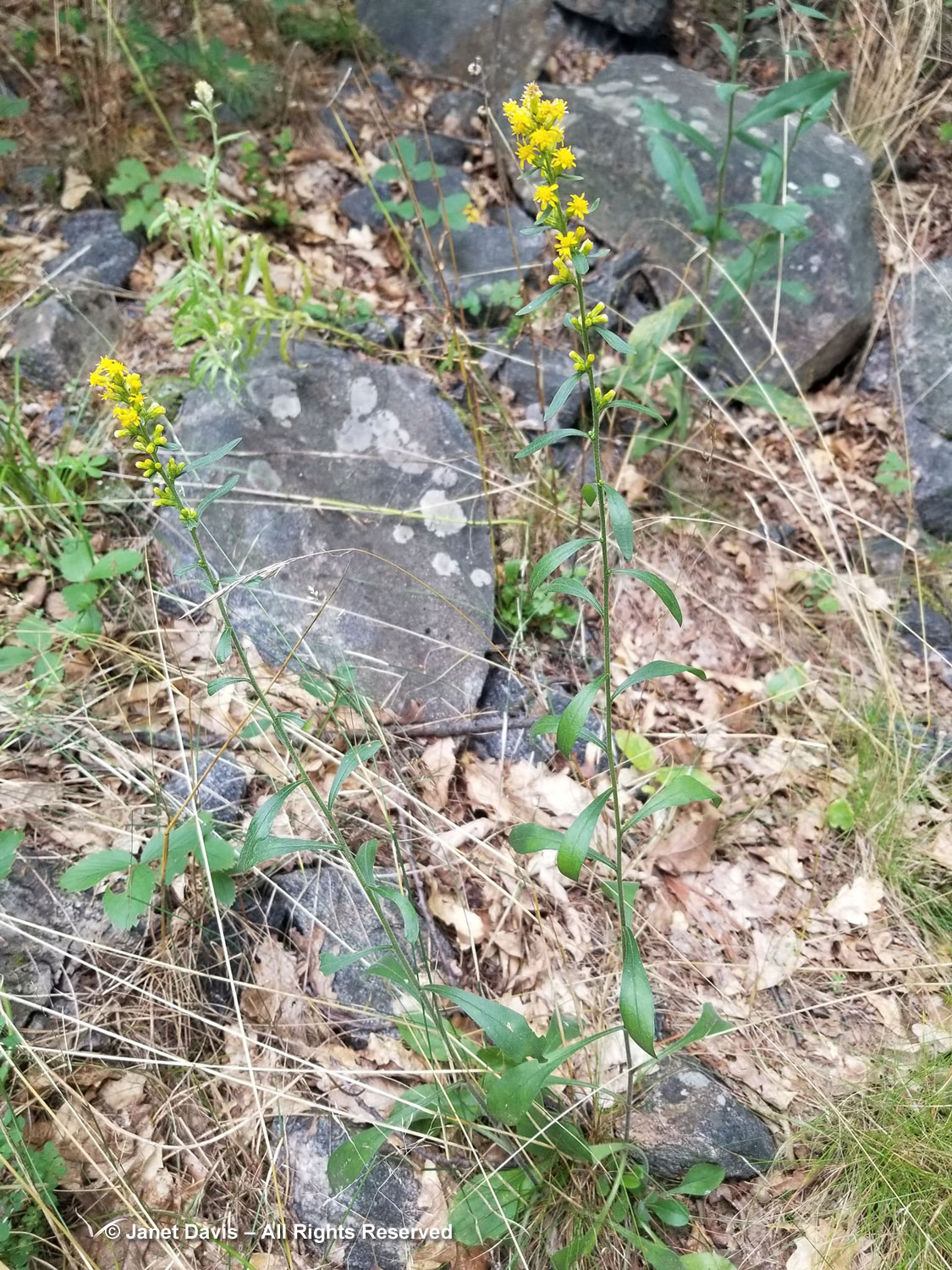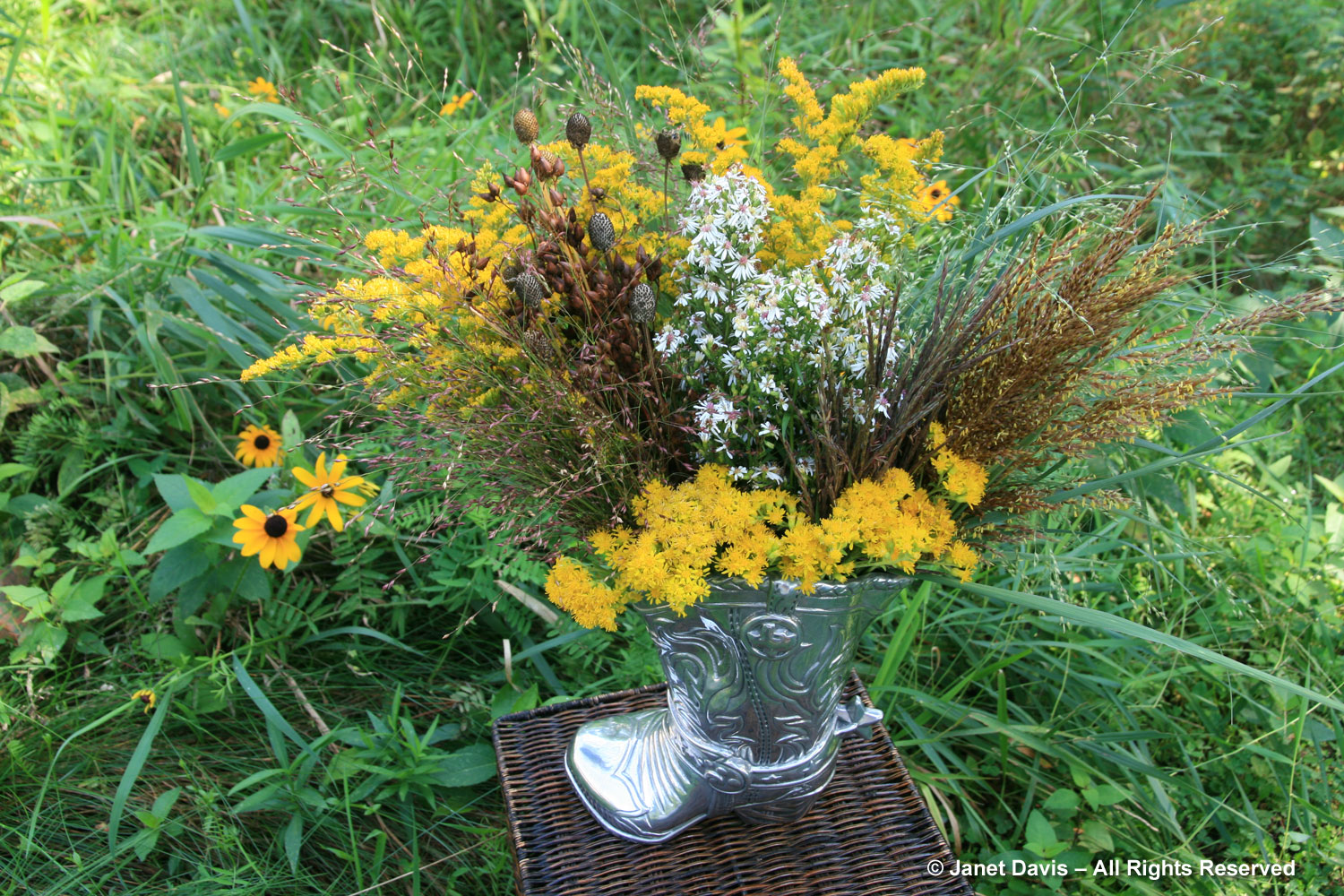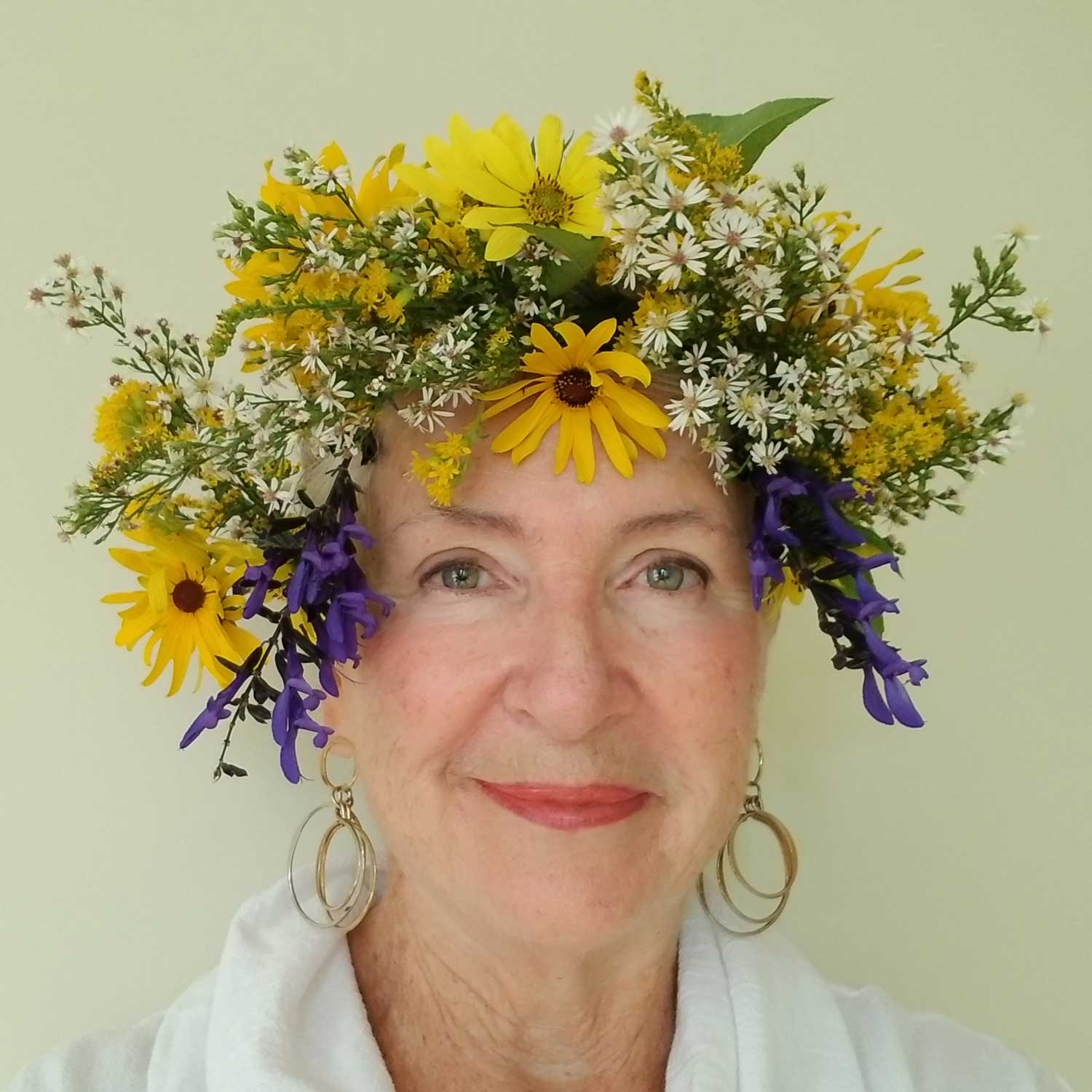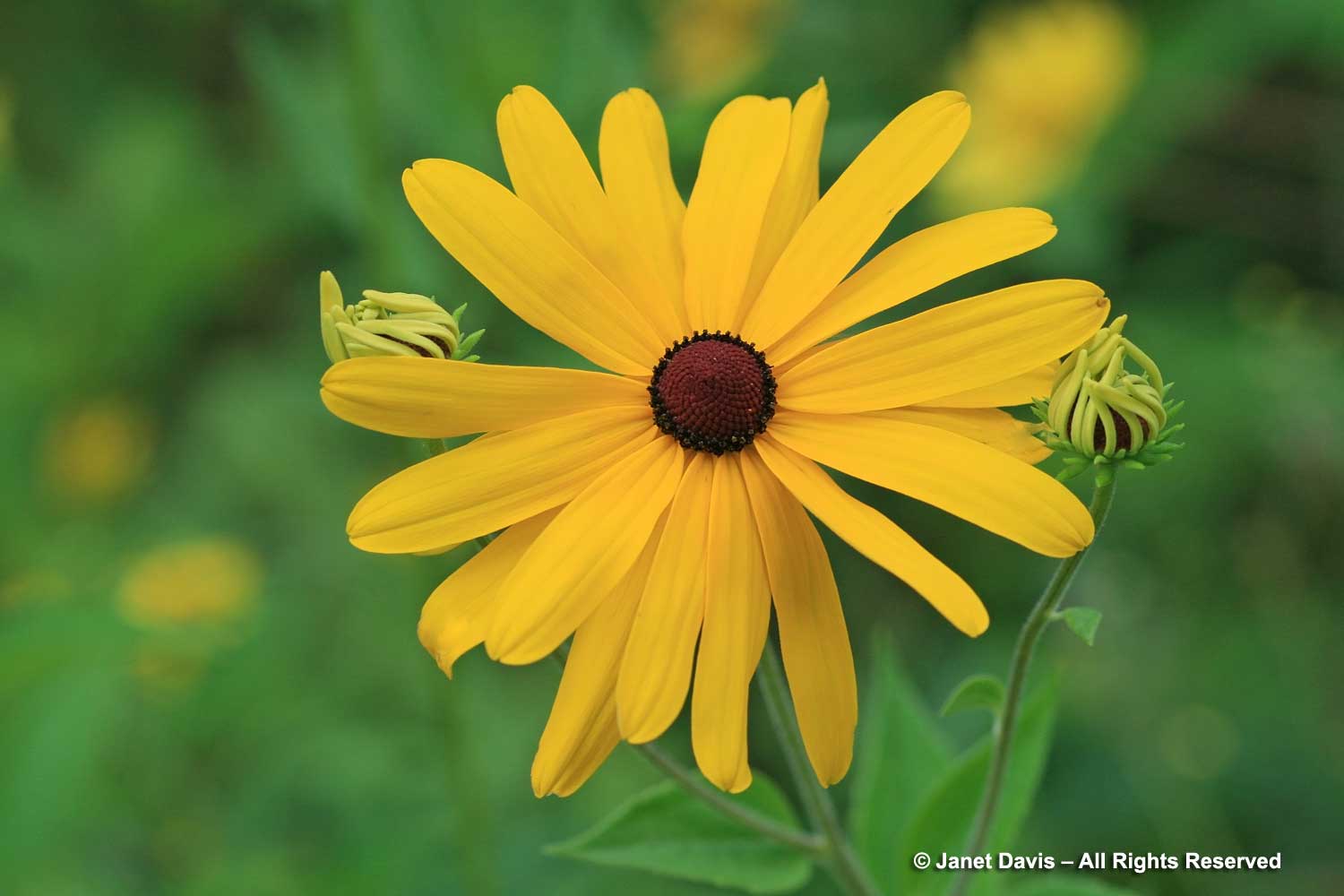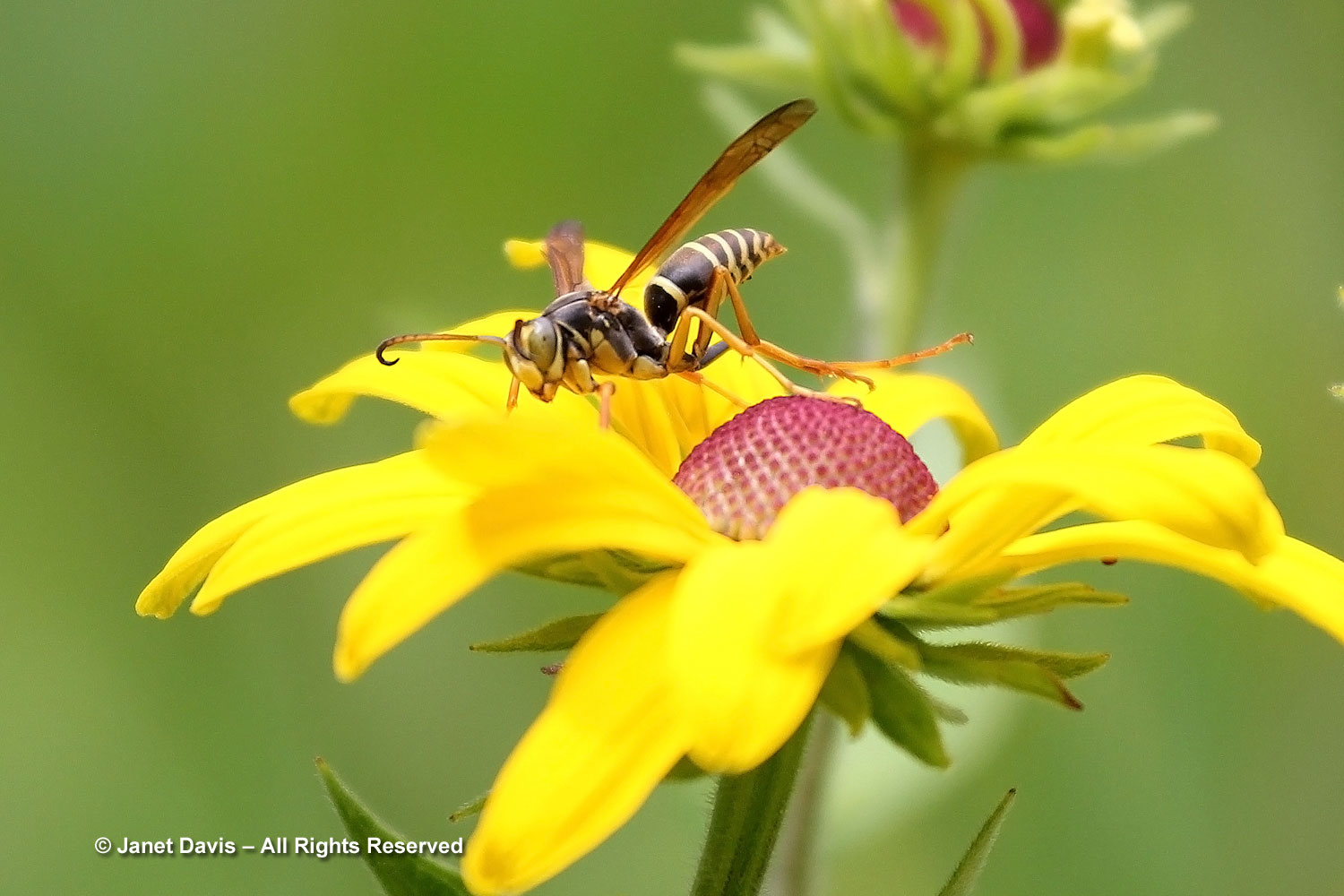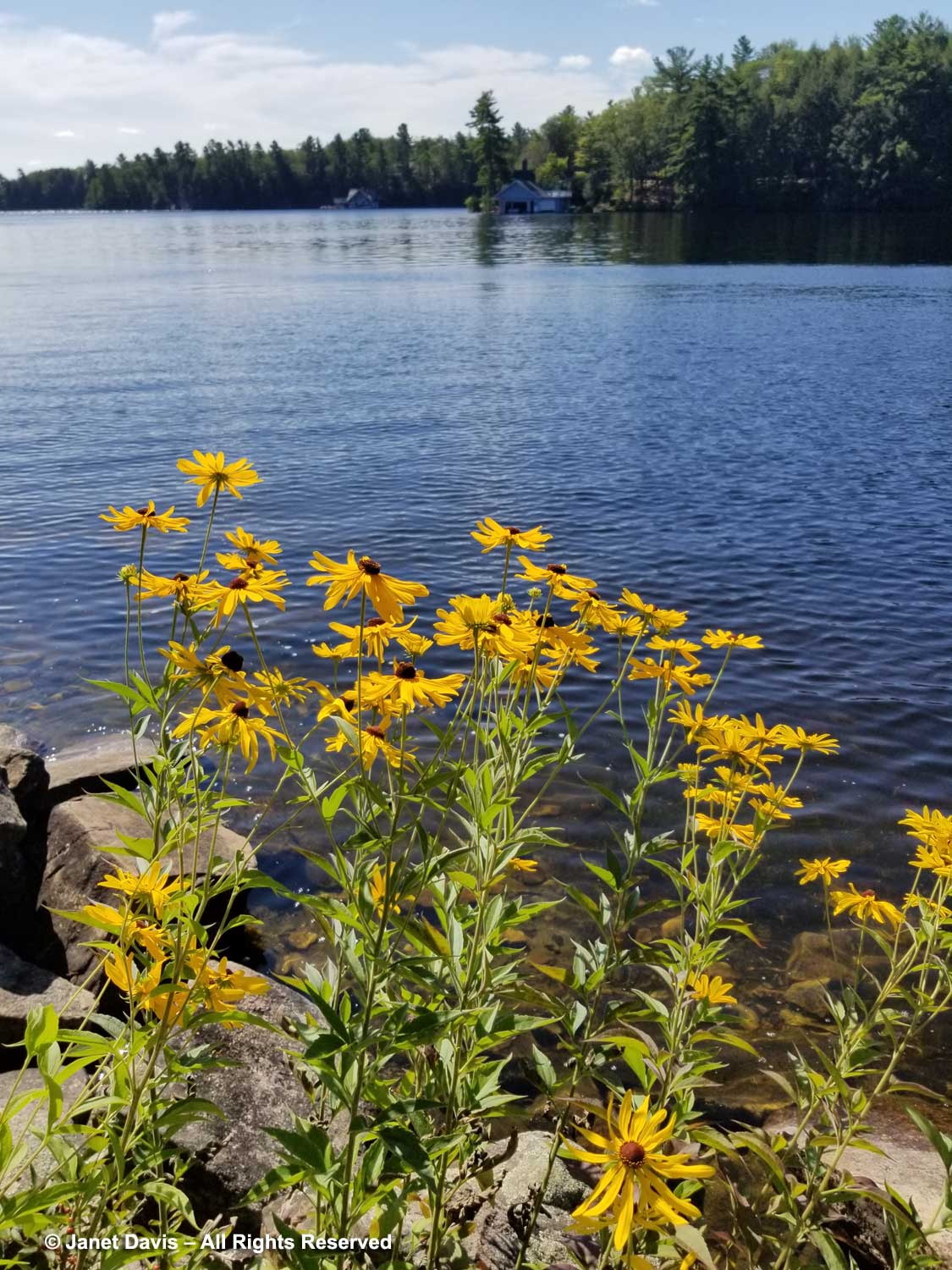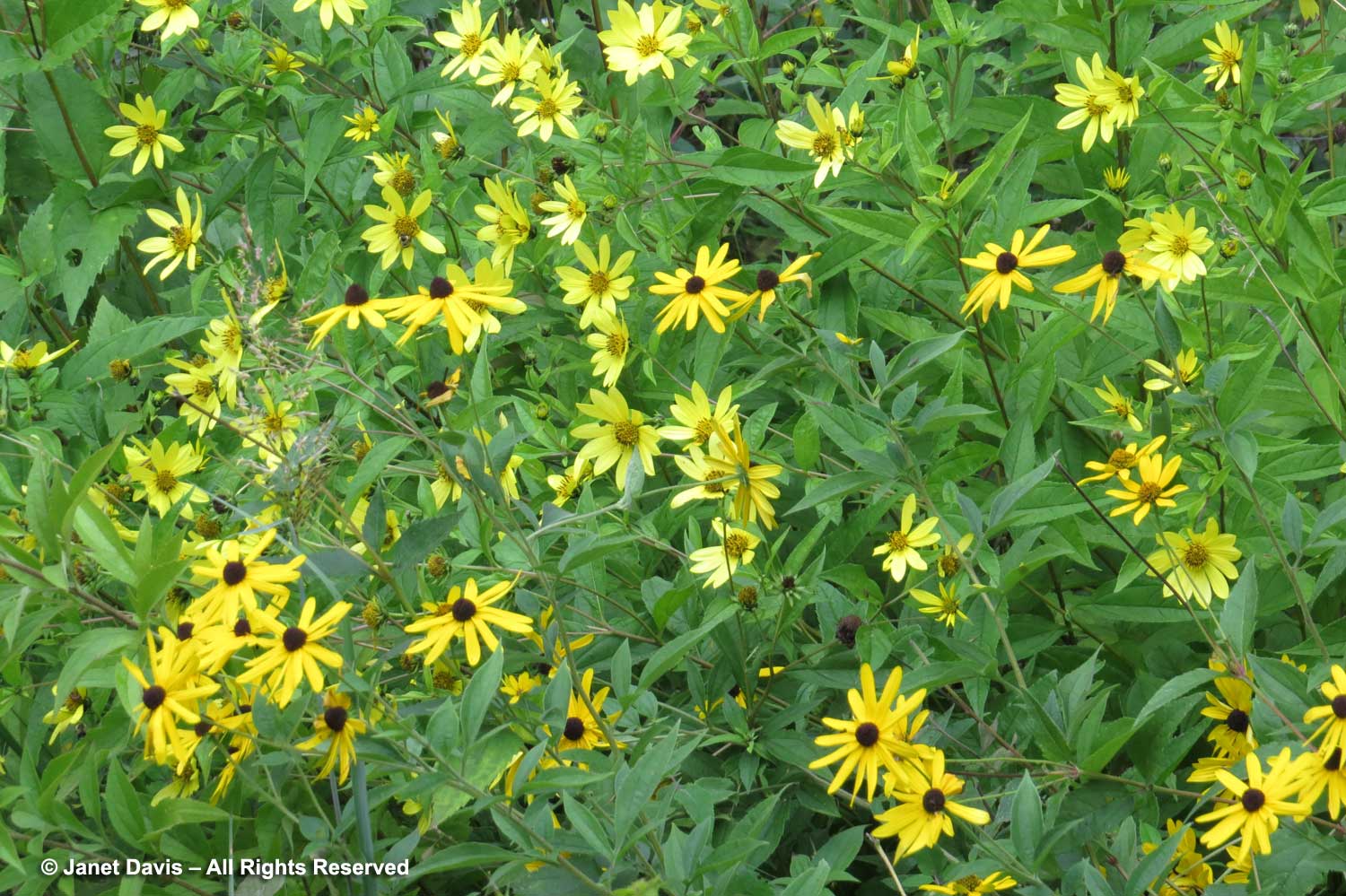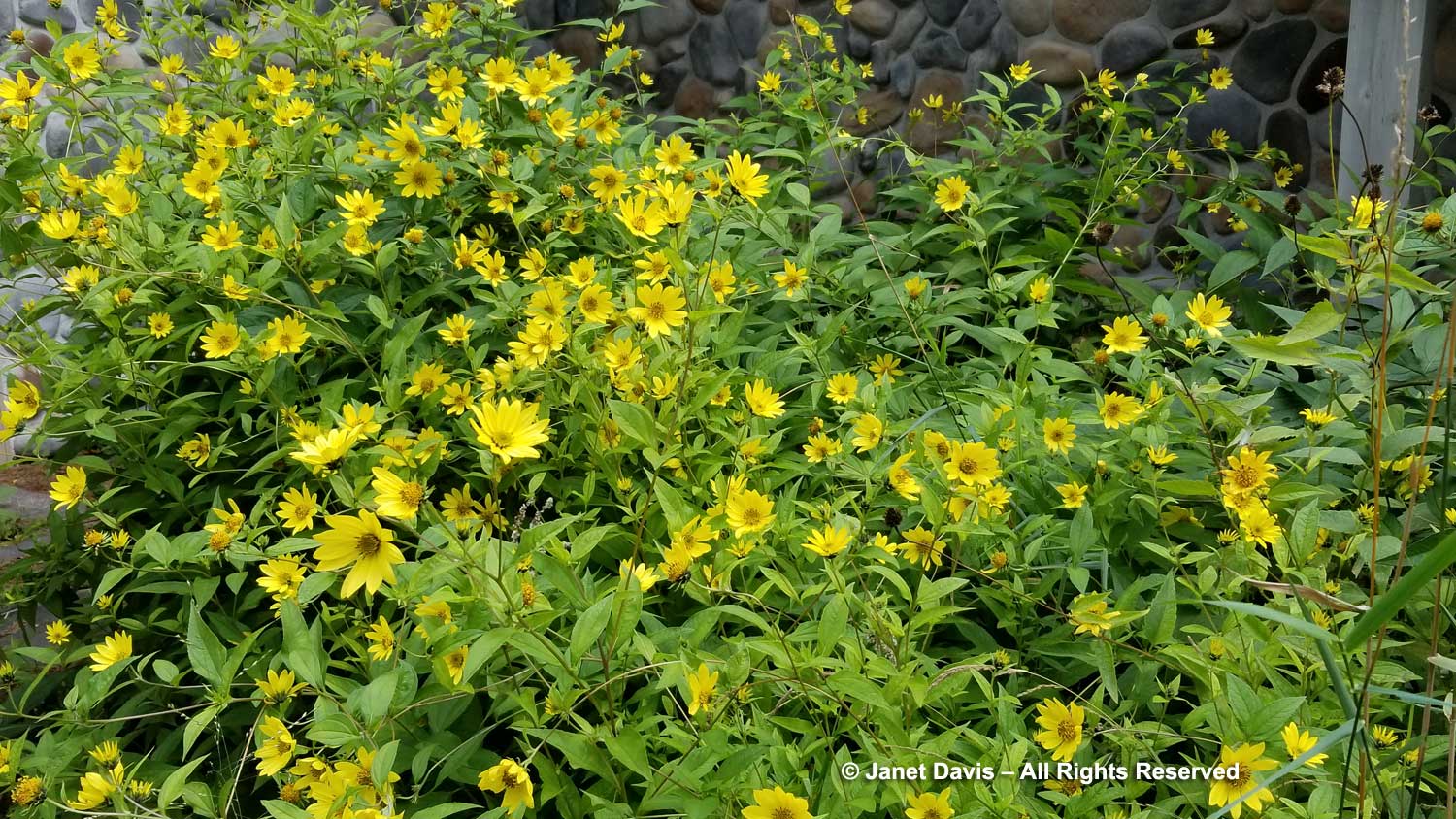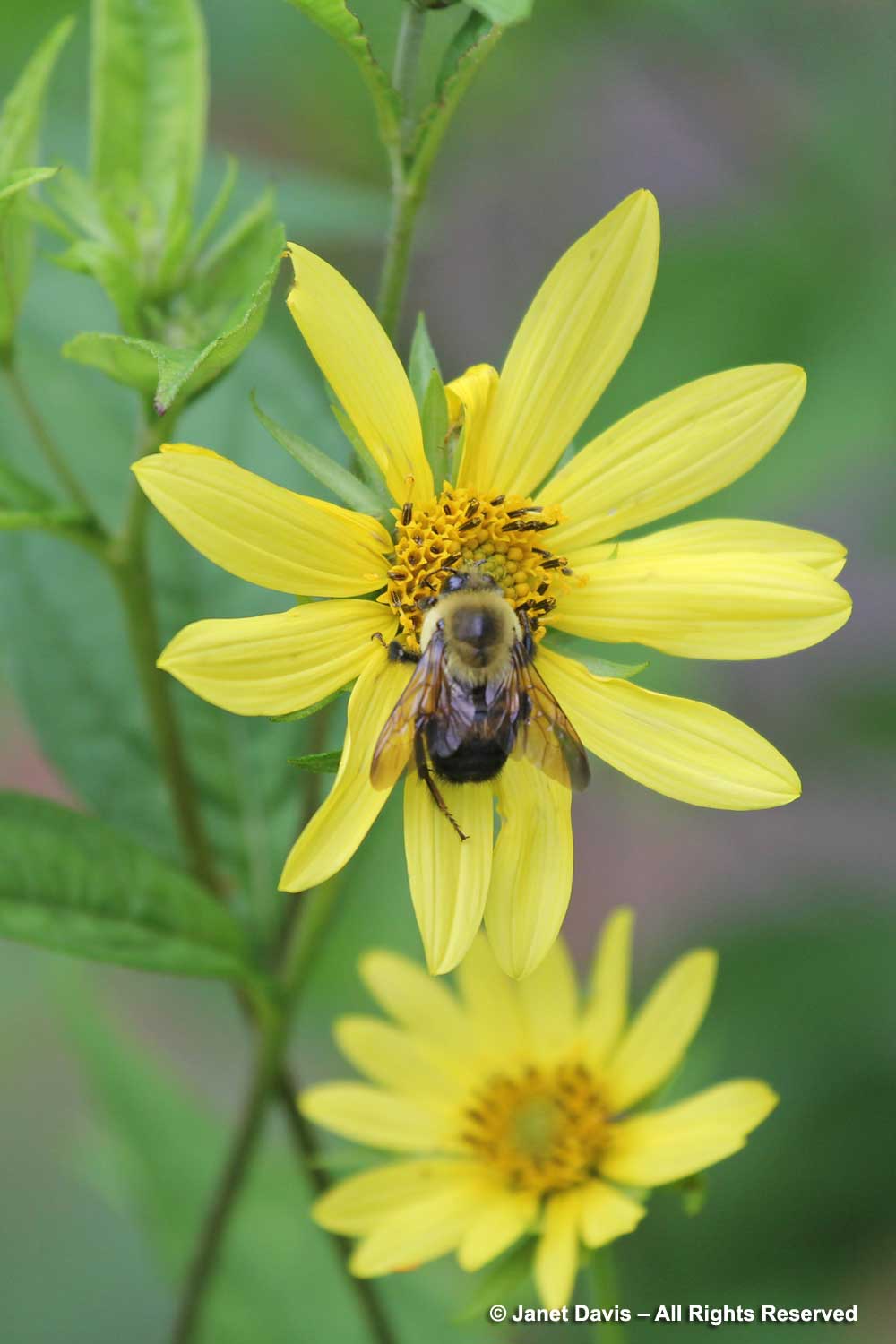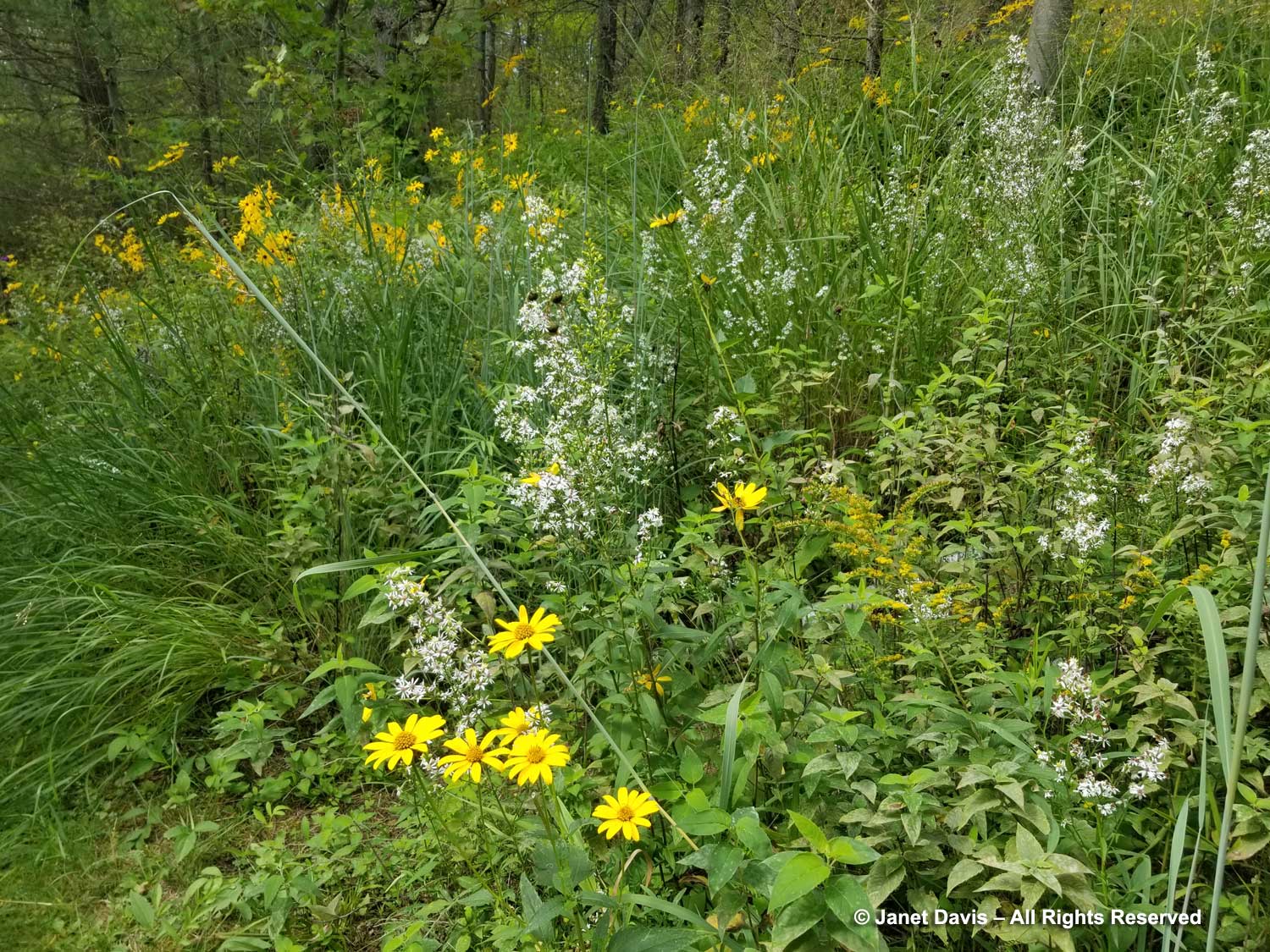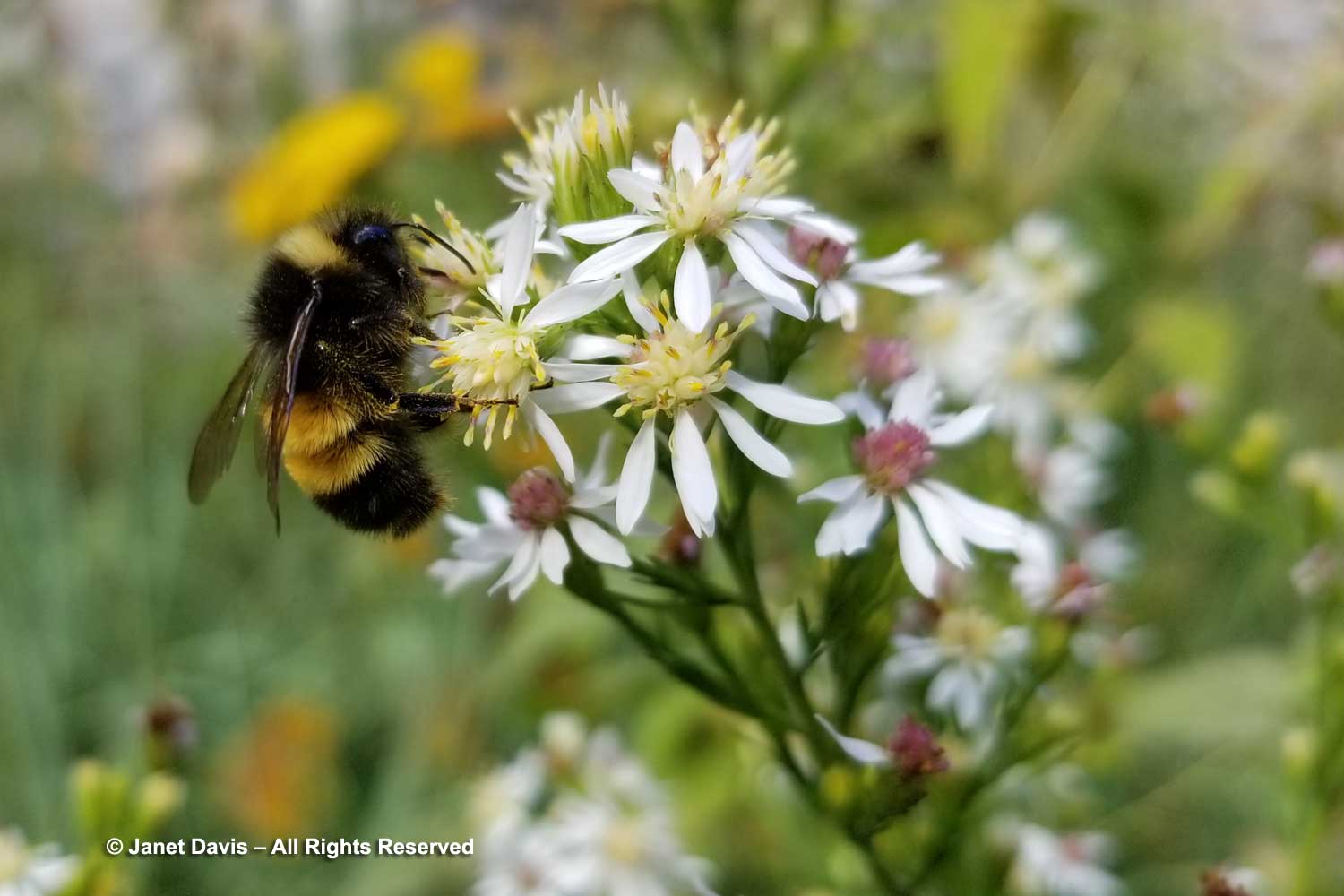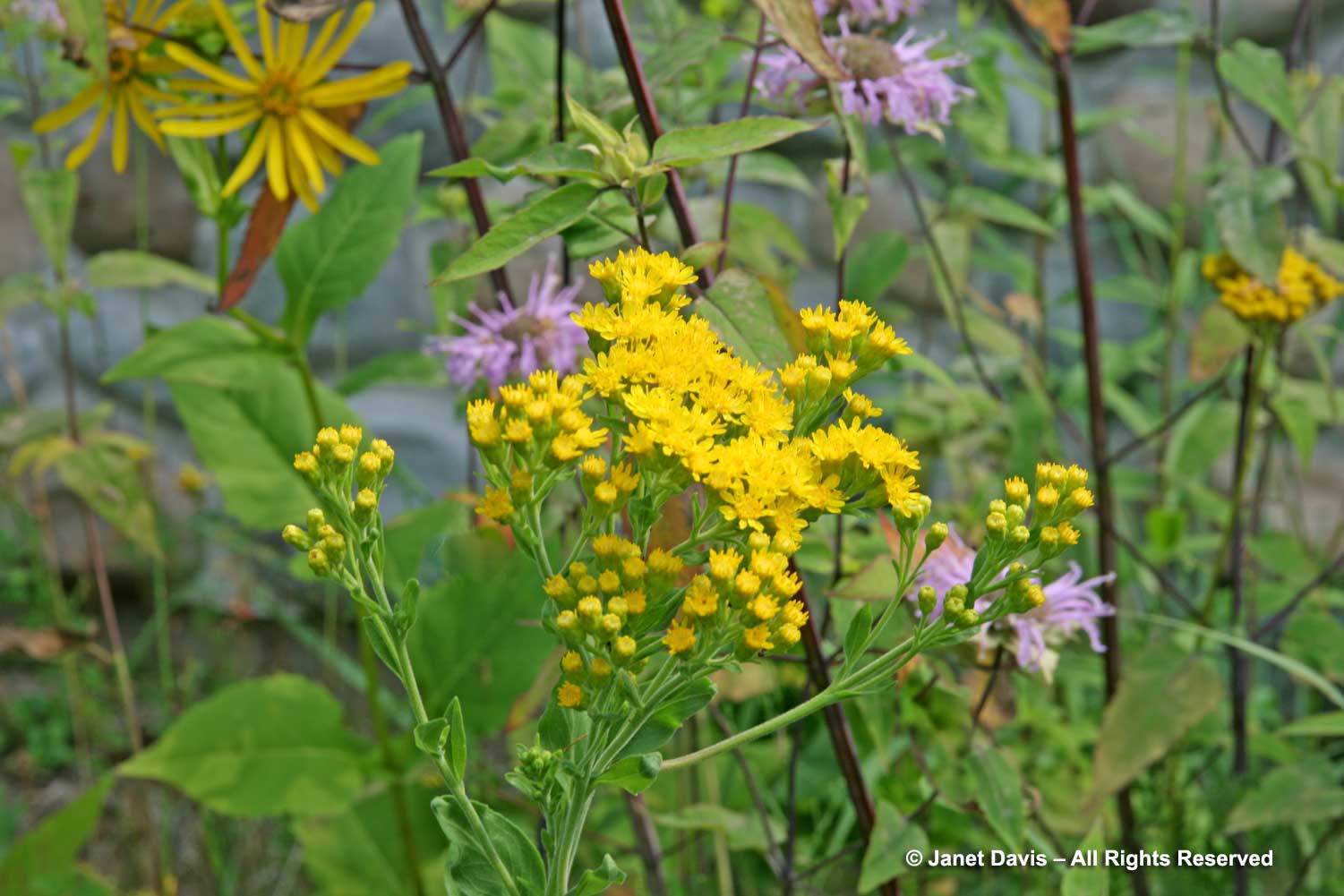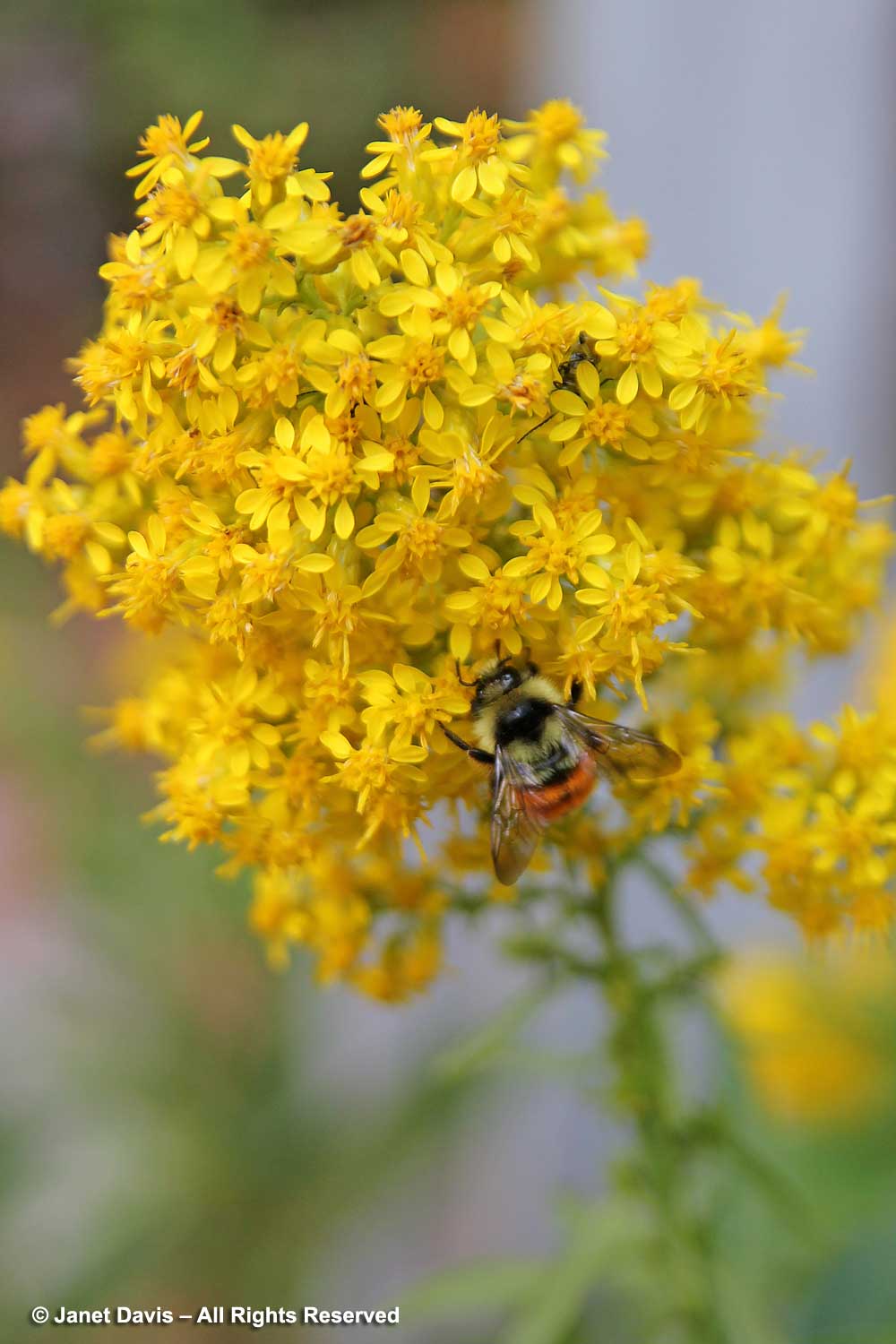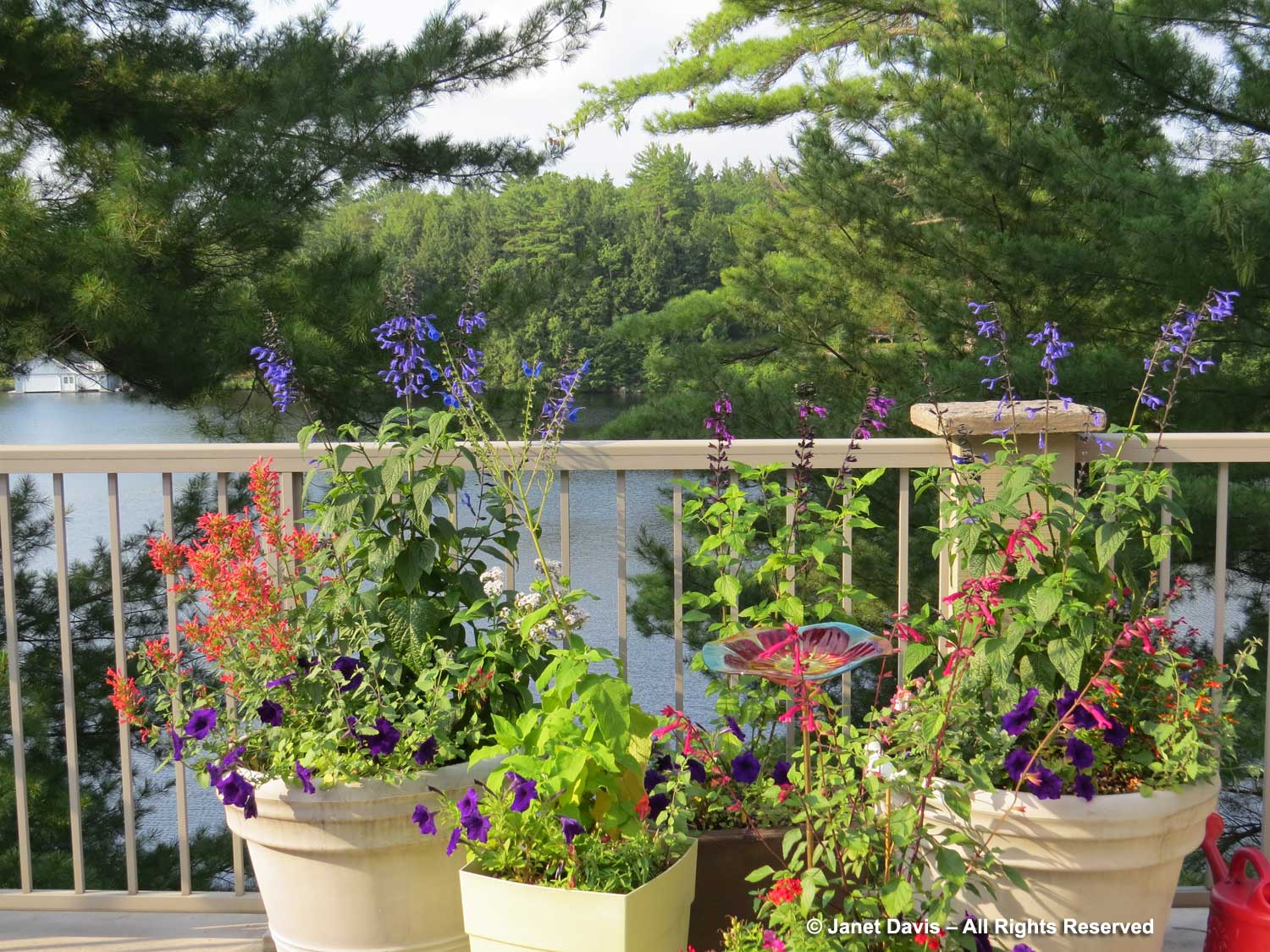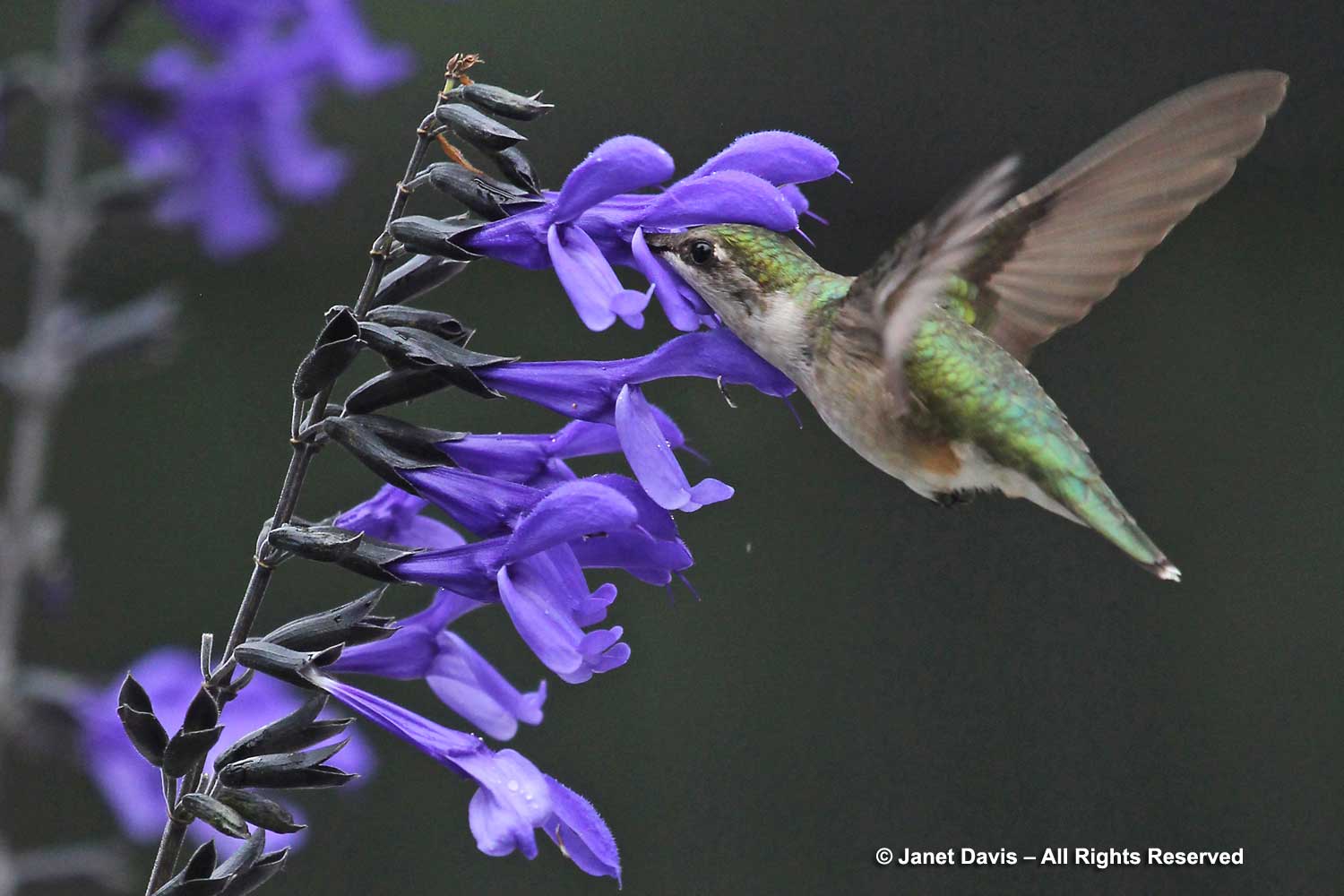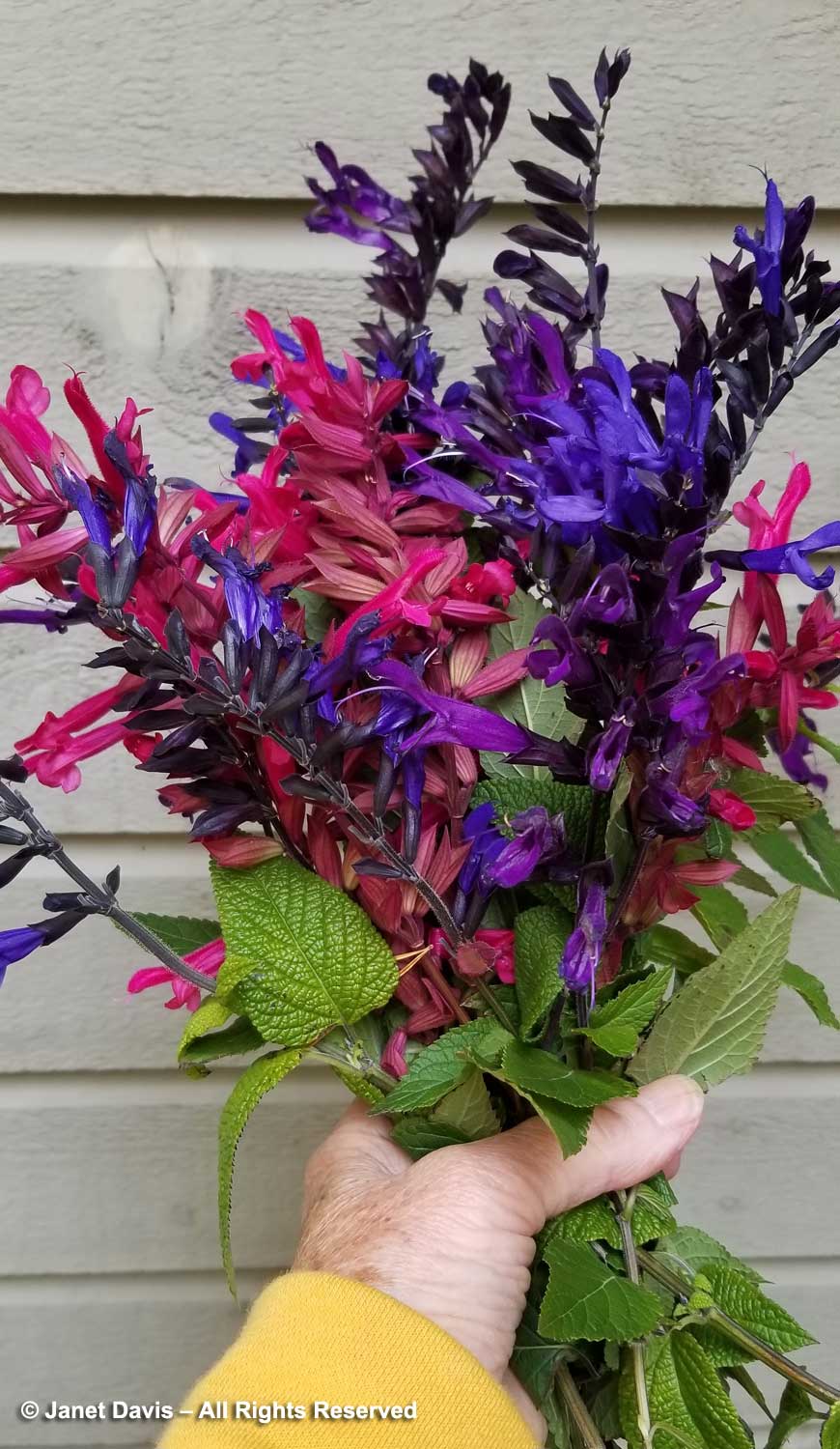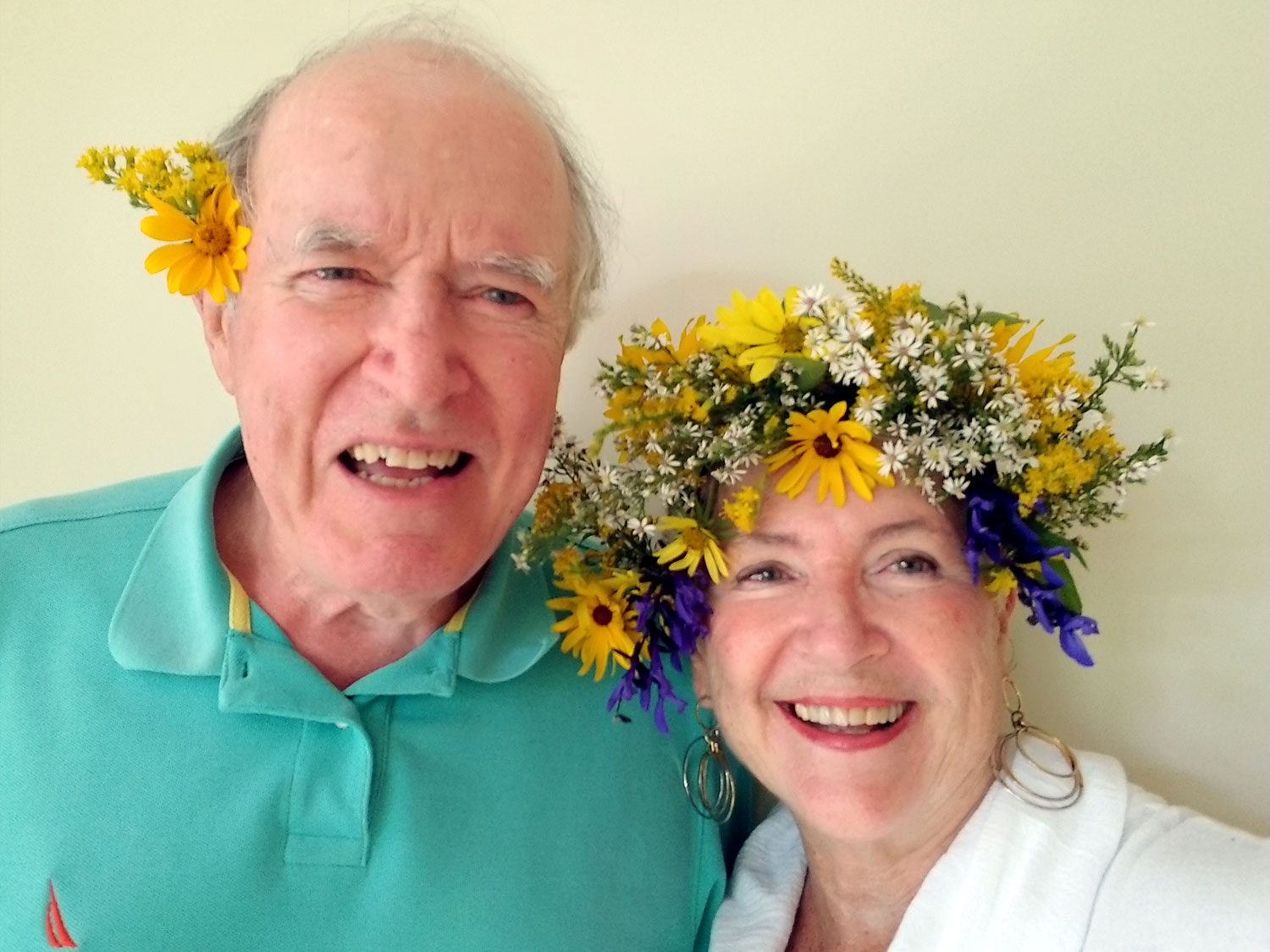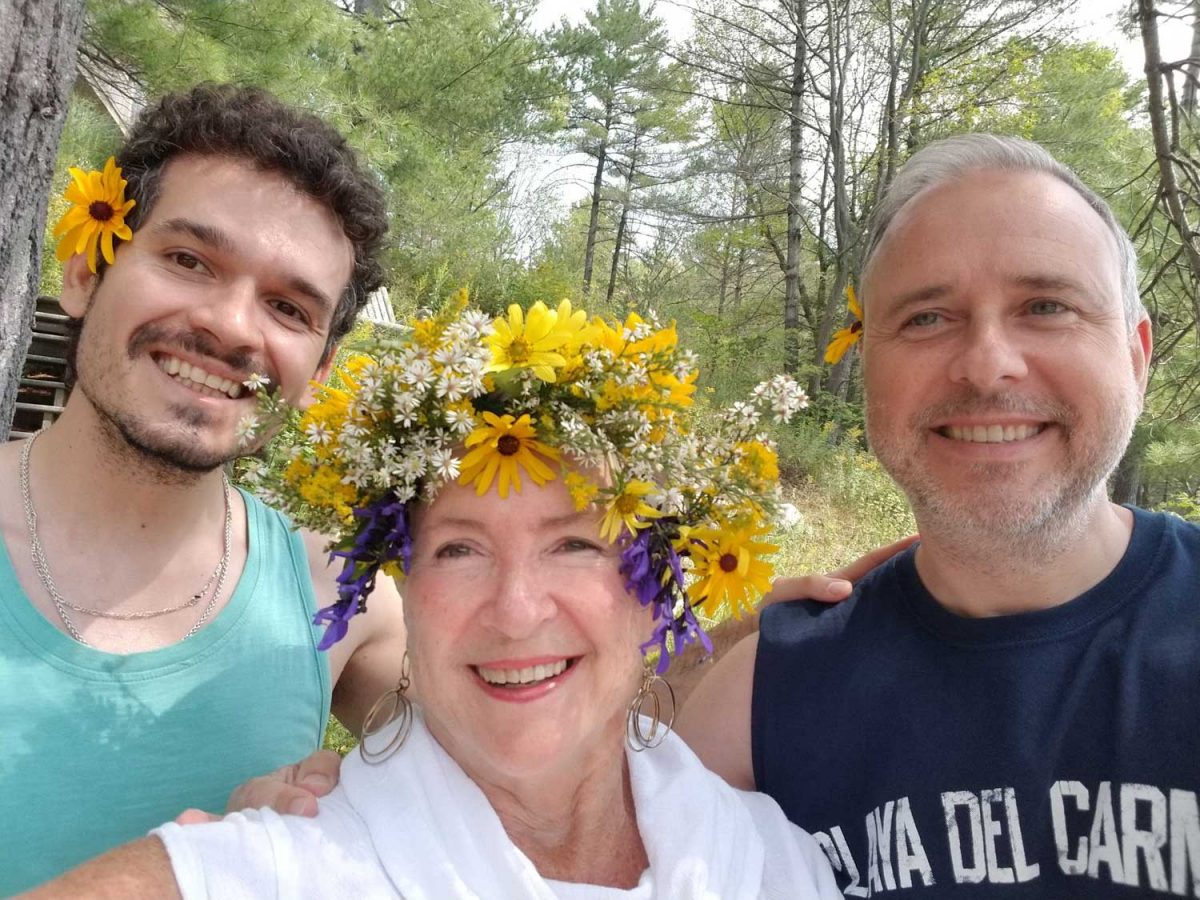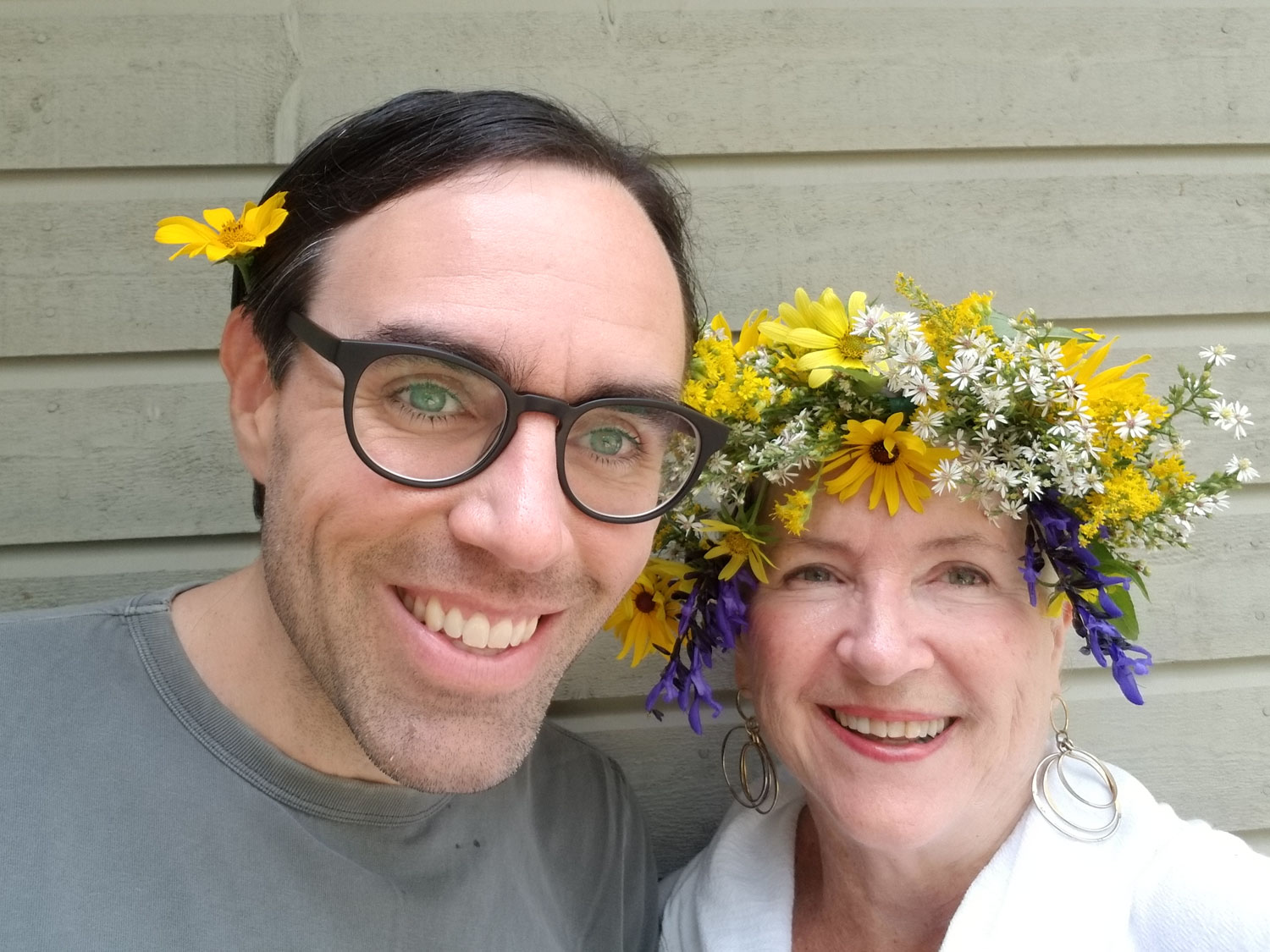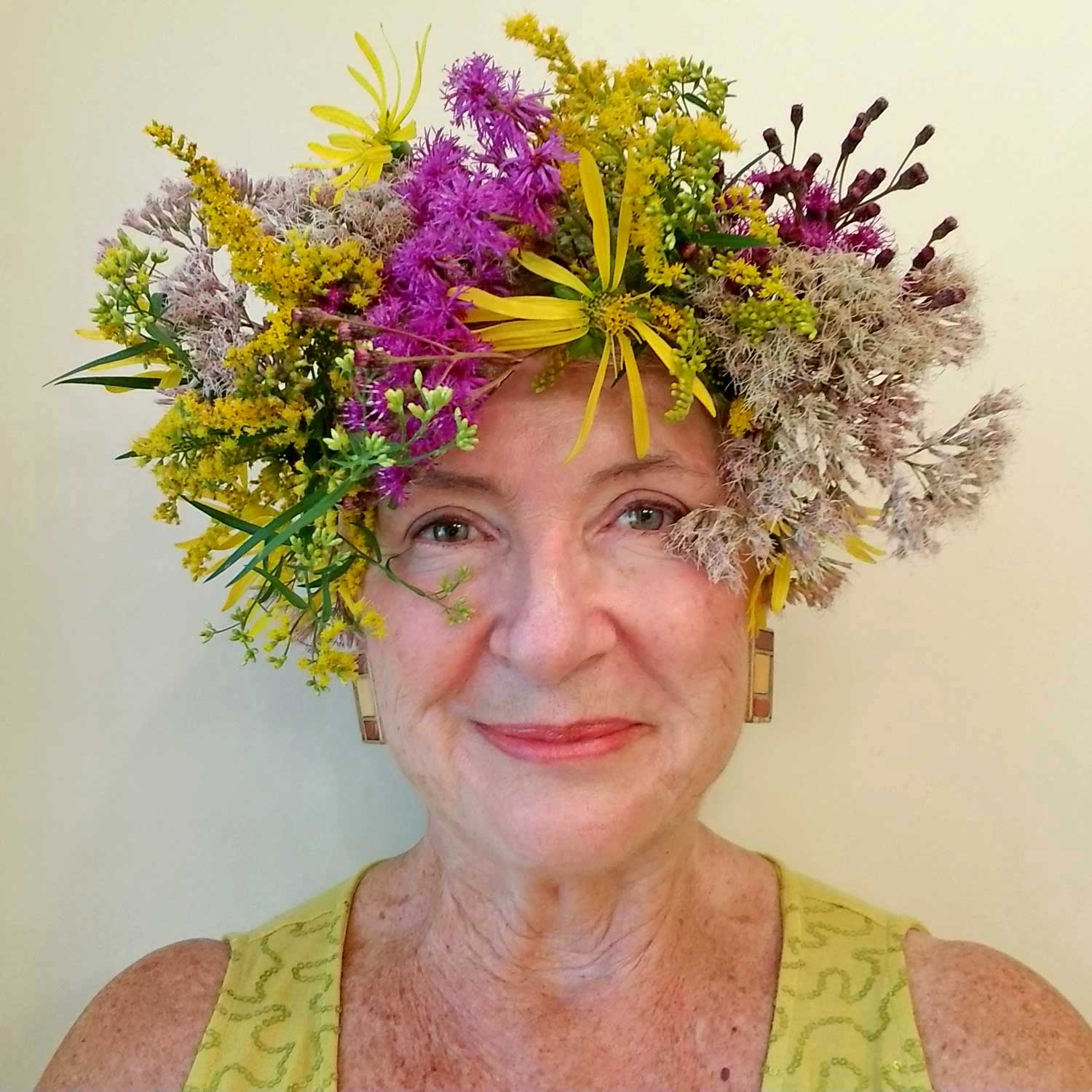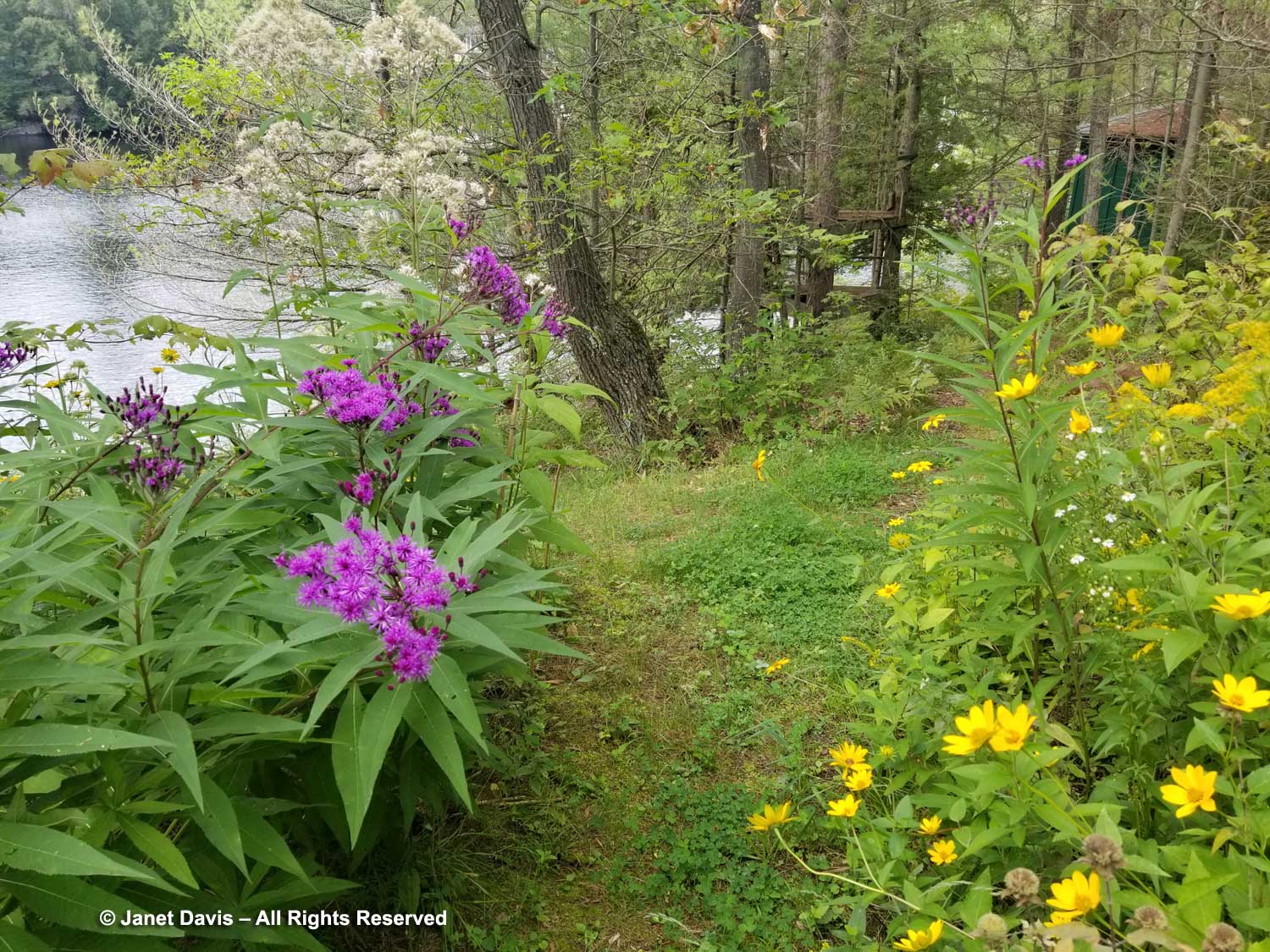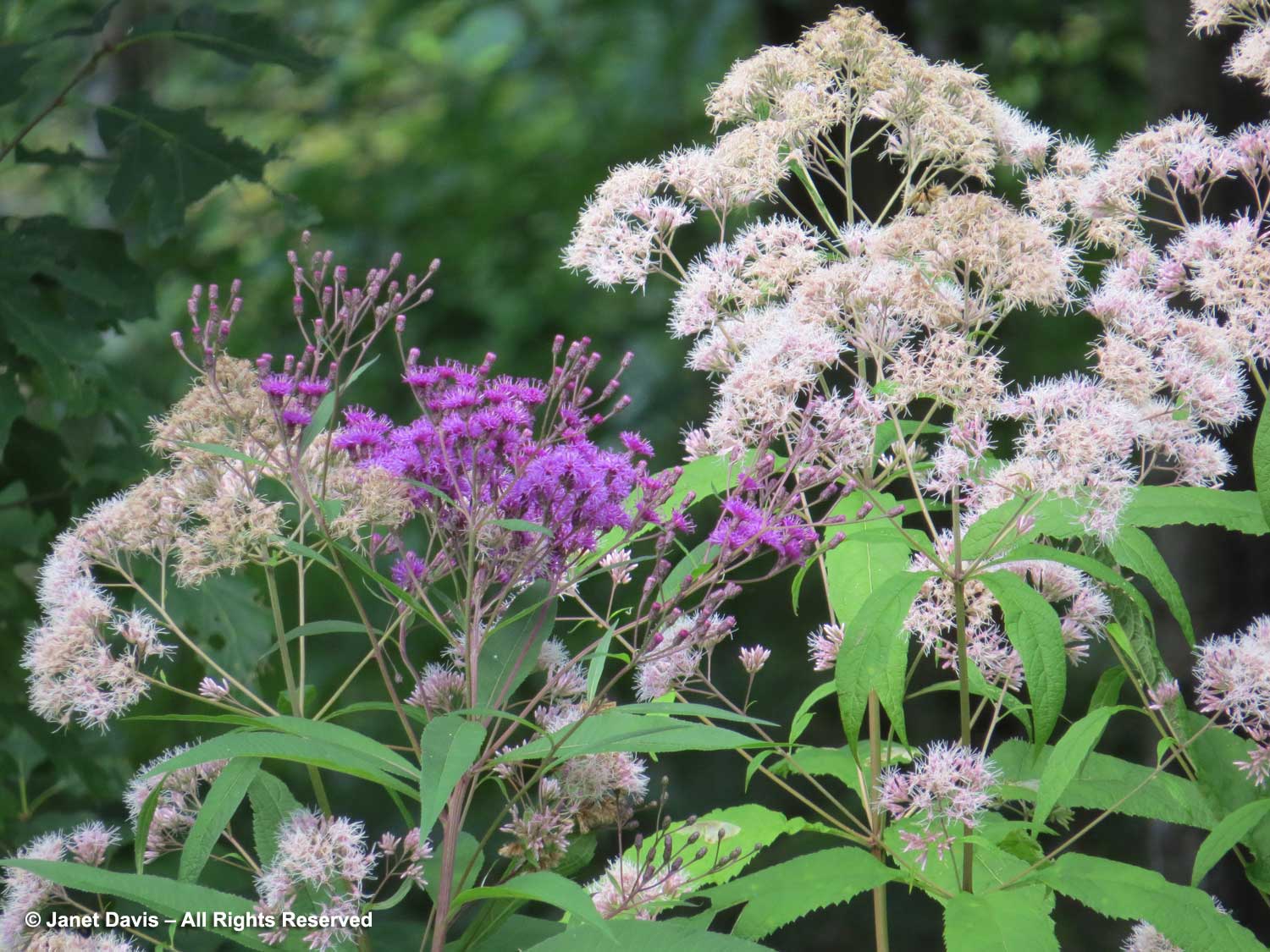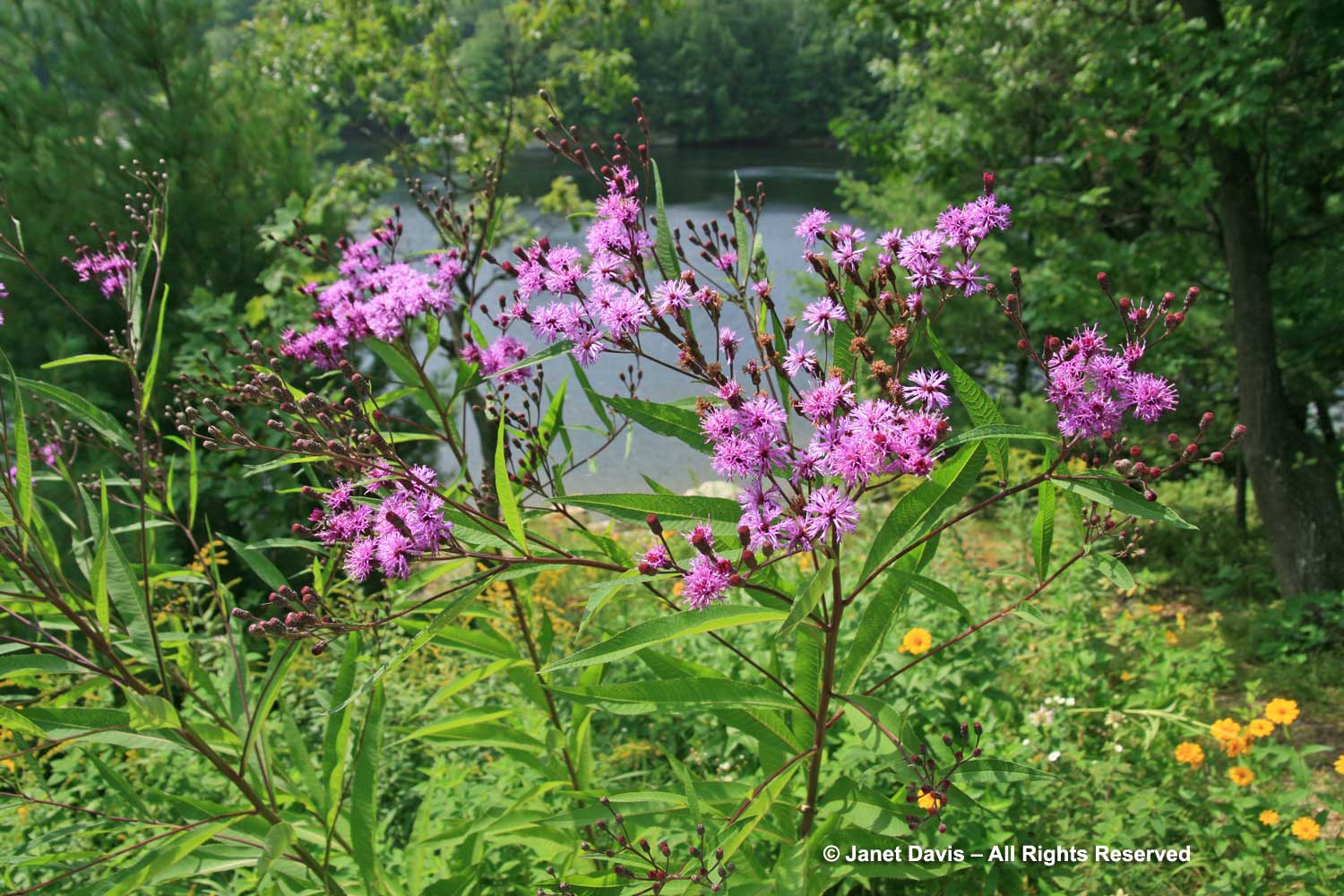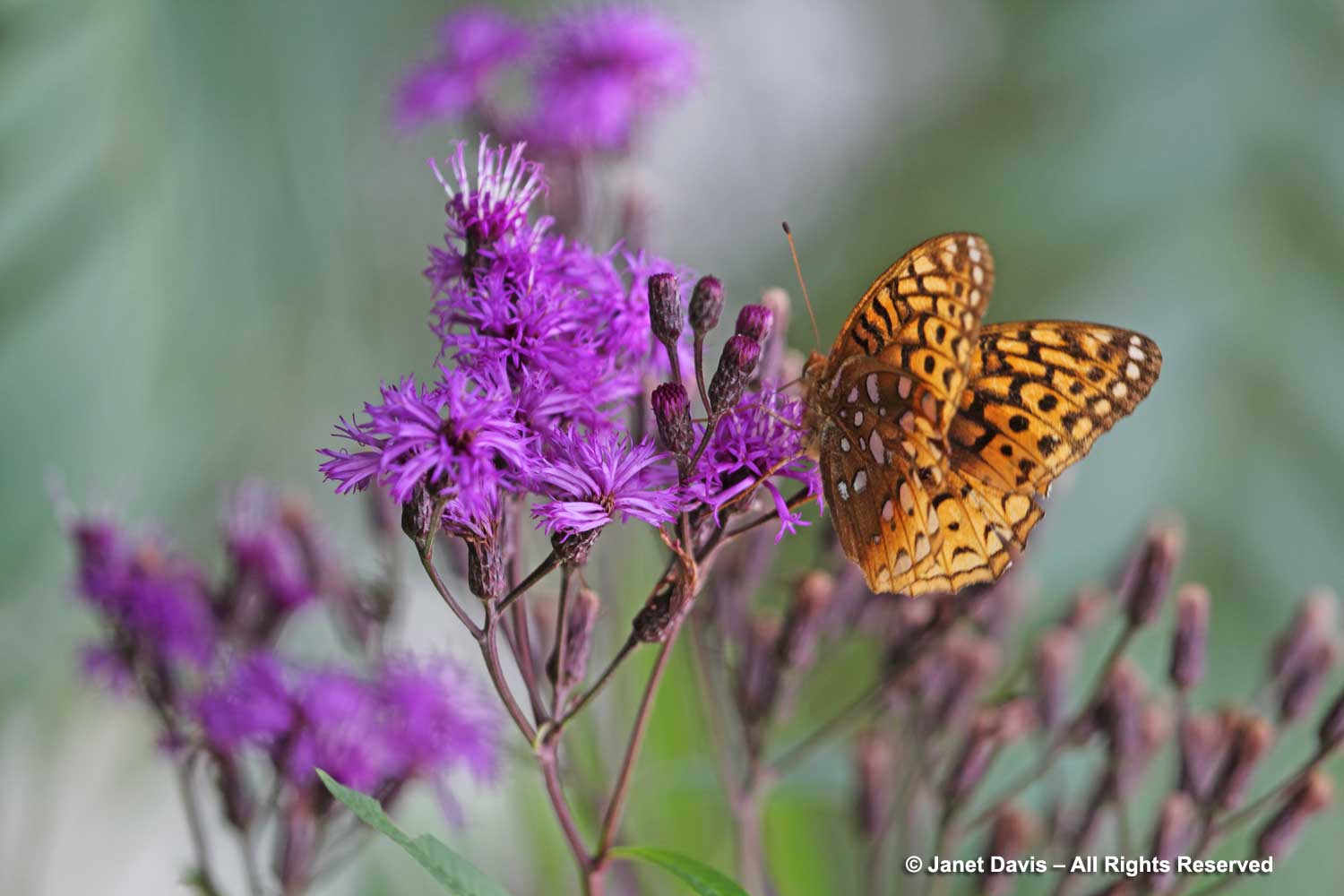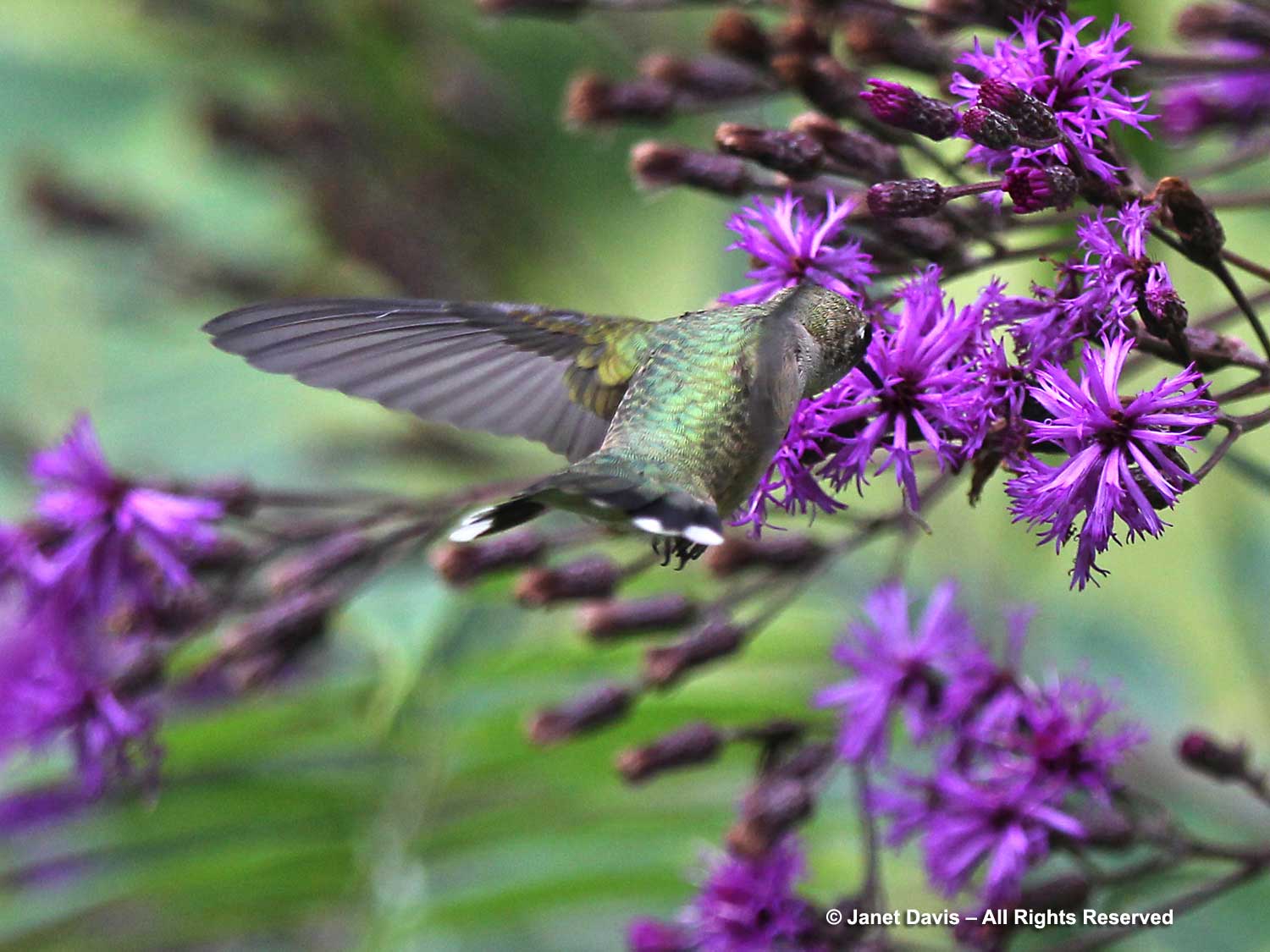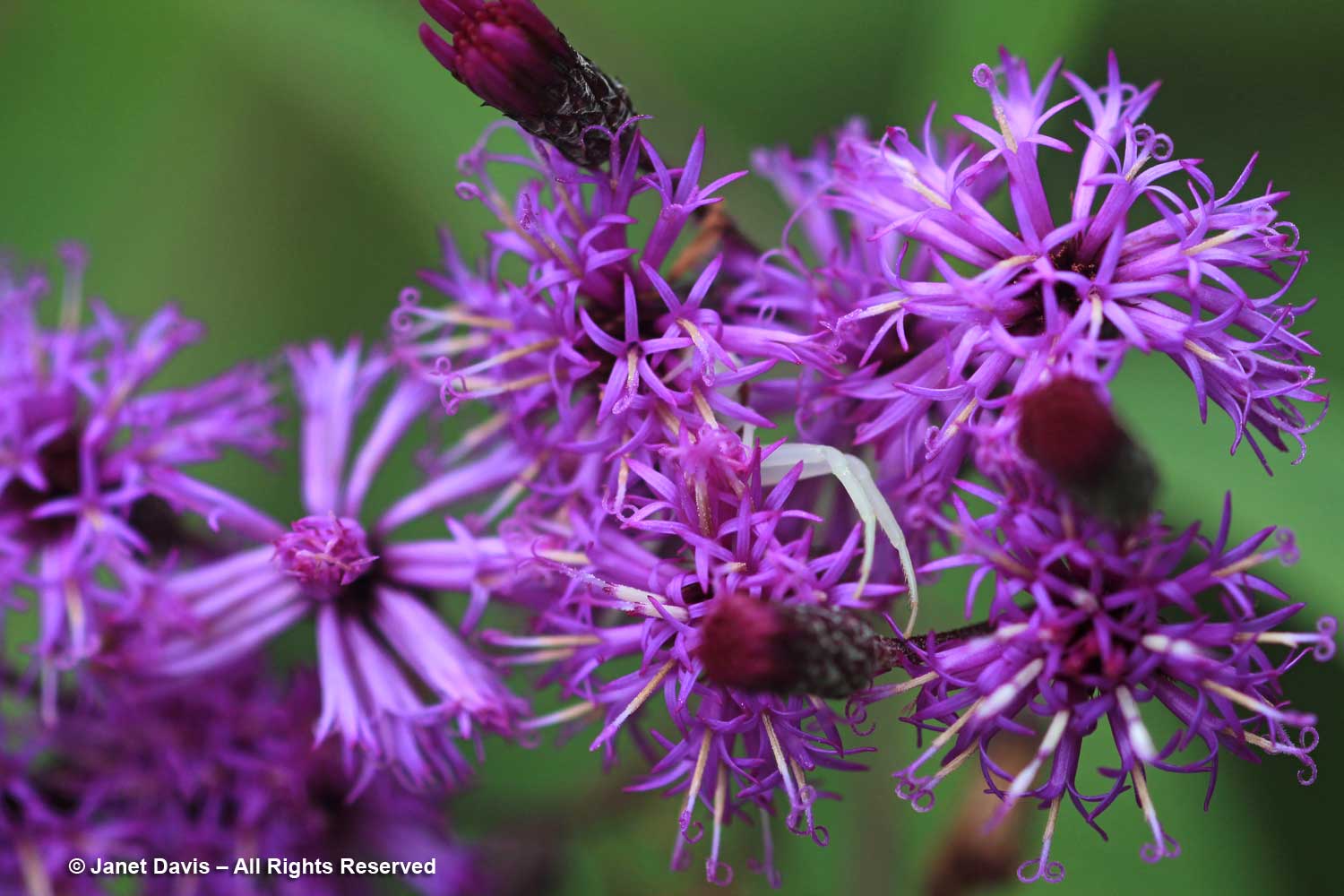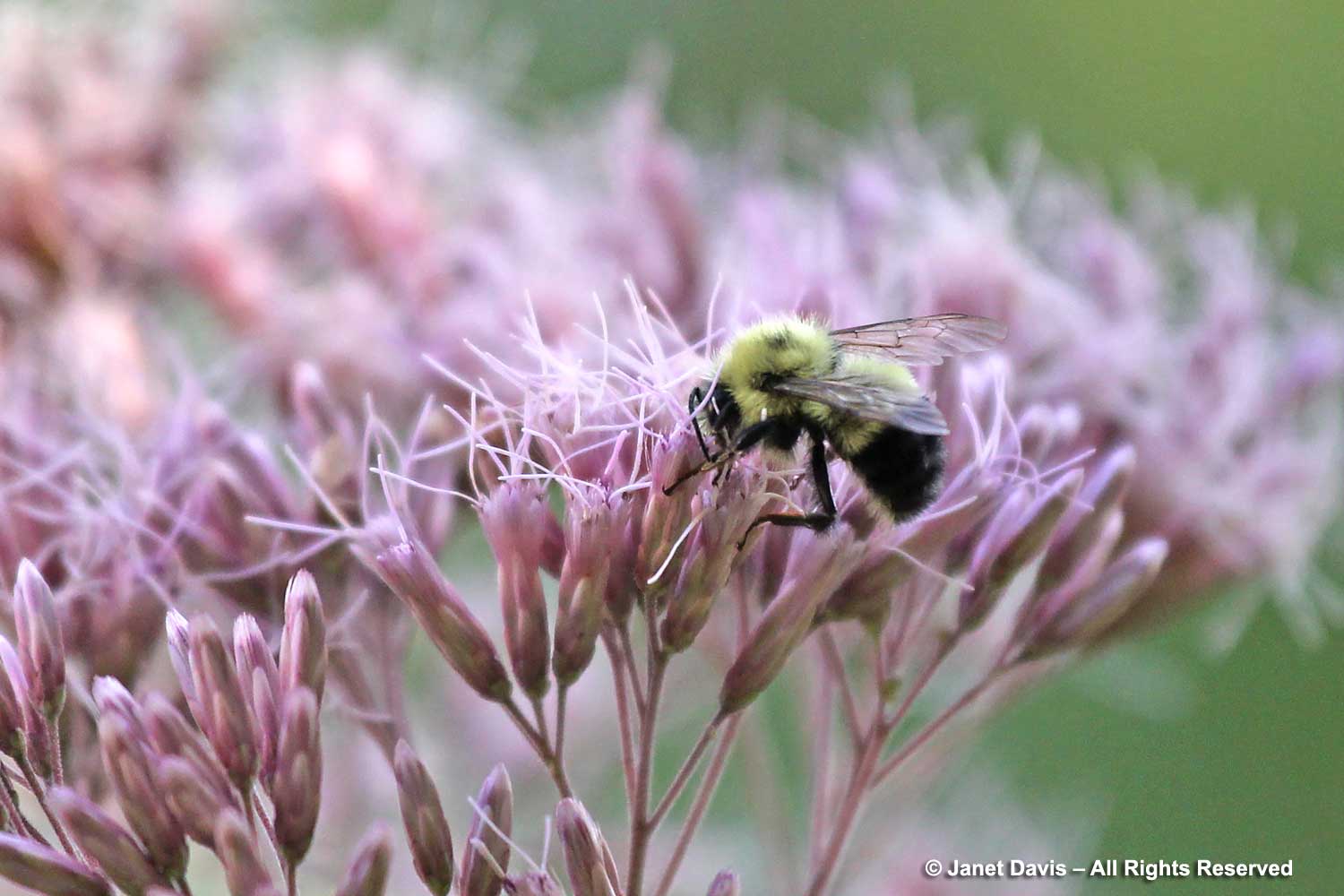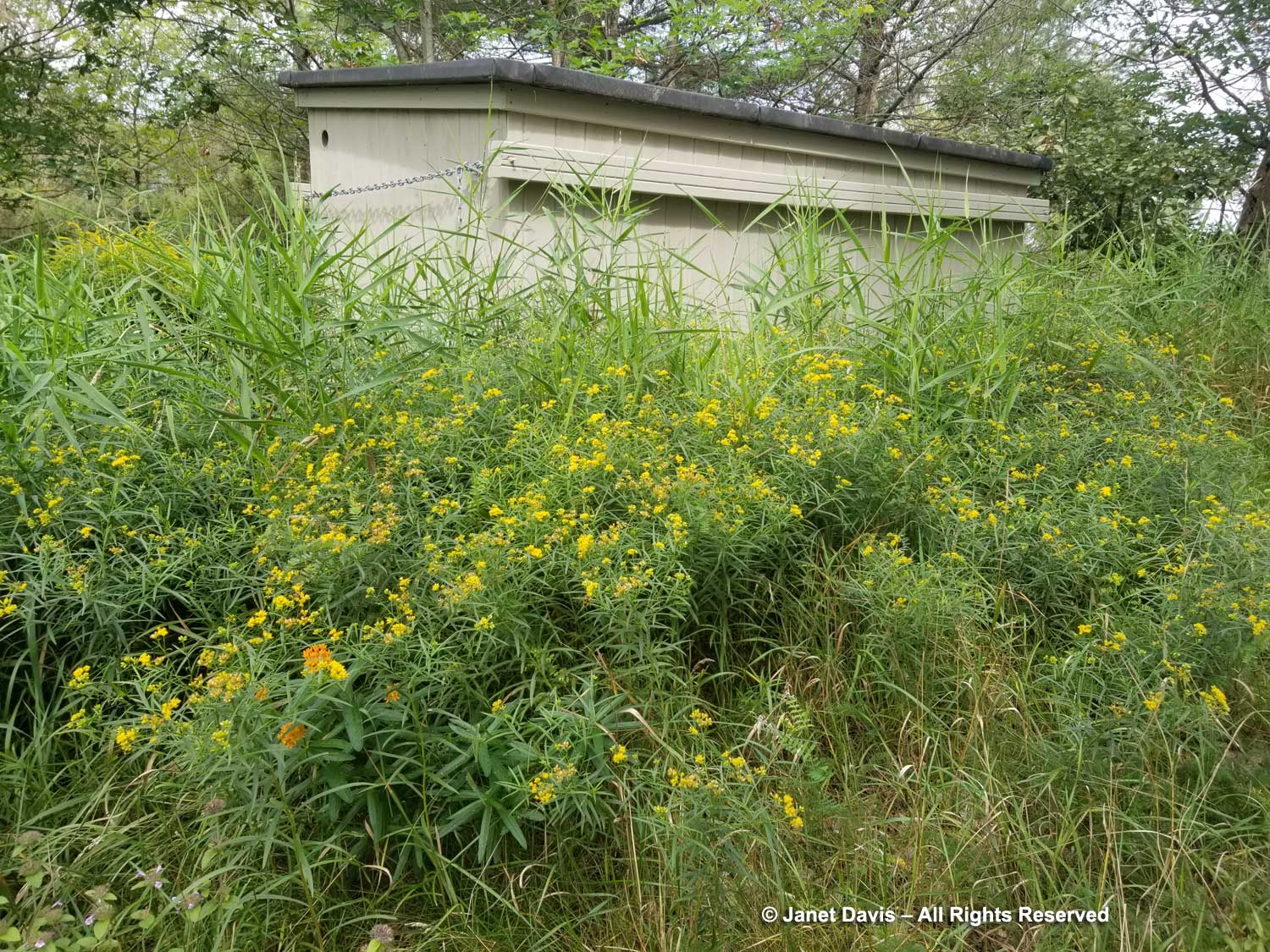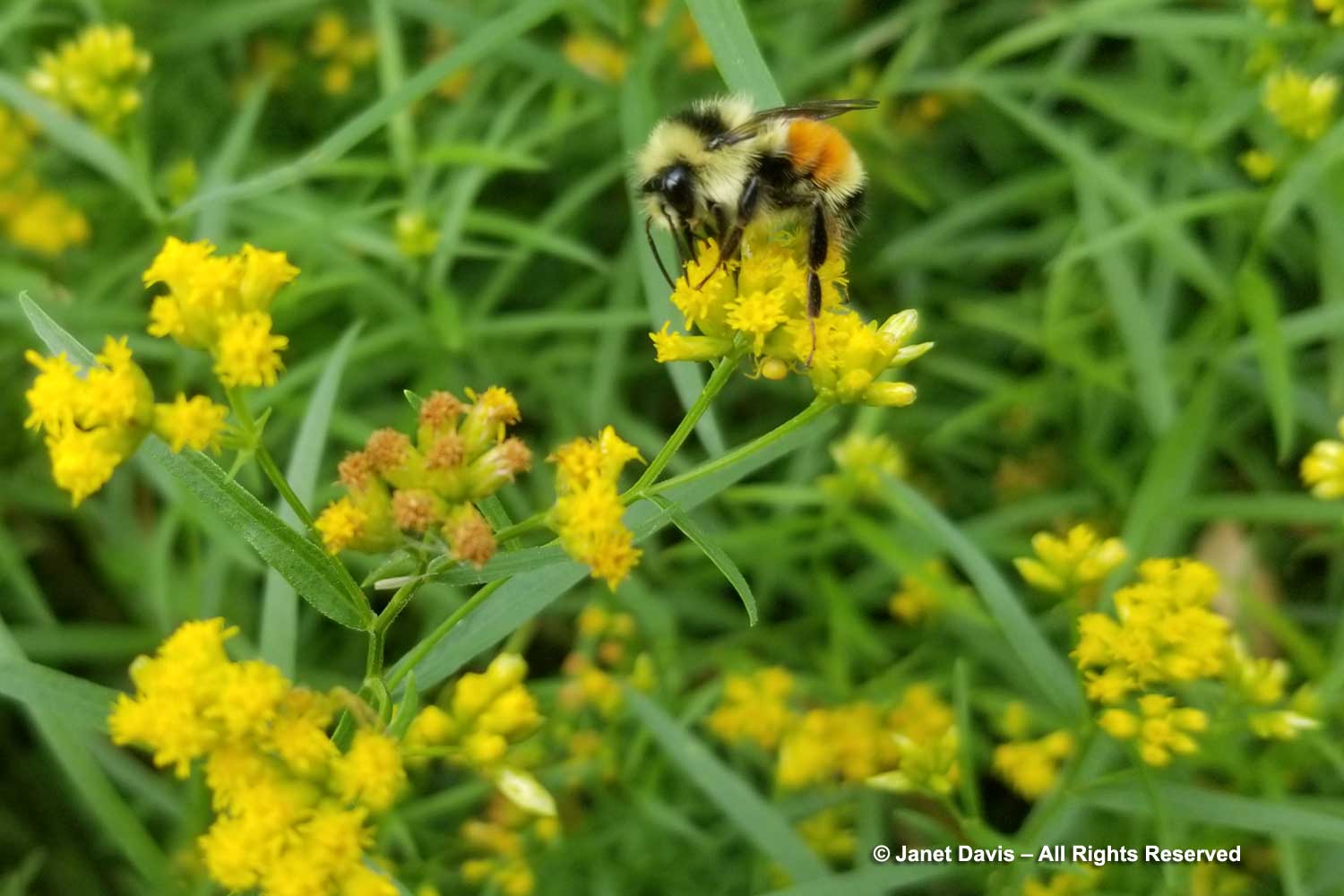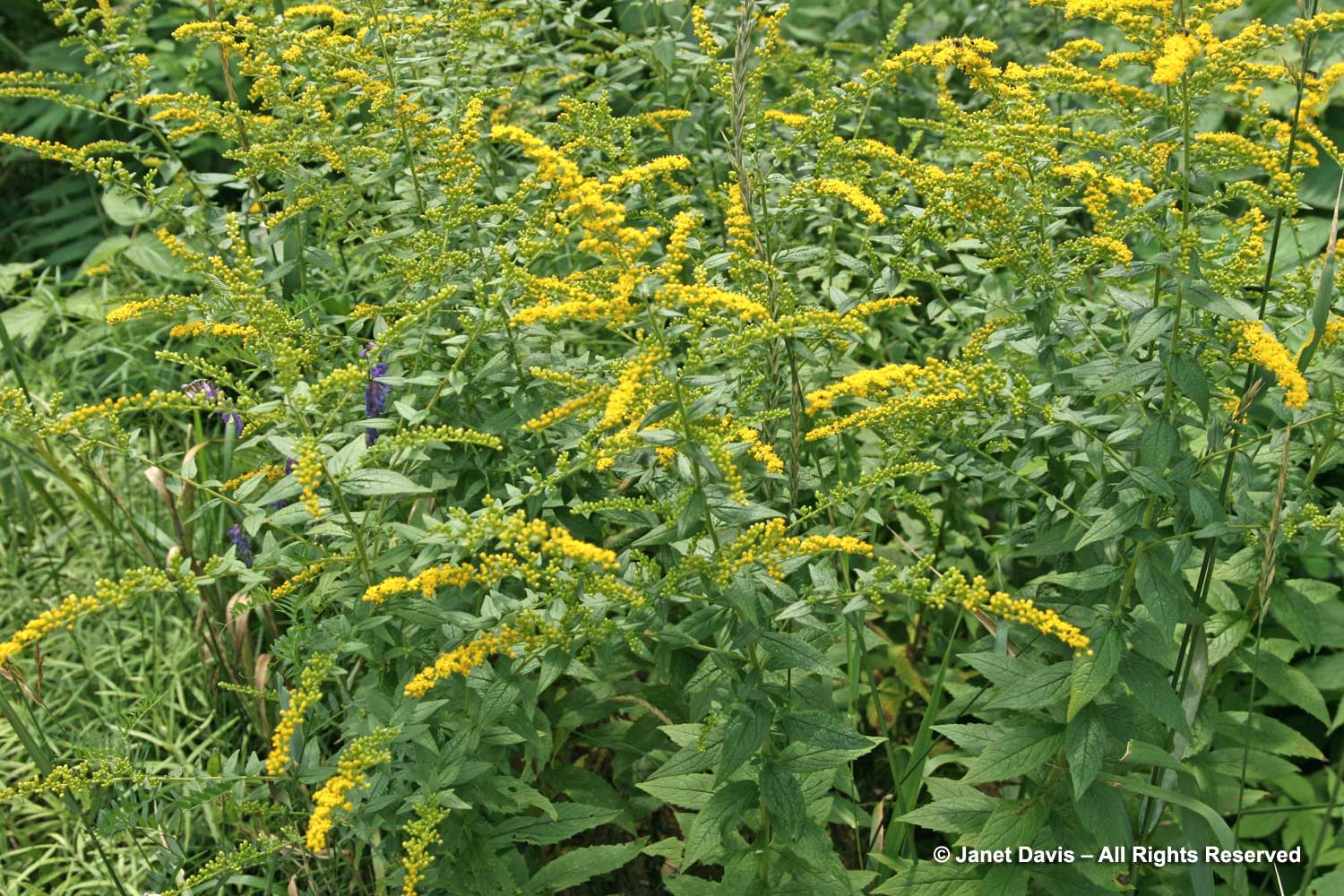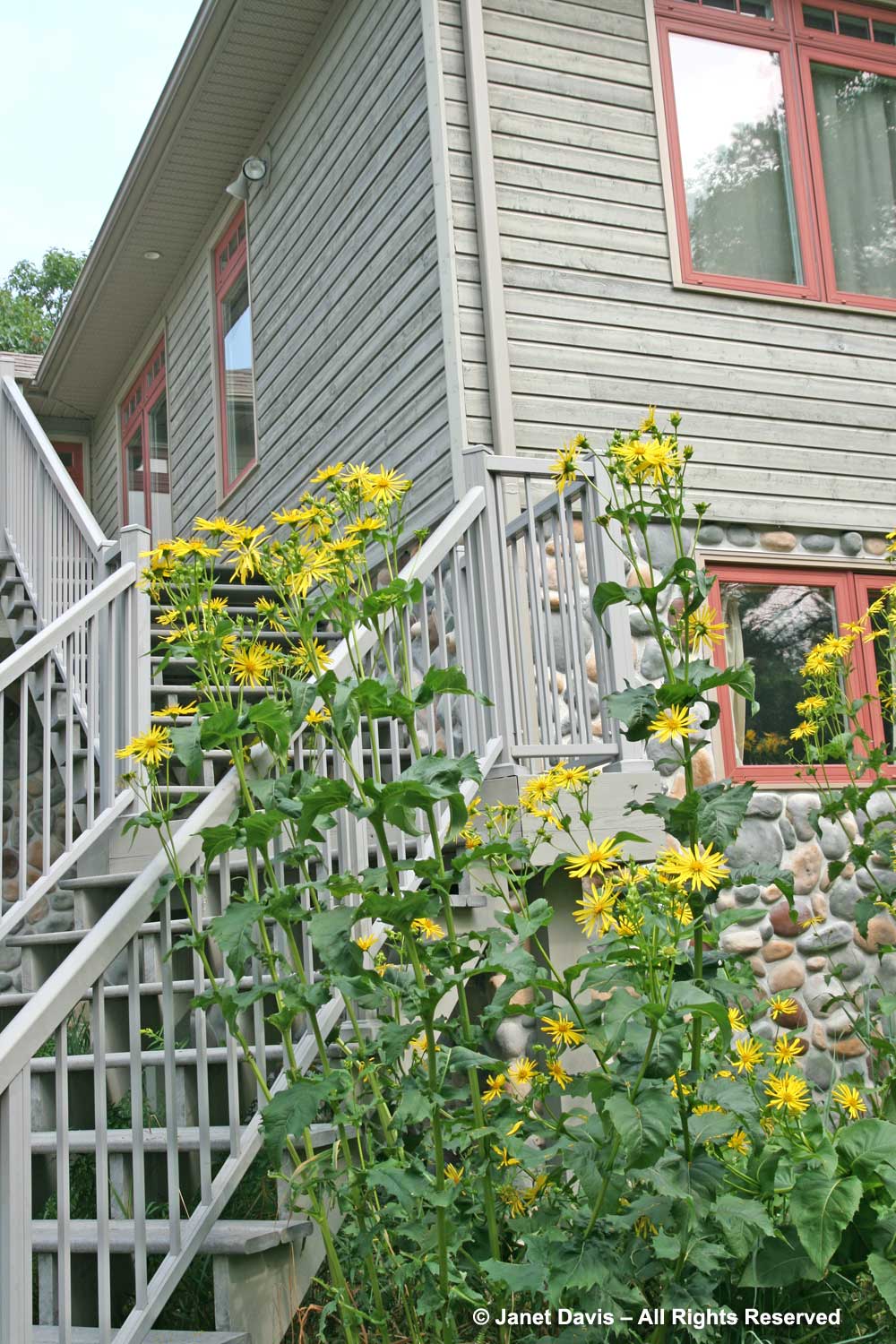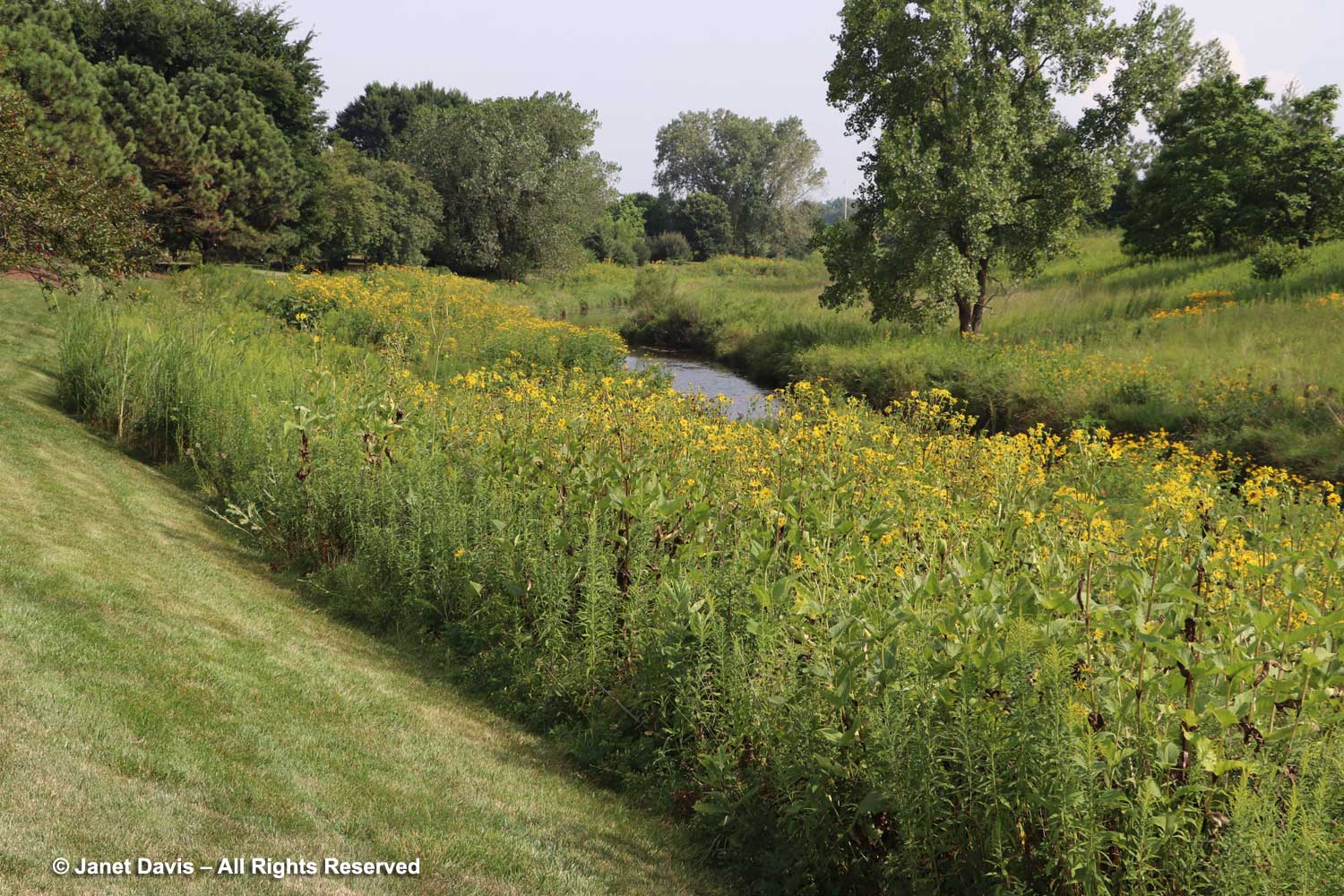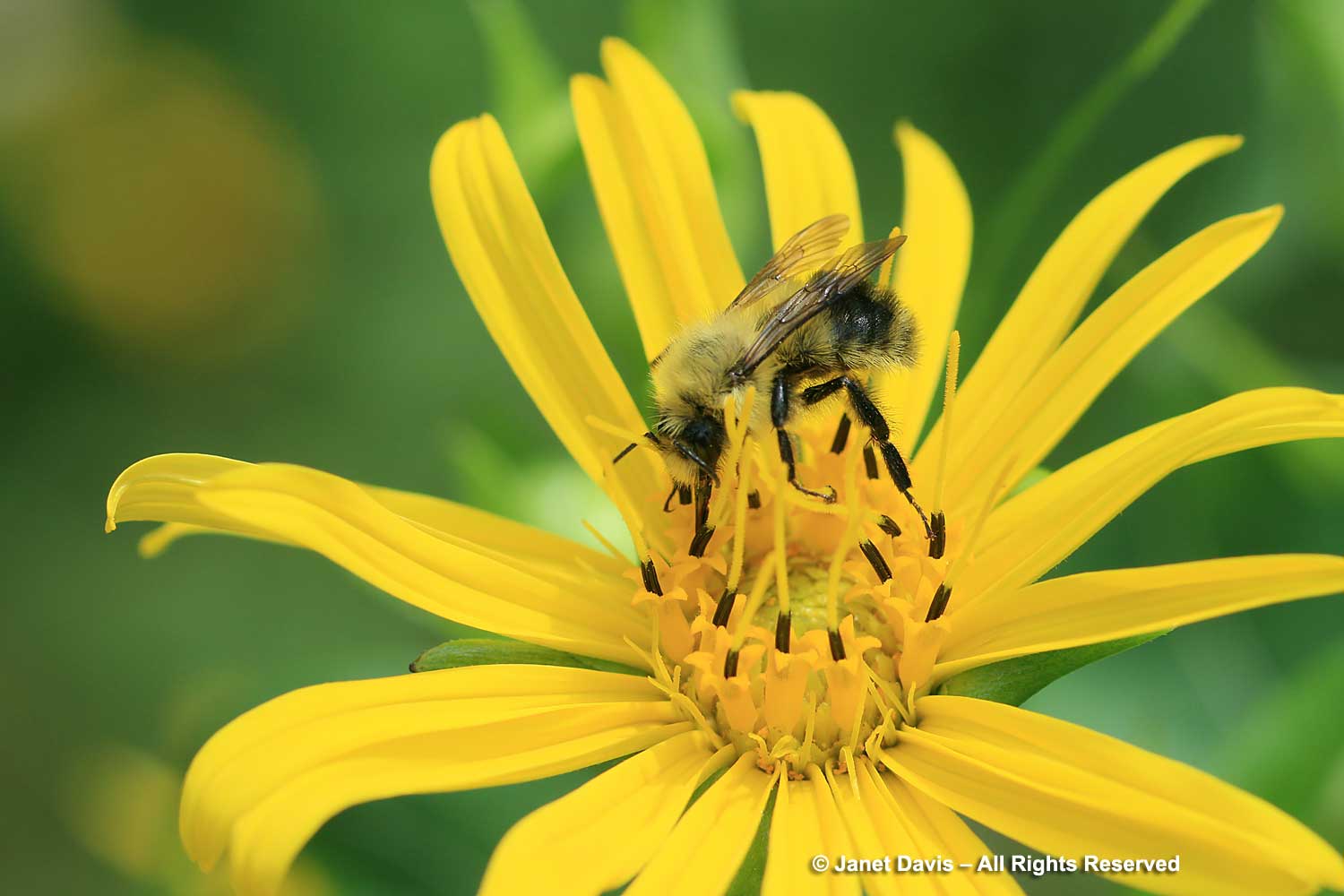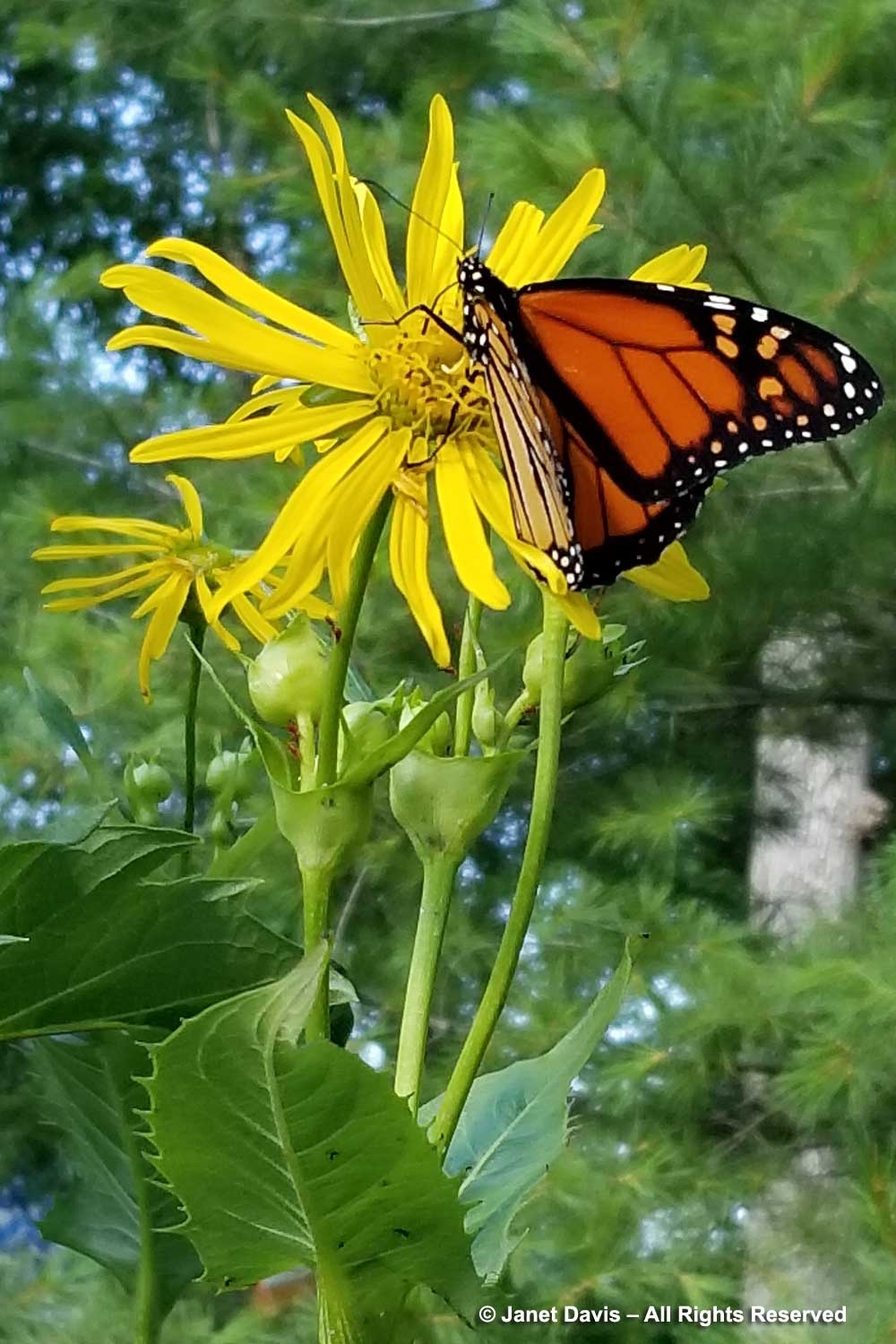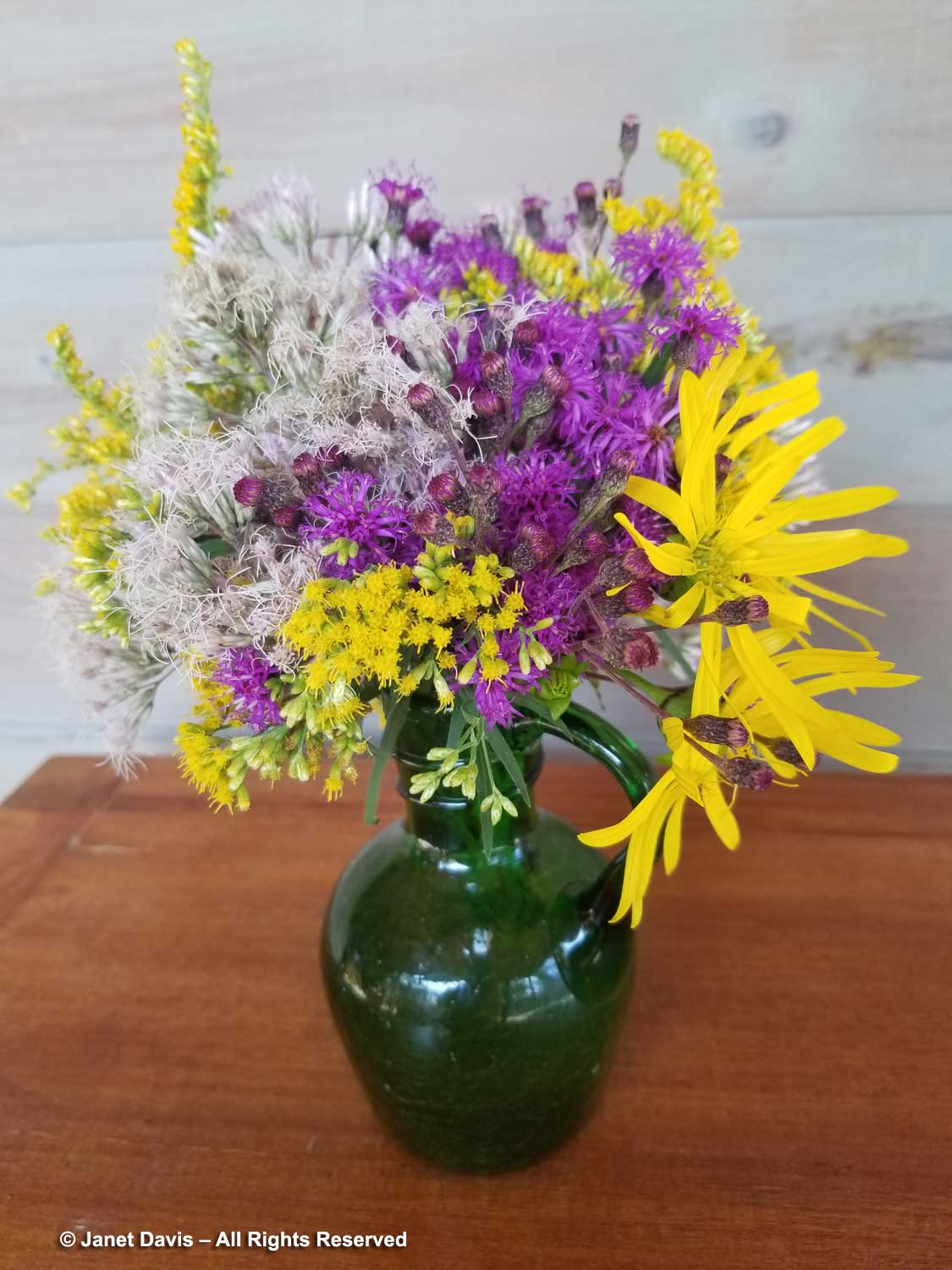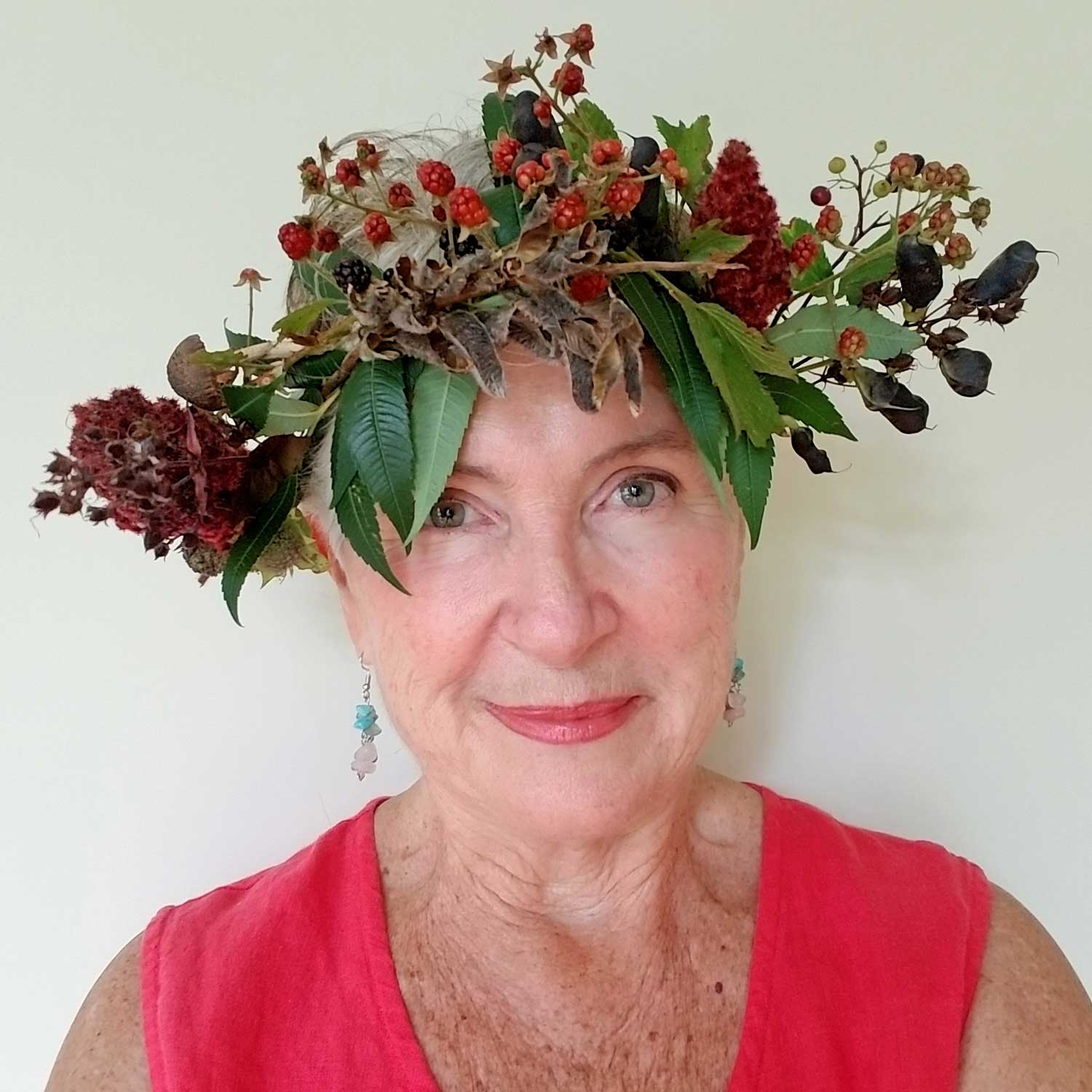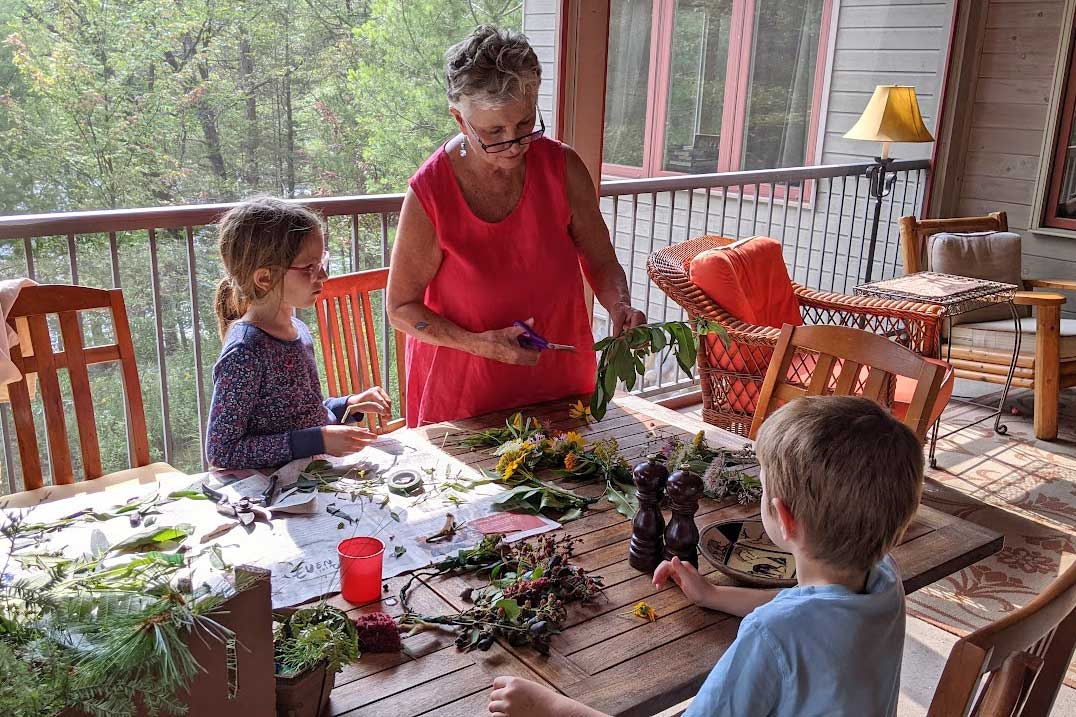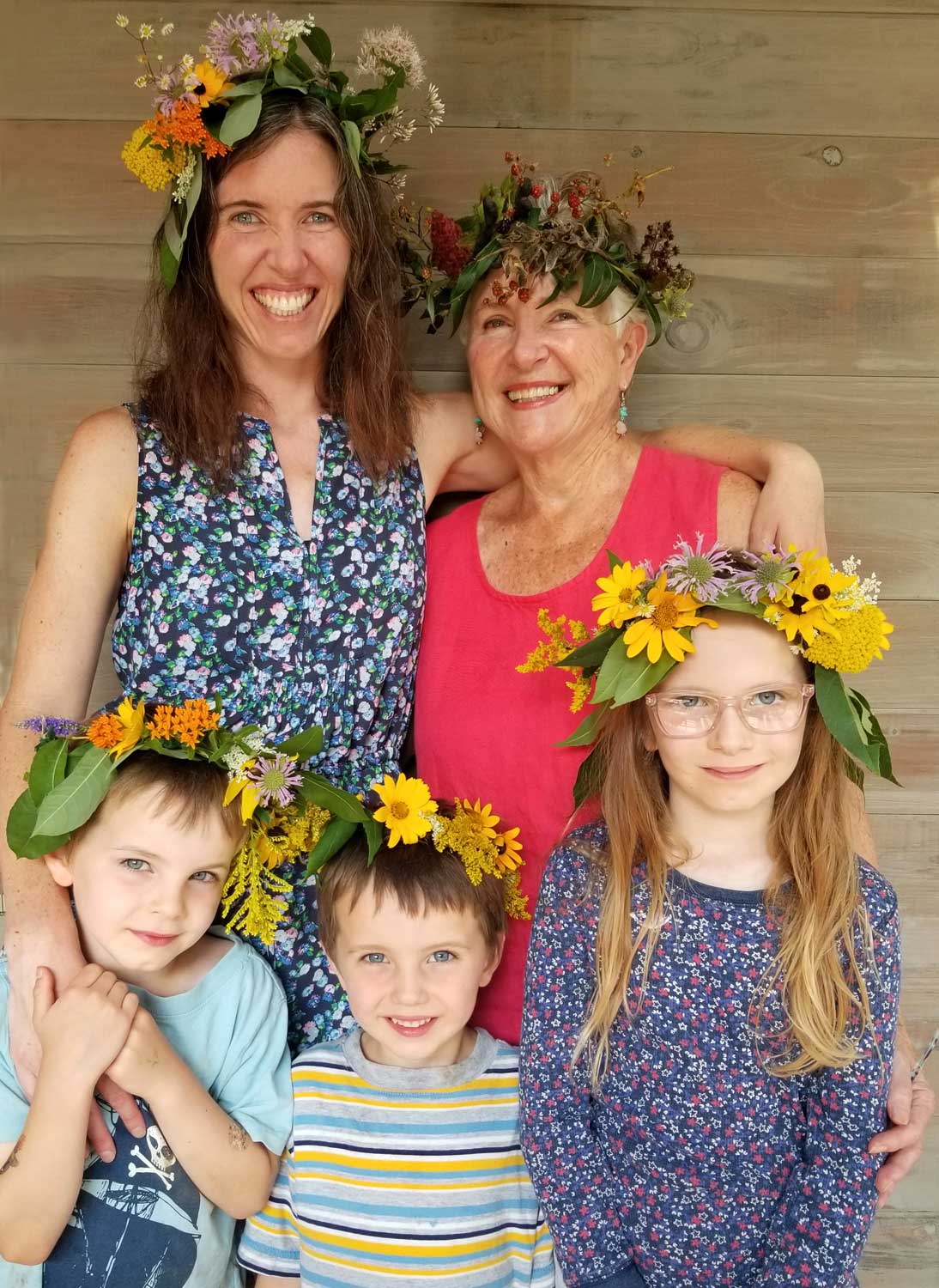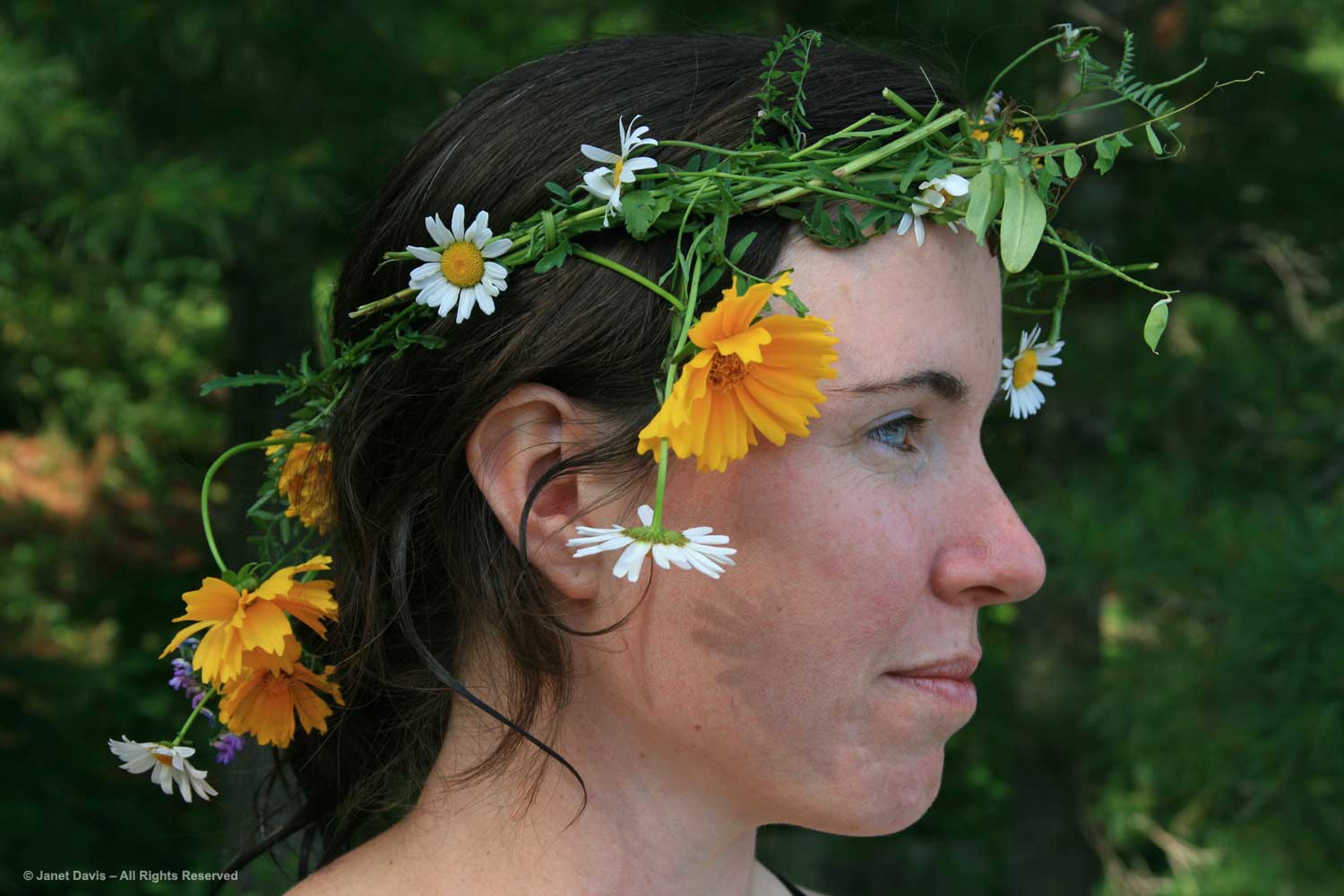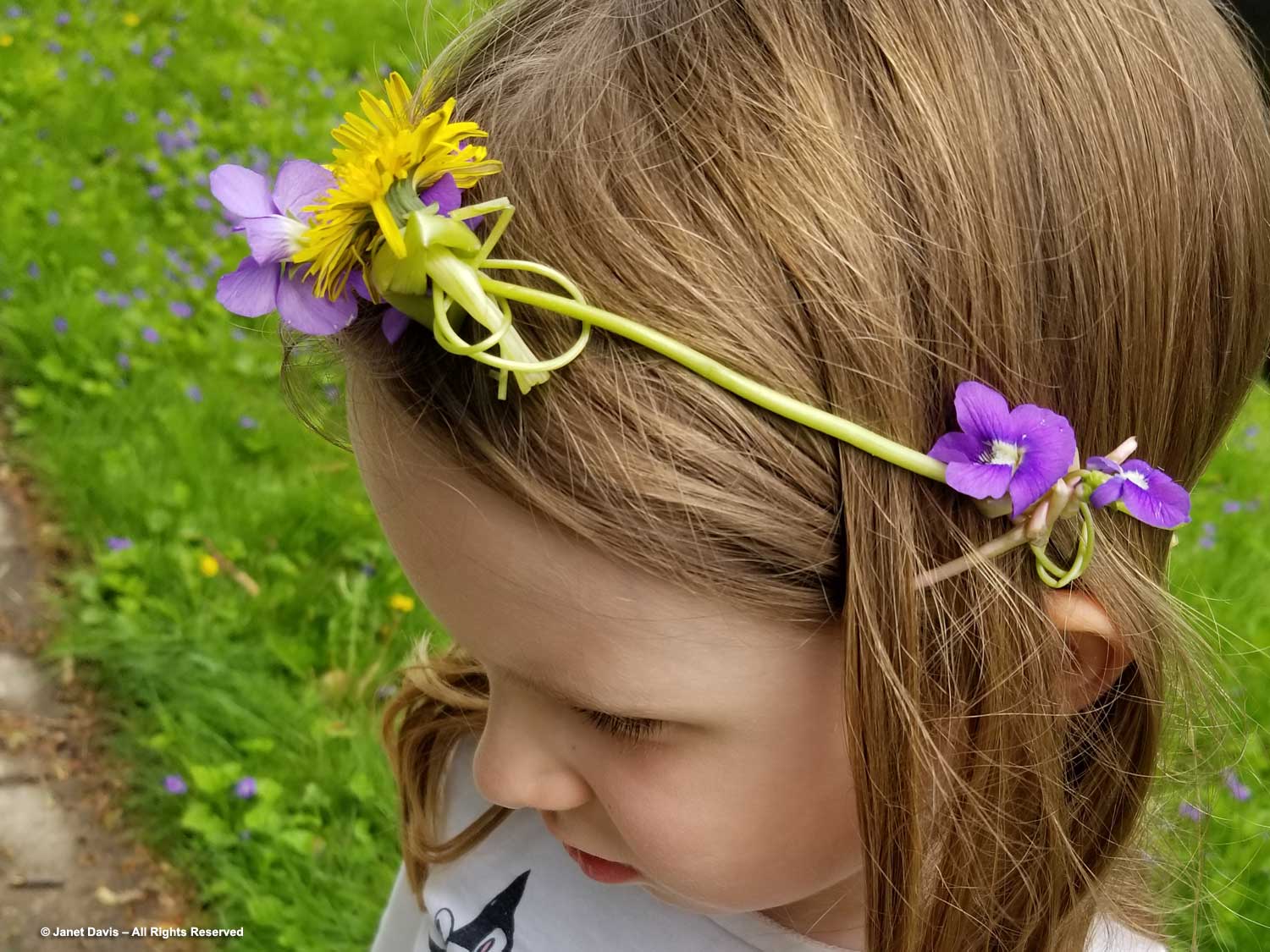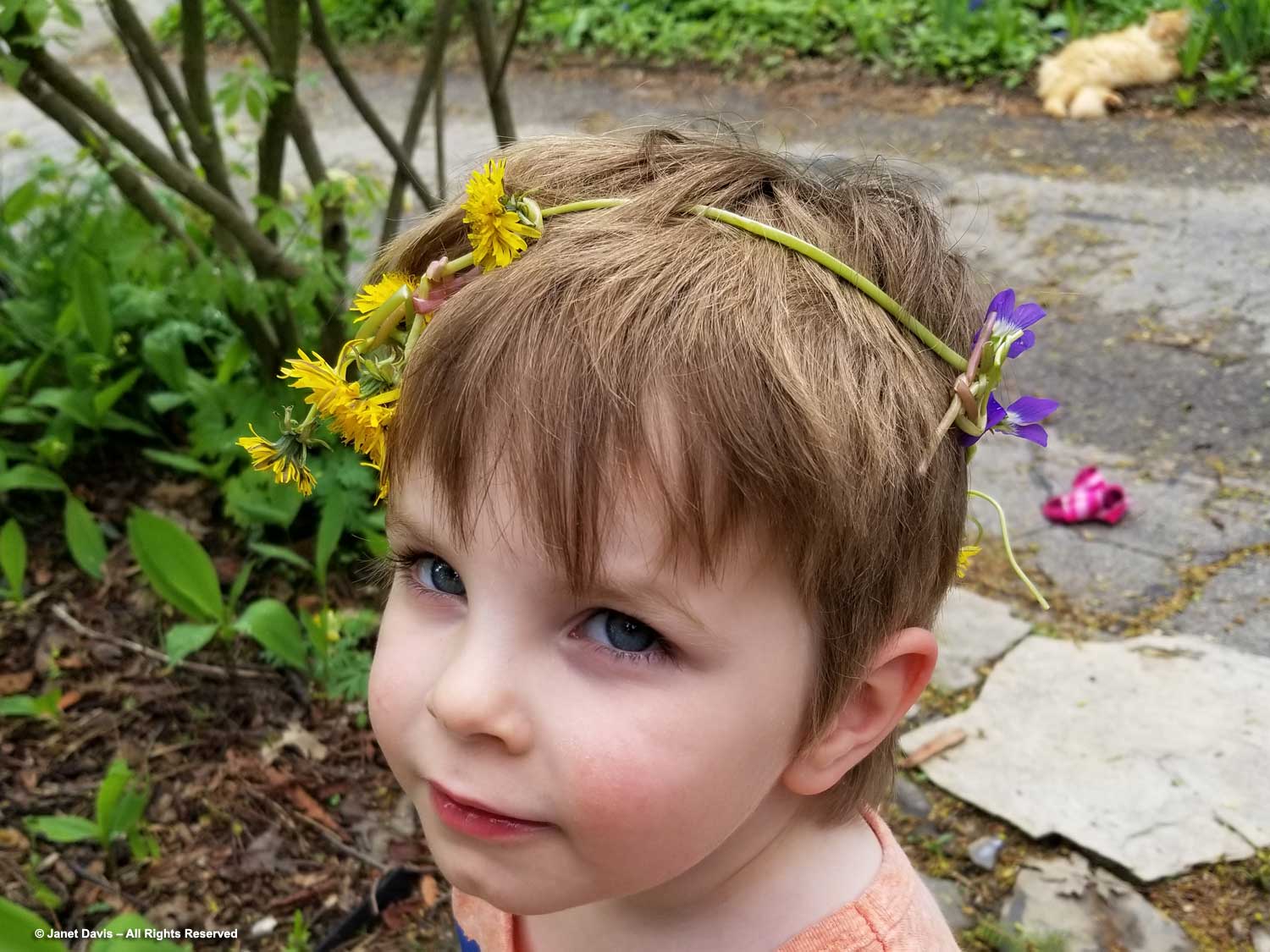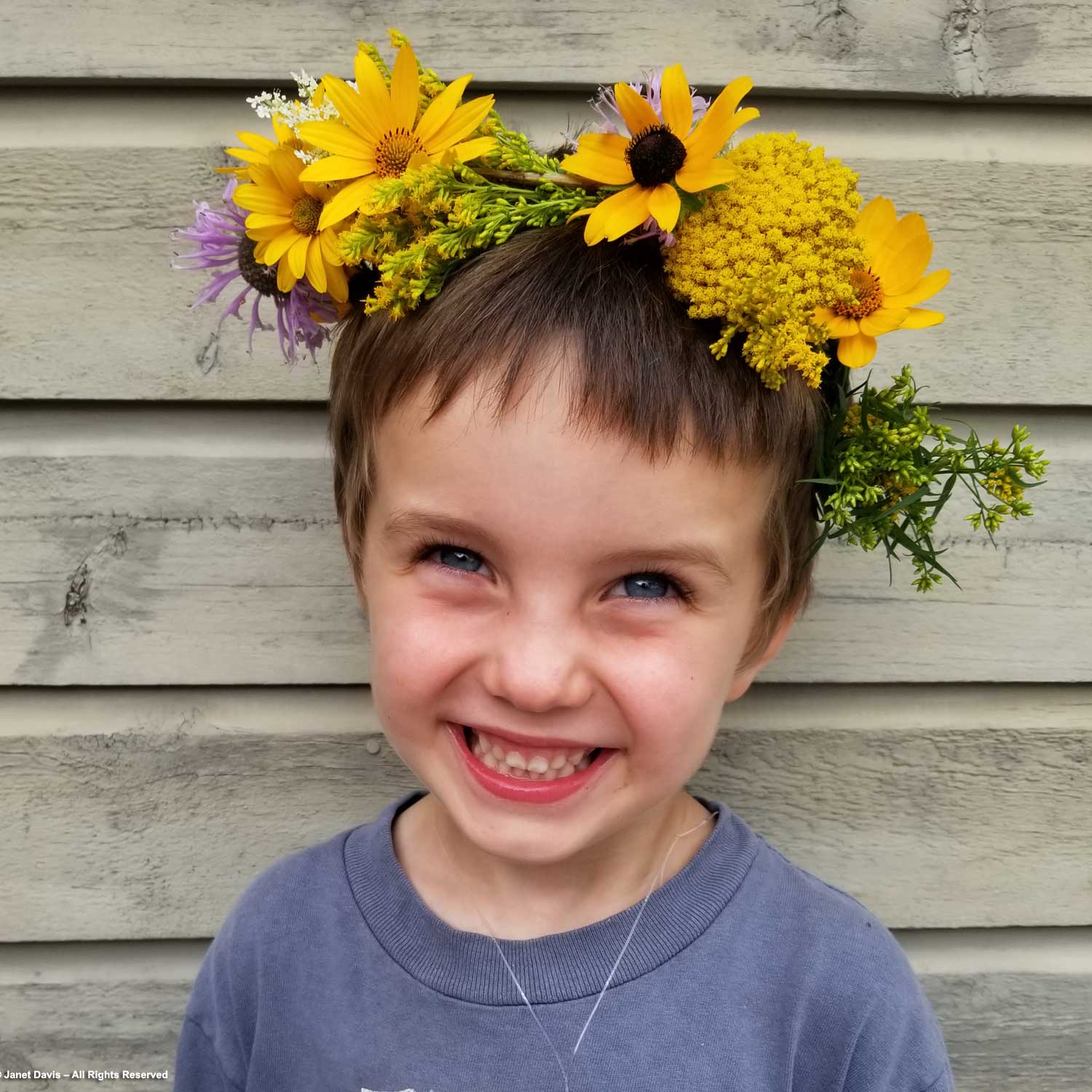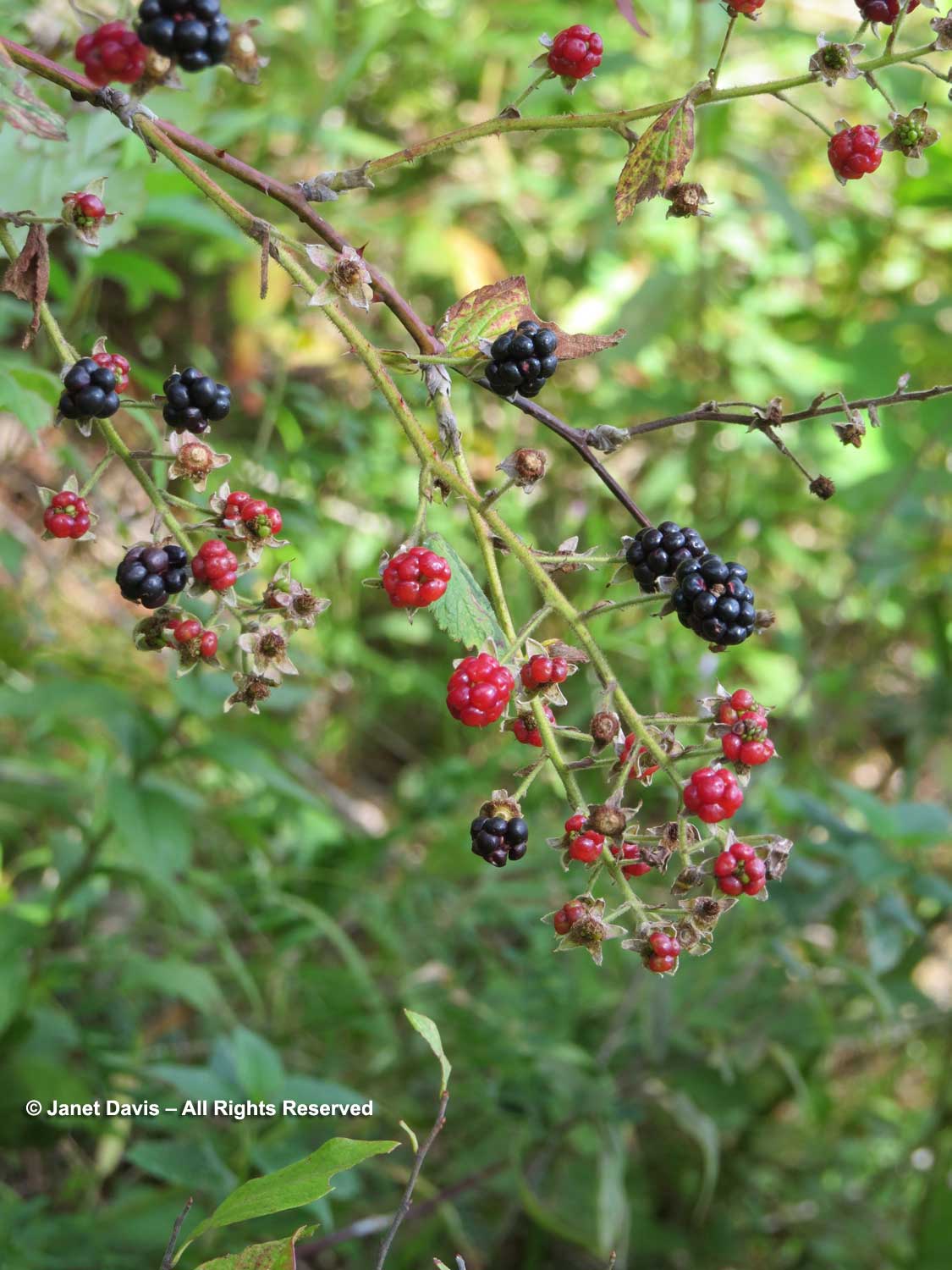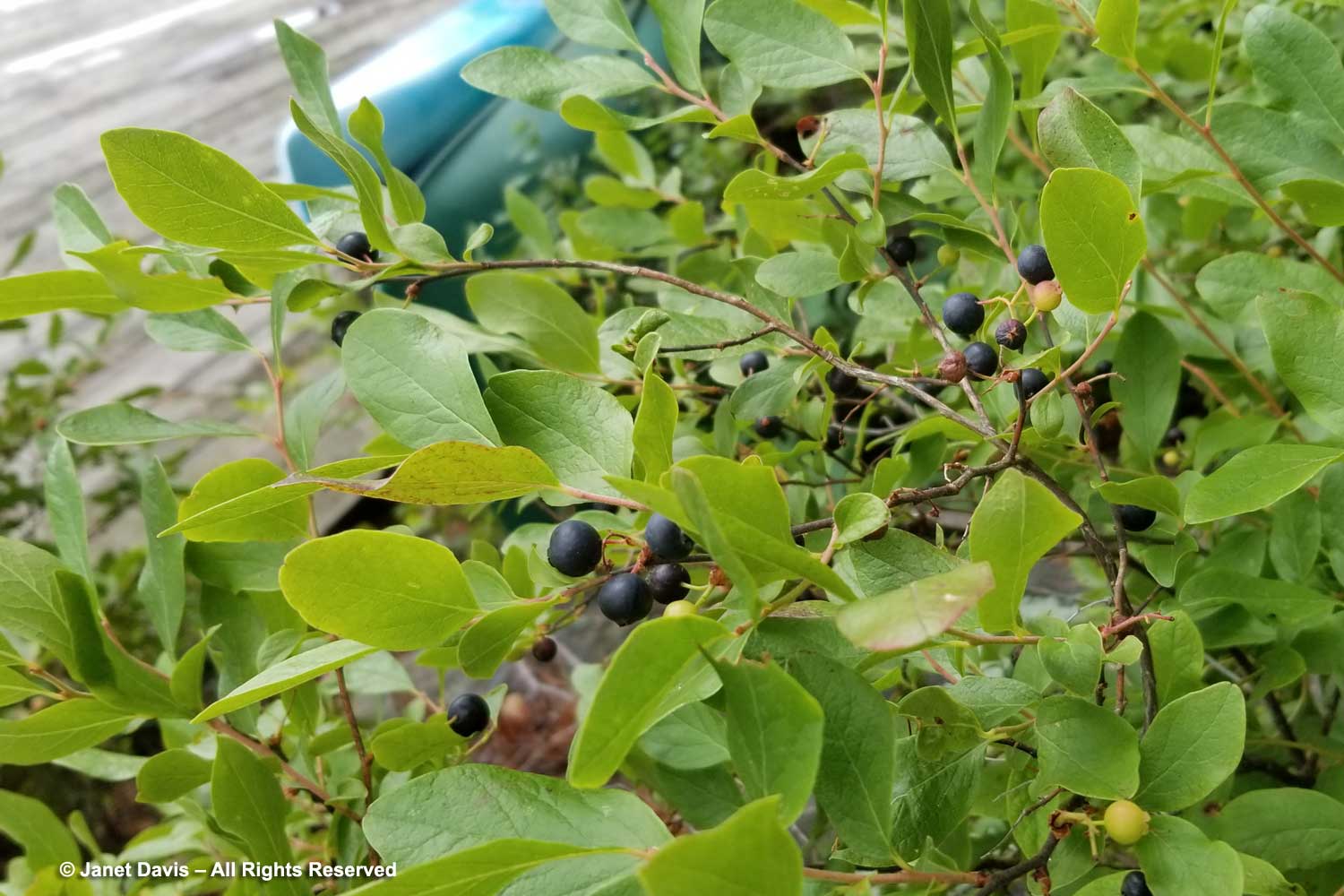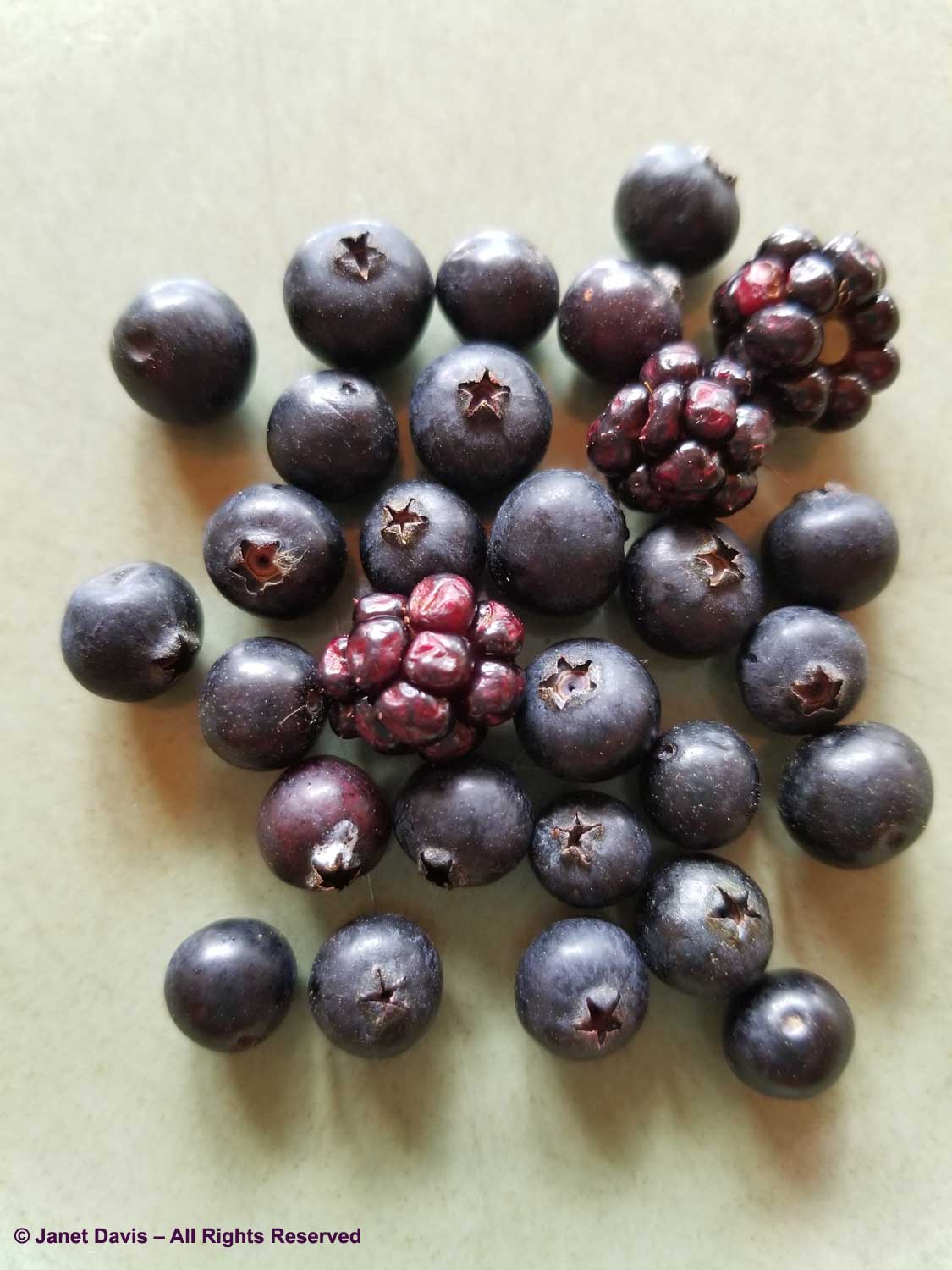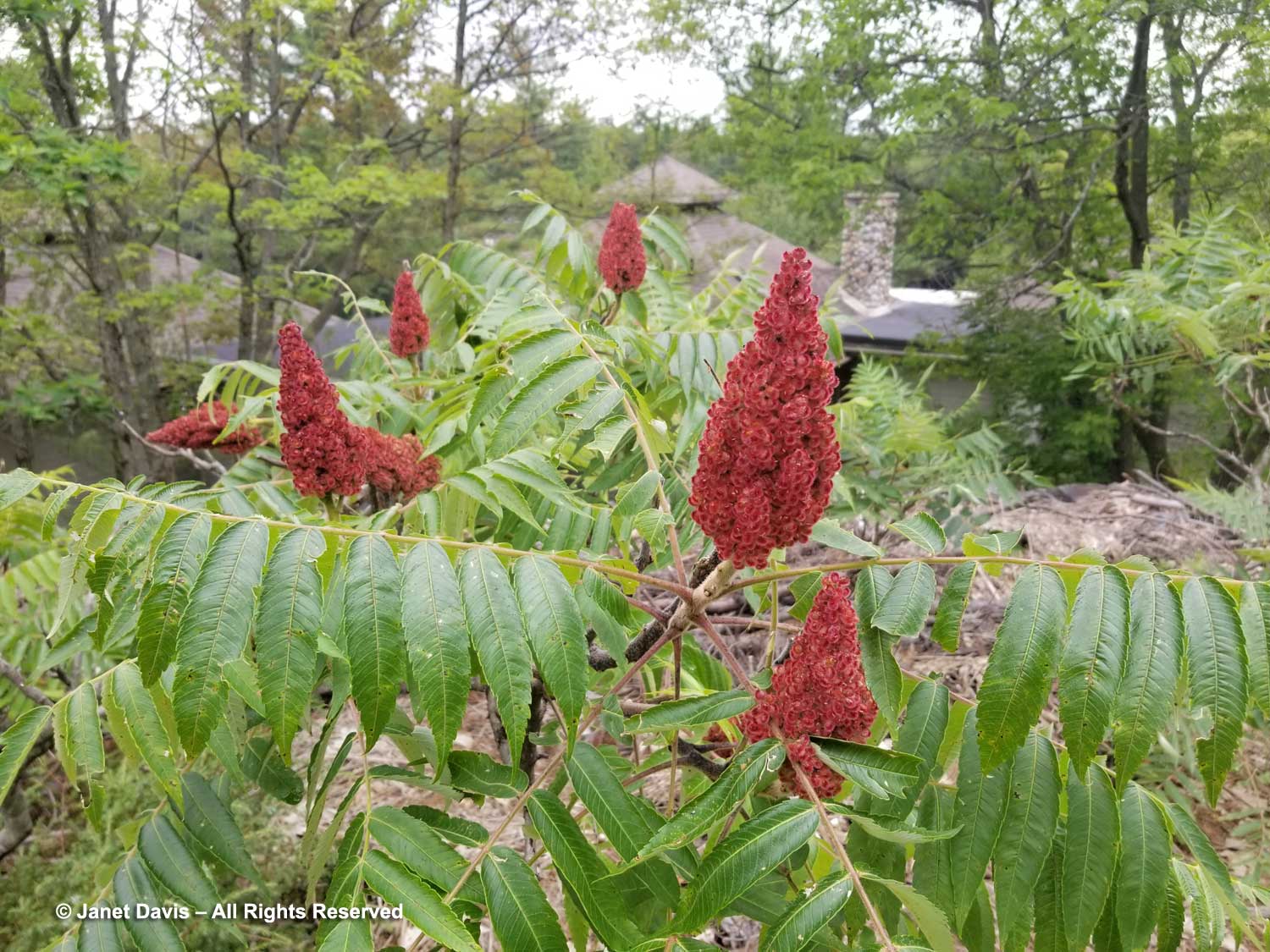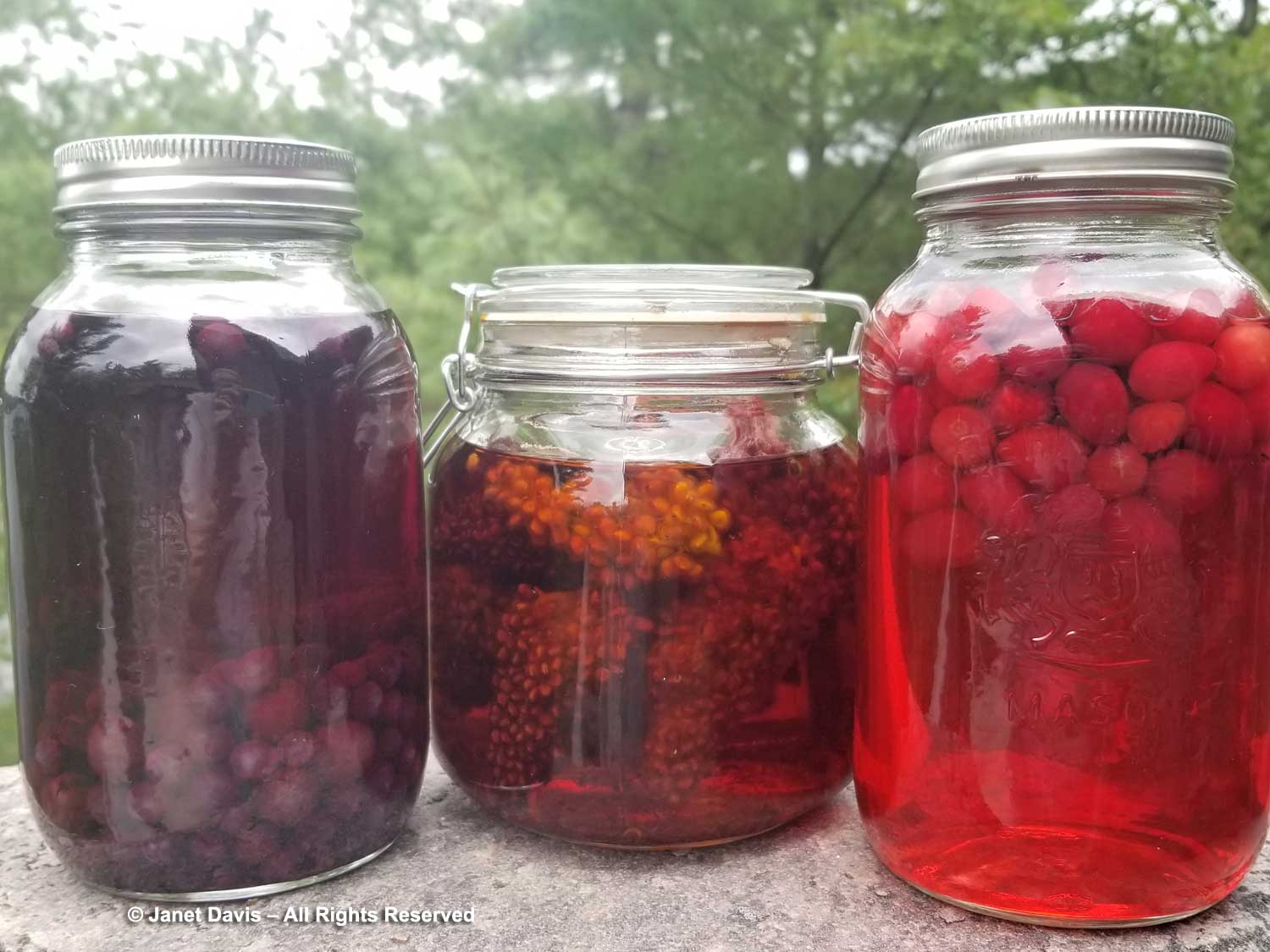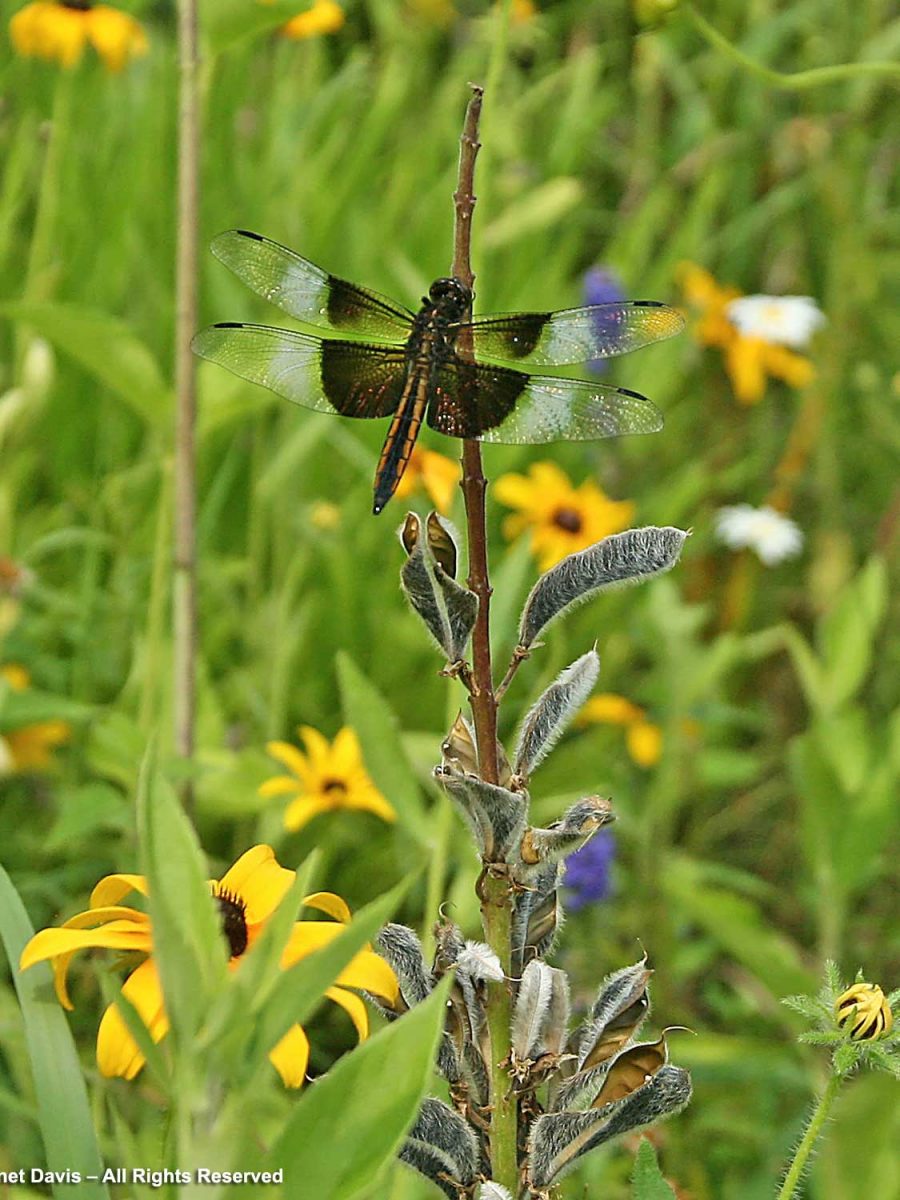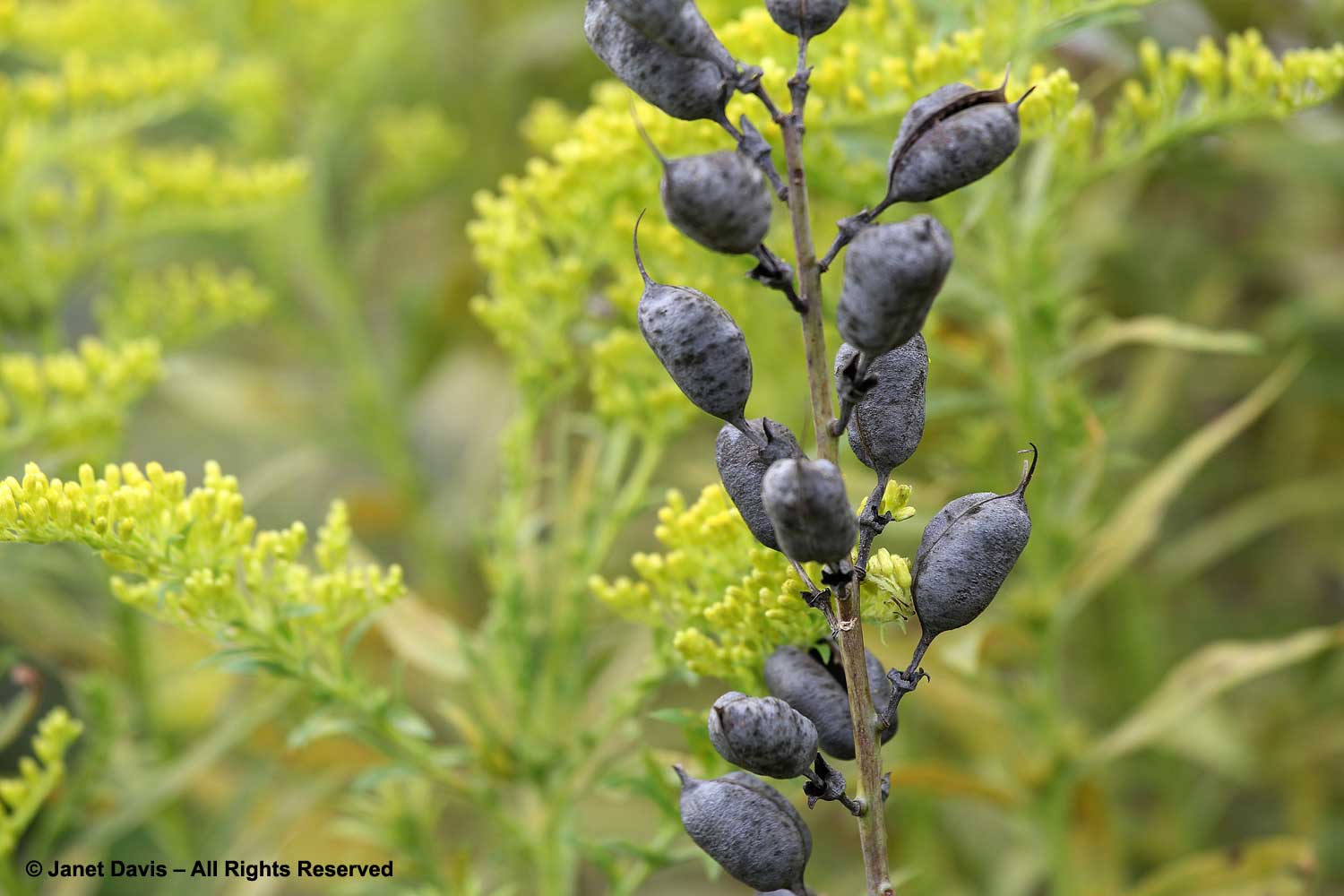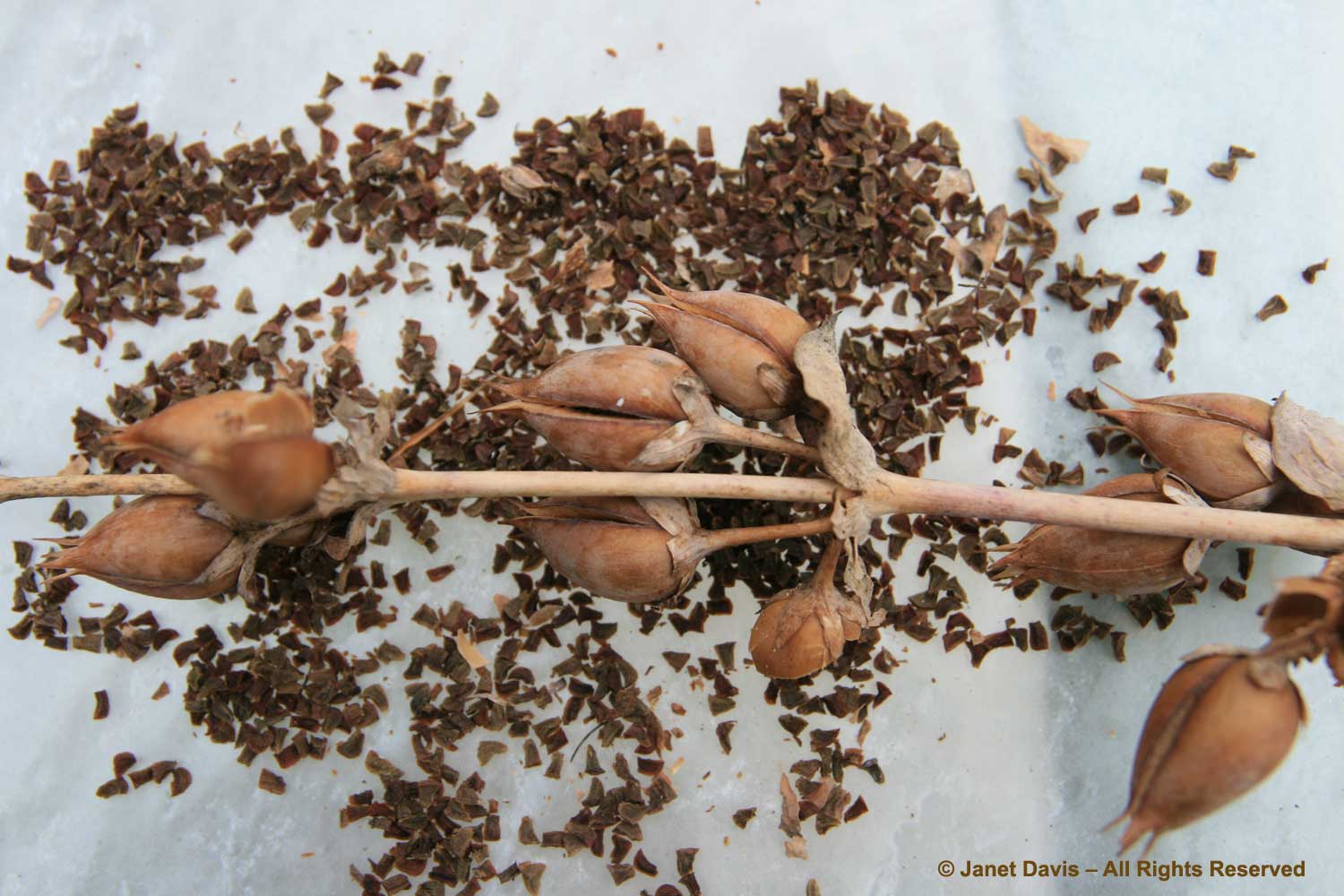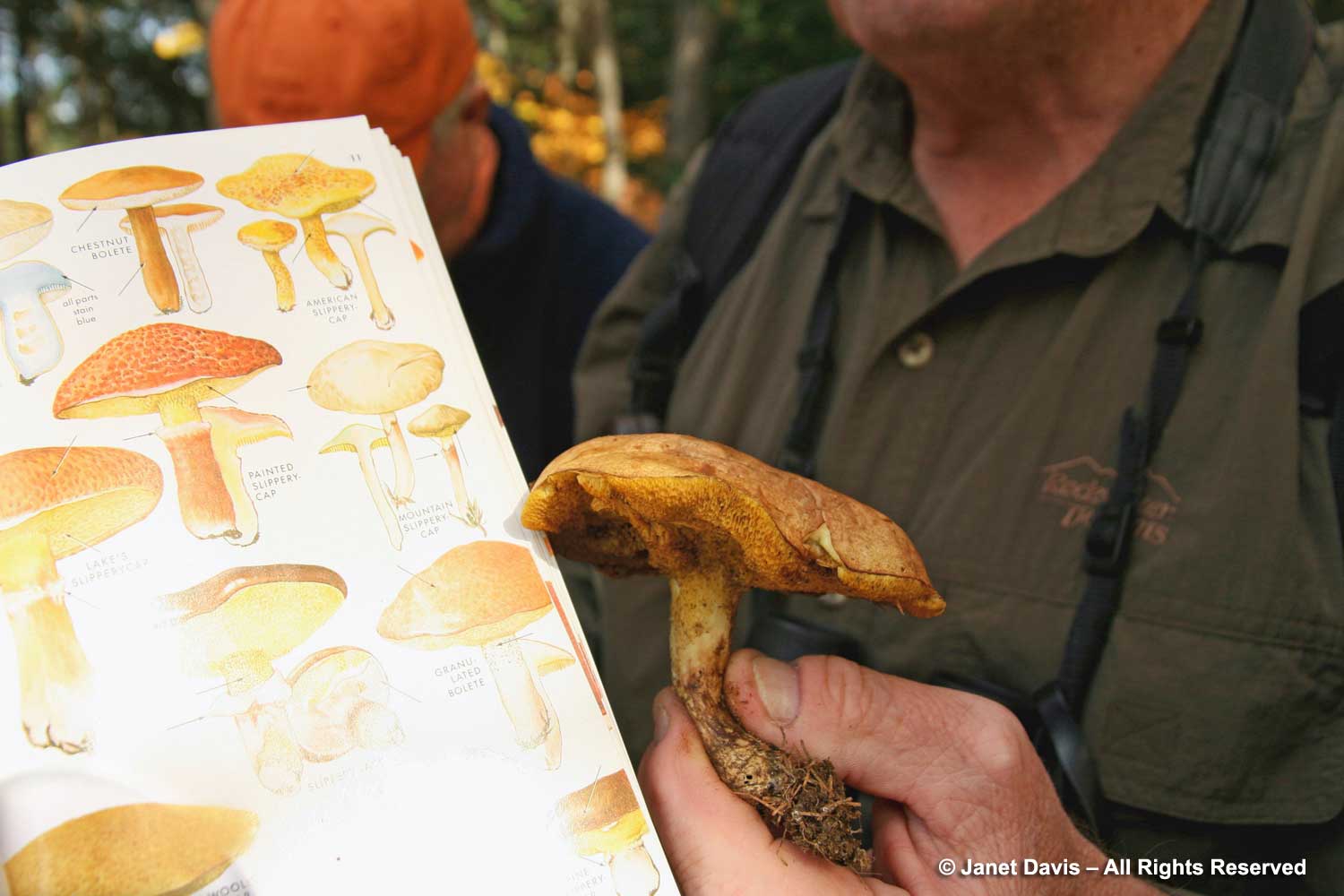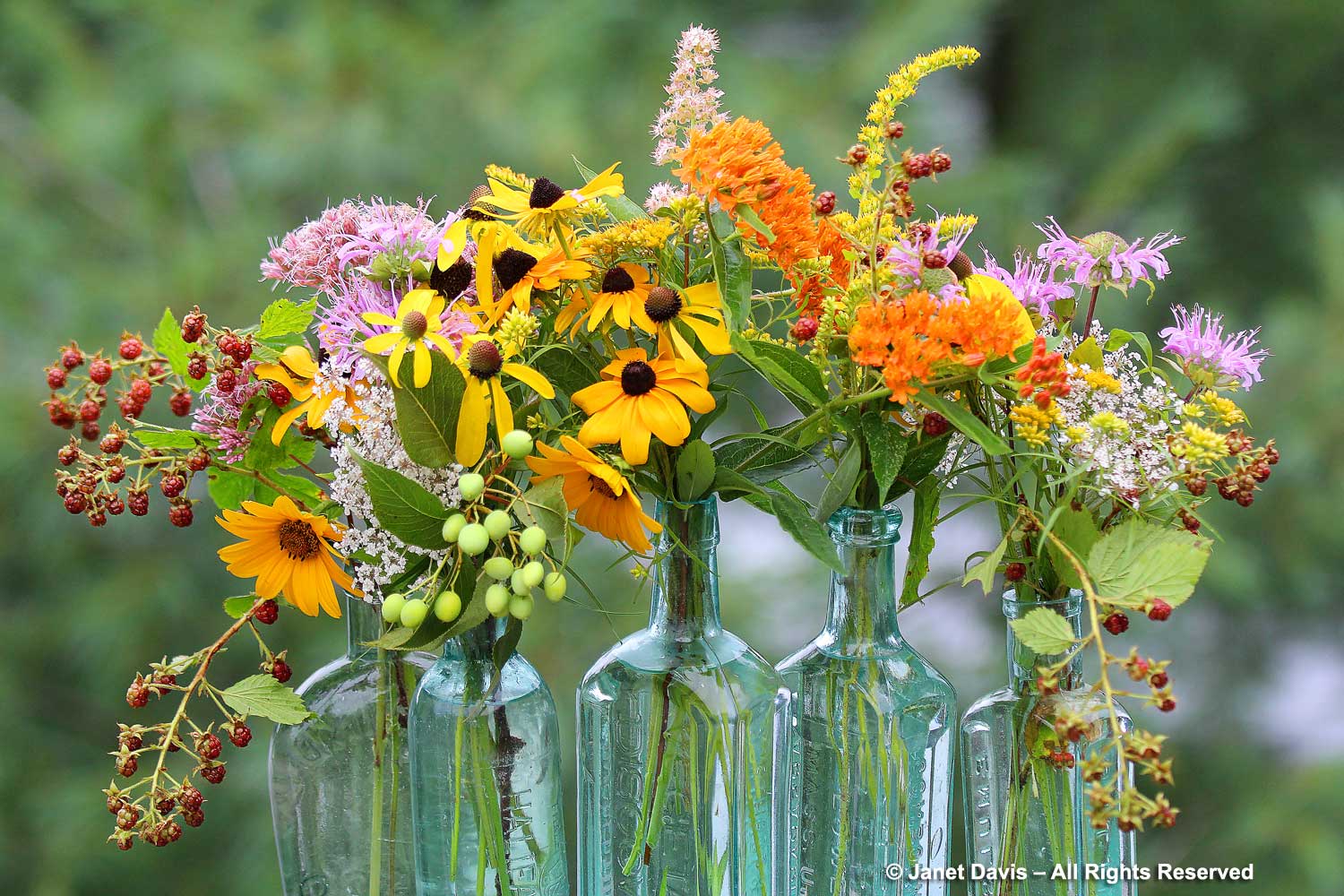My 23rd fairy crown celebrates one of the great, hardy, late-summer-to-early-autumn perennials – sedum. Or should that be “stonecrop”. And the Latin name? Well, it used to be Sedum spectabile but now the big pink sedums have been renamed Hylotelephium spectabile. Let’s just call it by its cultivar name ‘Autumn Joy’. But wait…. that cultivar was originally the German variety “Herbstfreude”. Okay, you get the idea; DNA is analyzed; parental lines are revised; common names are confusing; and sometimes, the Germans got there first! But what else is in today’s crown? Well, the little coneflowers are browneyed susans, Rudbeckia triloba, a biennial. The fuzzy yellow spike is Solidago sphacelata ‘Golden Fleece’. And the fruits are crabapples from my dearly-departed ‘Red Jade’ crabapple and wild, native Virginia creeper (Parthenocissus quinquefolia) that likes to attach itself to my fence.
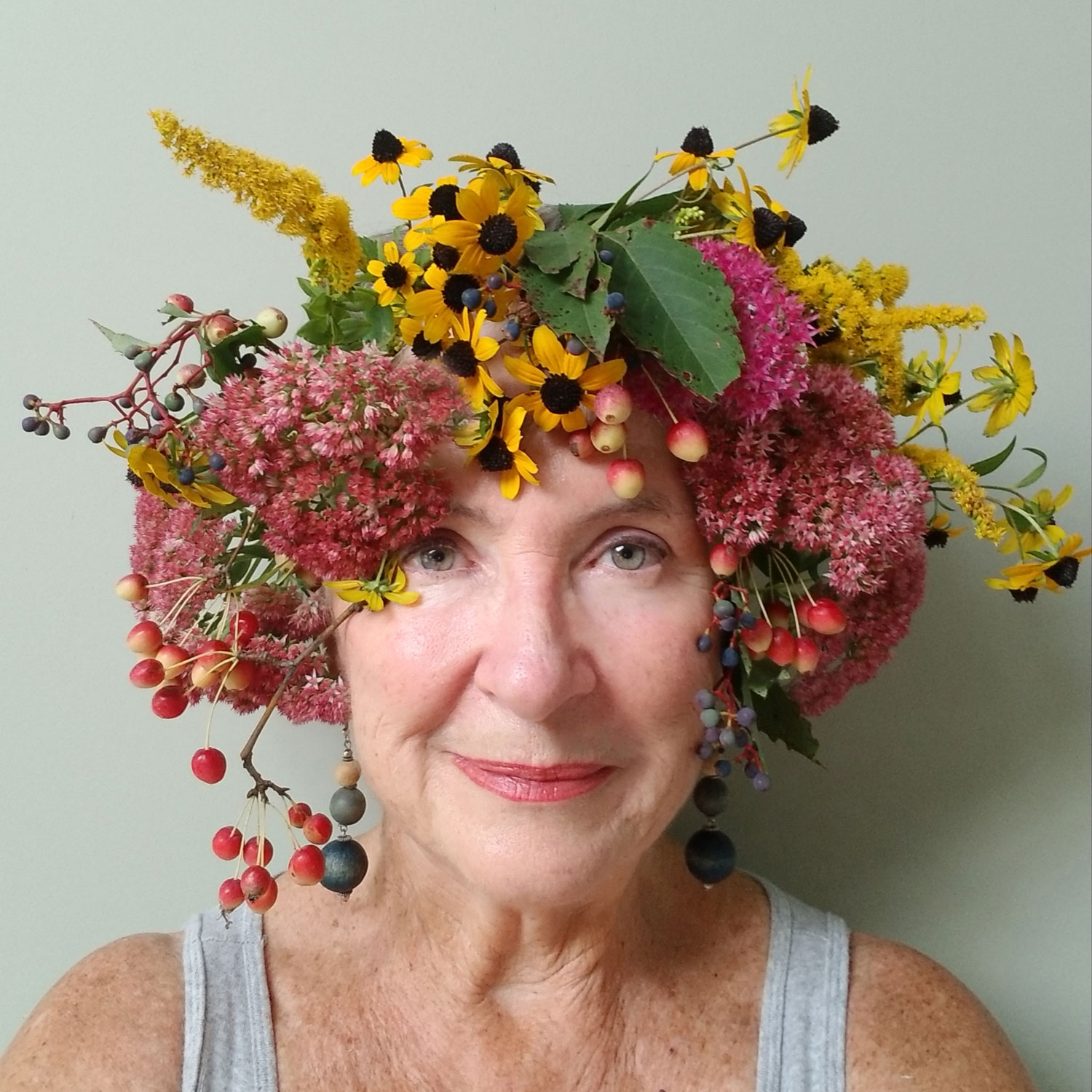
Sedum ‘Autumn Joy’ has a very long season of interest. In August, the green, broccoli-like flowerheads start their colour transformation, turning a light rose. It was at this point that I photographed my granddaughter Emma “watering” them. That’s rough blazing star (Liatris aspera) with the purple spikes nearby.
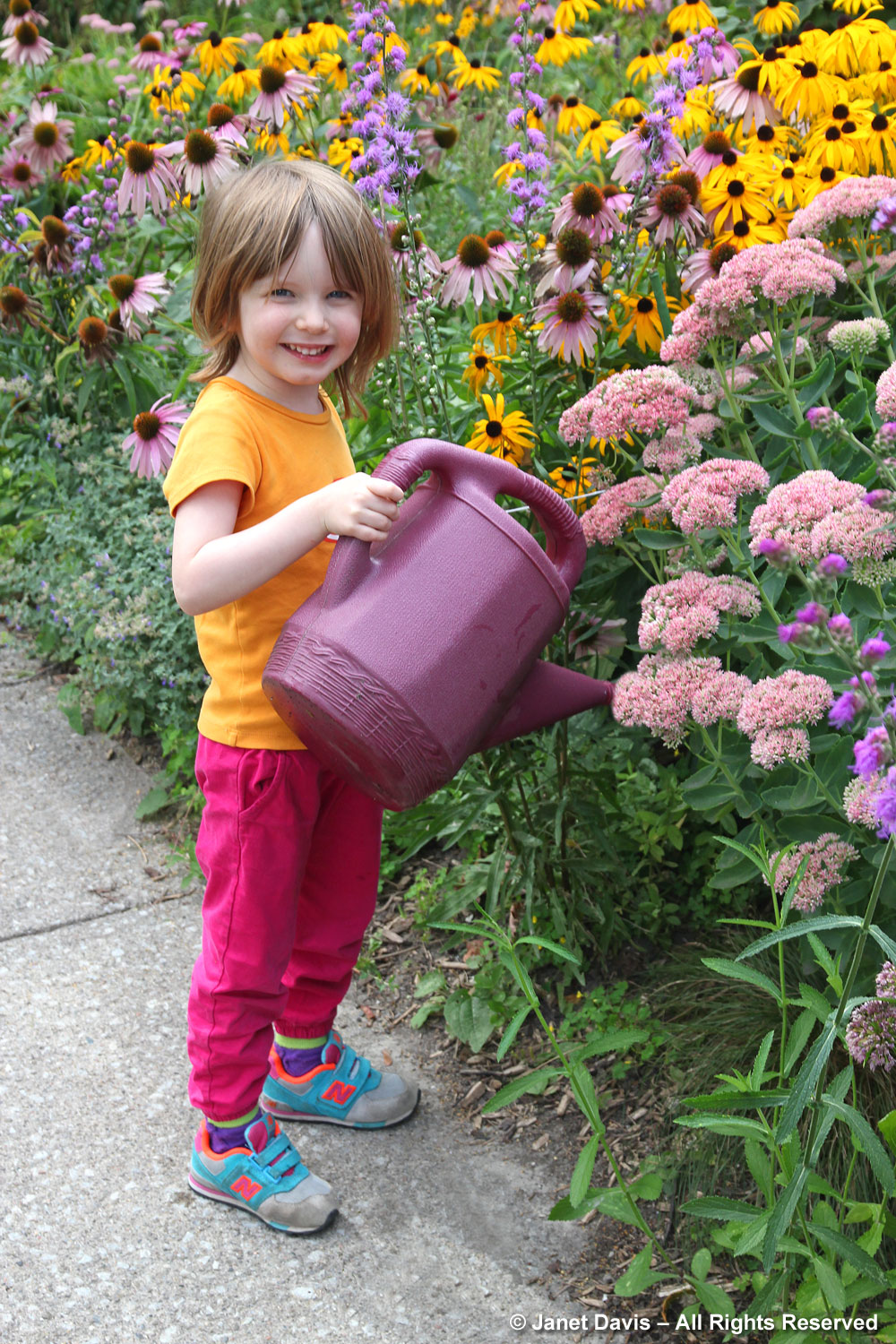
The photo below is at the height of flowering in the August pollinator garden, but the sedum takes its time in opening the tiny flowers.
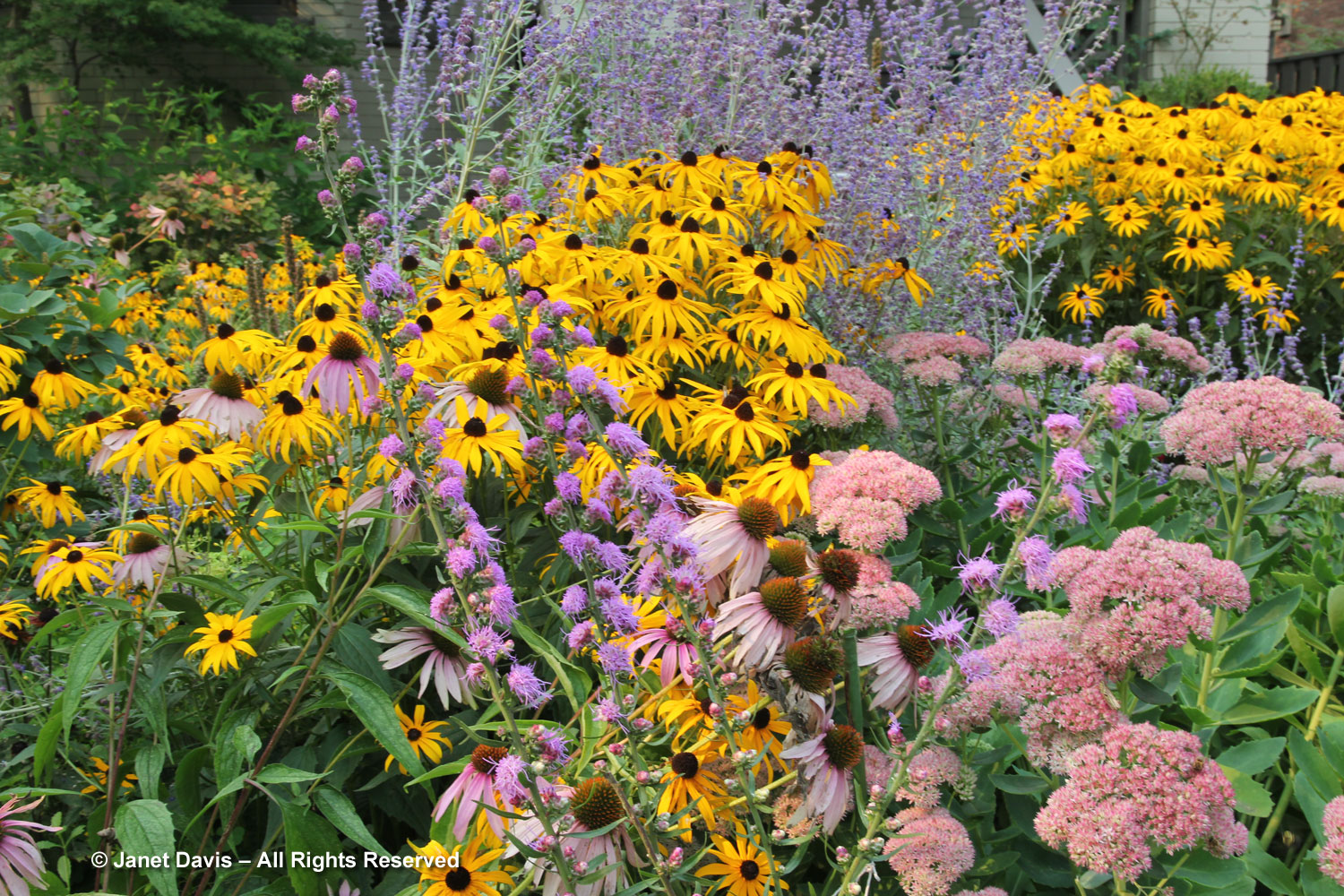
When they do open a few weeks later in September, the colour a deeper rose, the echinaceas have usually finished blooming.
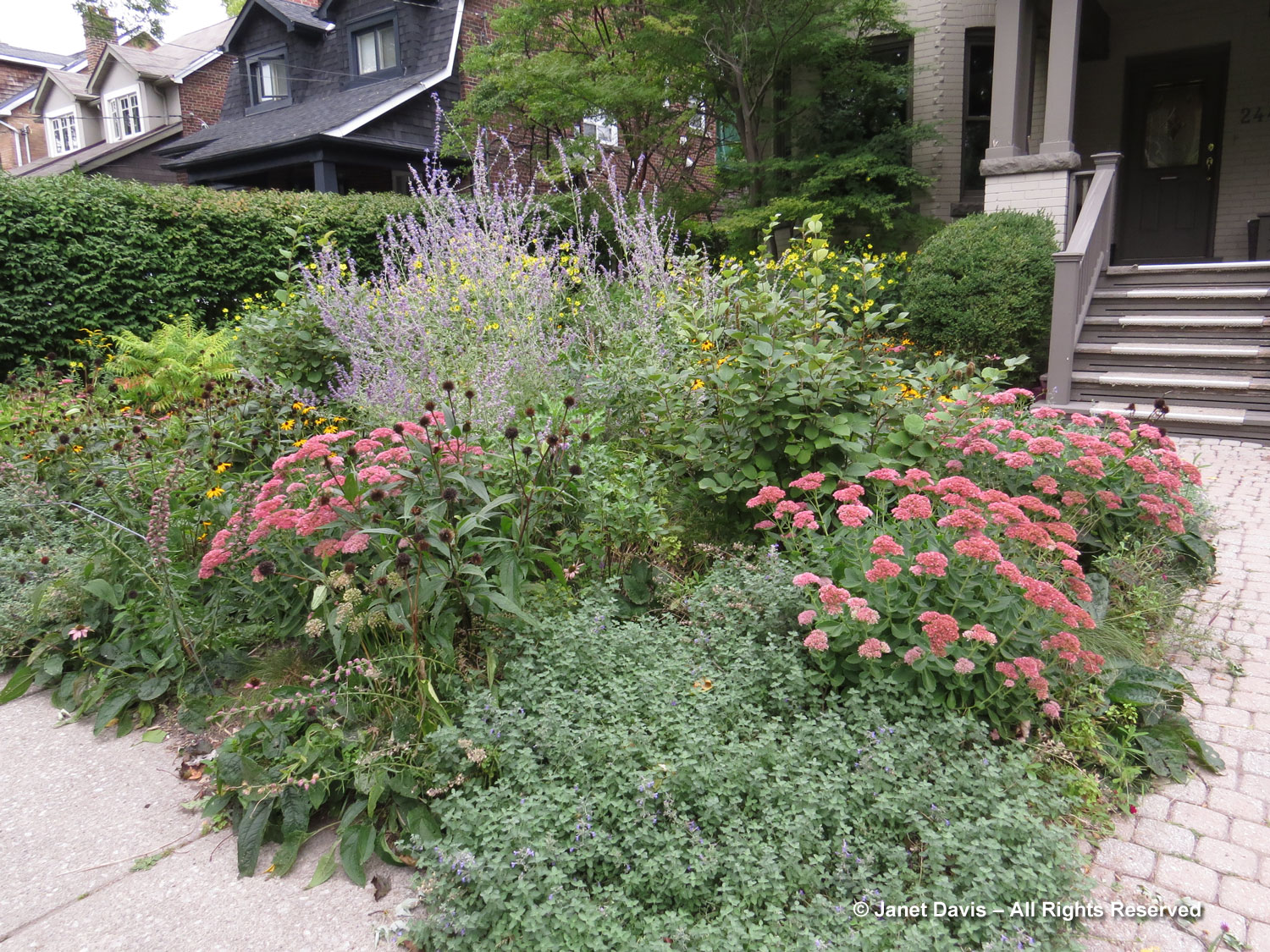
In the background in my city garden is Helianthus ‘Lemon Queen’, which I blogged about in Fairy Crown #21 at the cottage.
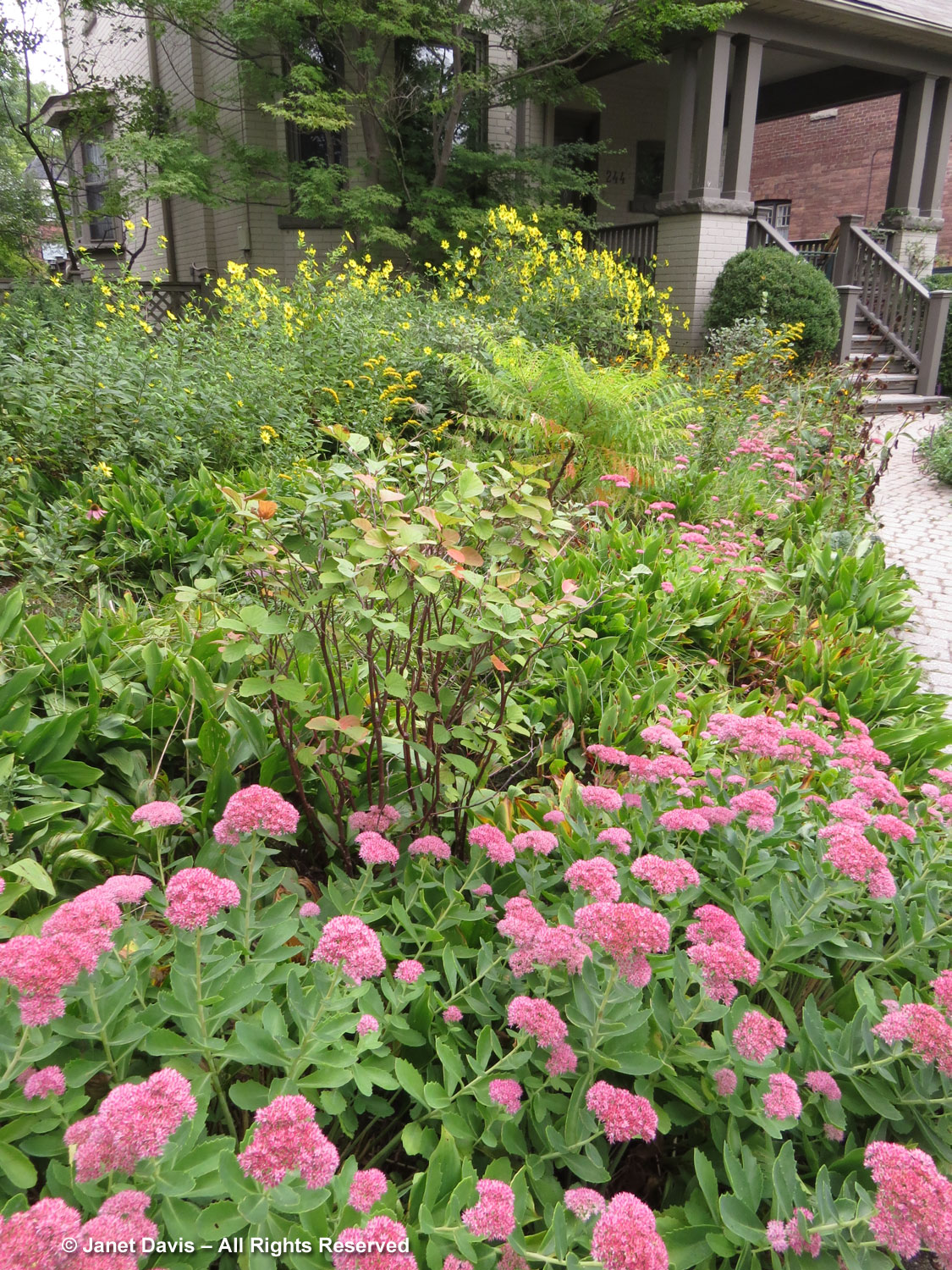
Sedum flowers are irresistible to butterflies like the monarch, especially as they begin their southward migration.
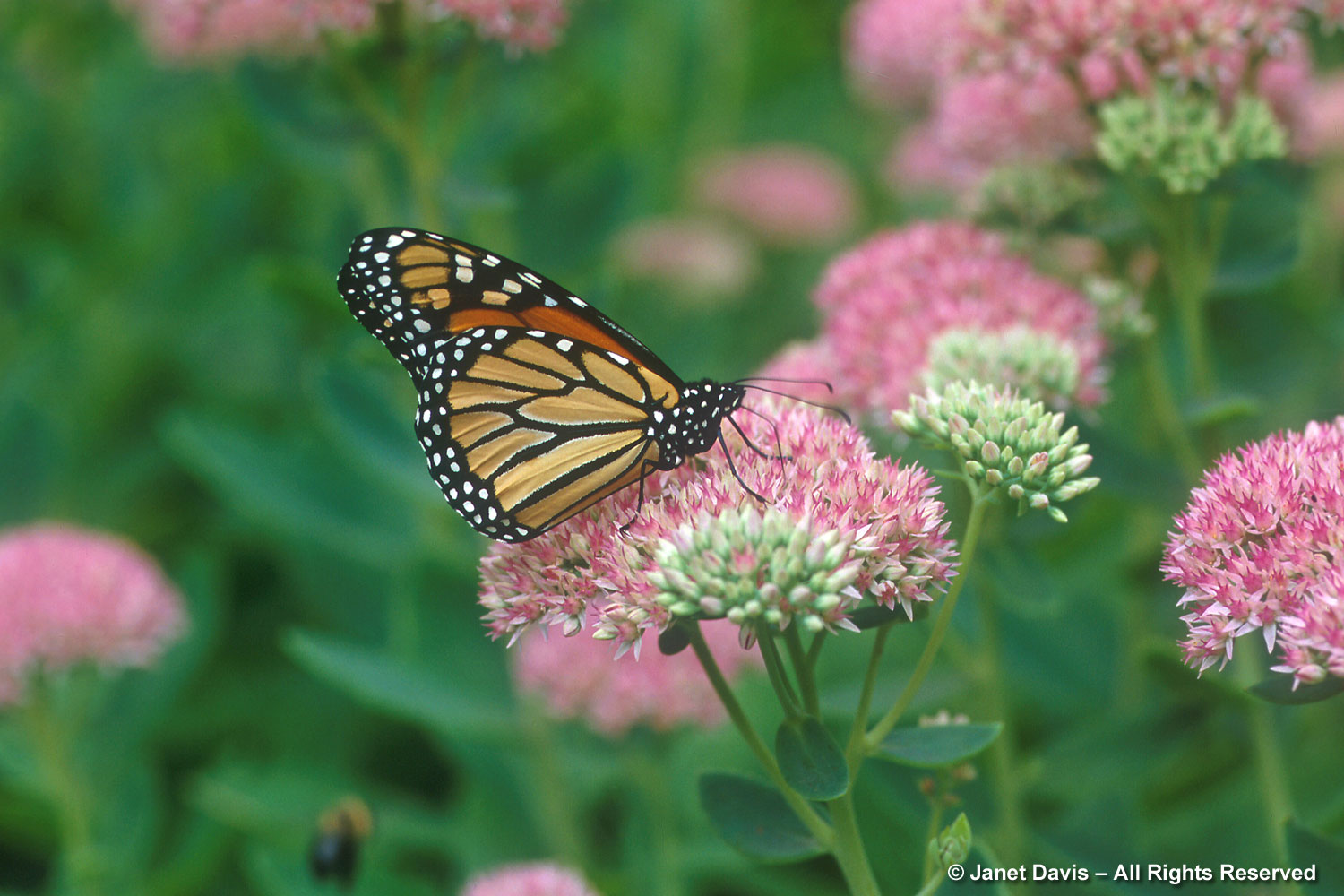
Bumble bees and honey bees, below, love the nectar-rich flowers too.
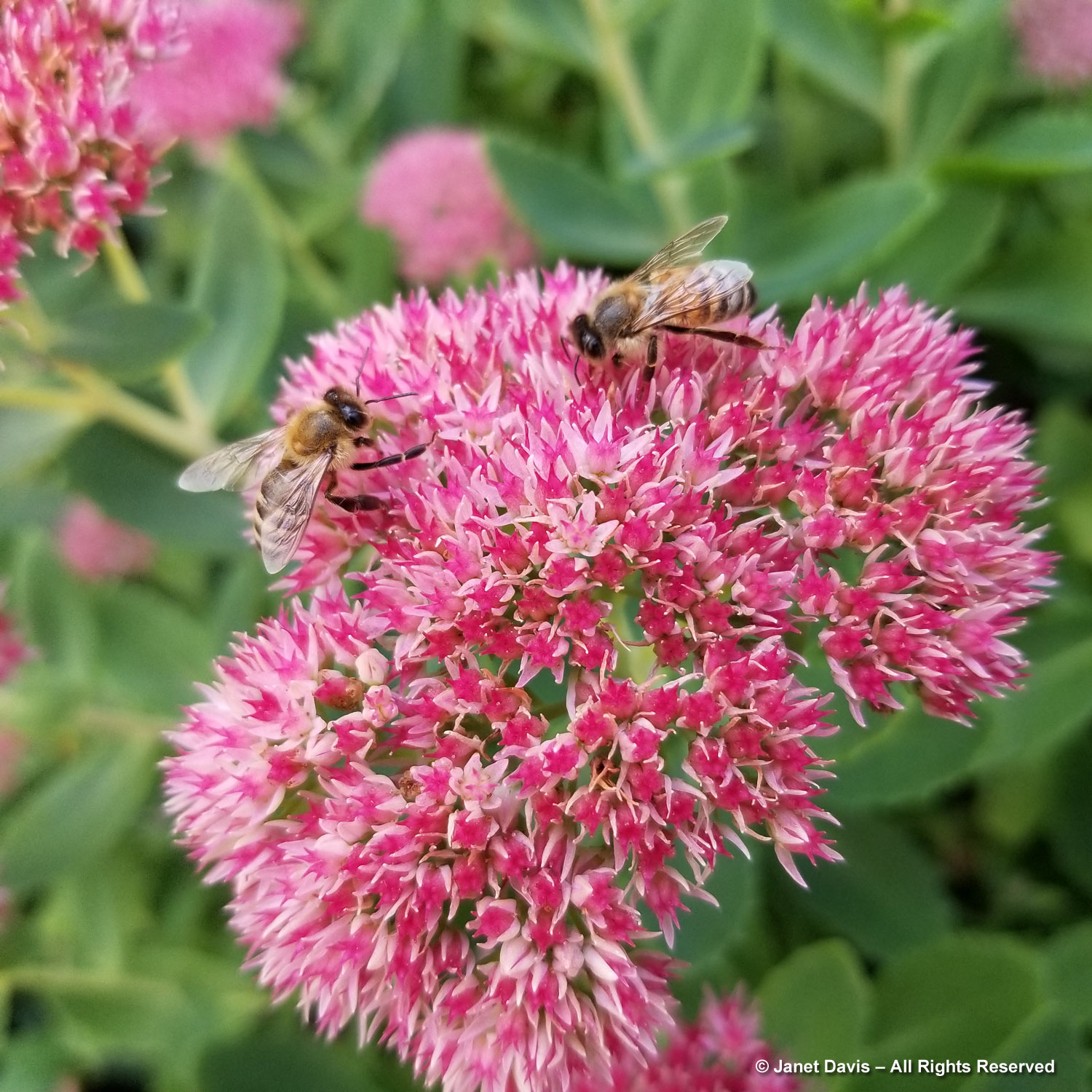
Sedum time in Toronto coincides with the September flowering of Solidago sphacelata ‘Golden Fleece’, below, a well-behaved, compact form of autumn goldenrod discovered by Delaware’s Mt. Cuba Center in 1985 and introduced to commerce a few years later. I purchased it years ago and have been patiently dividing it ever since.
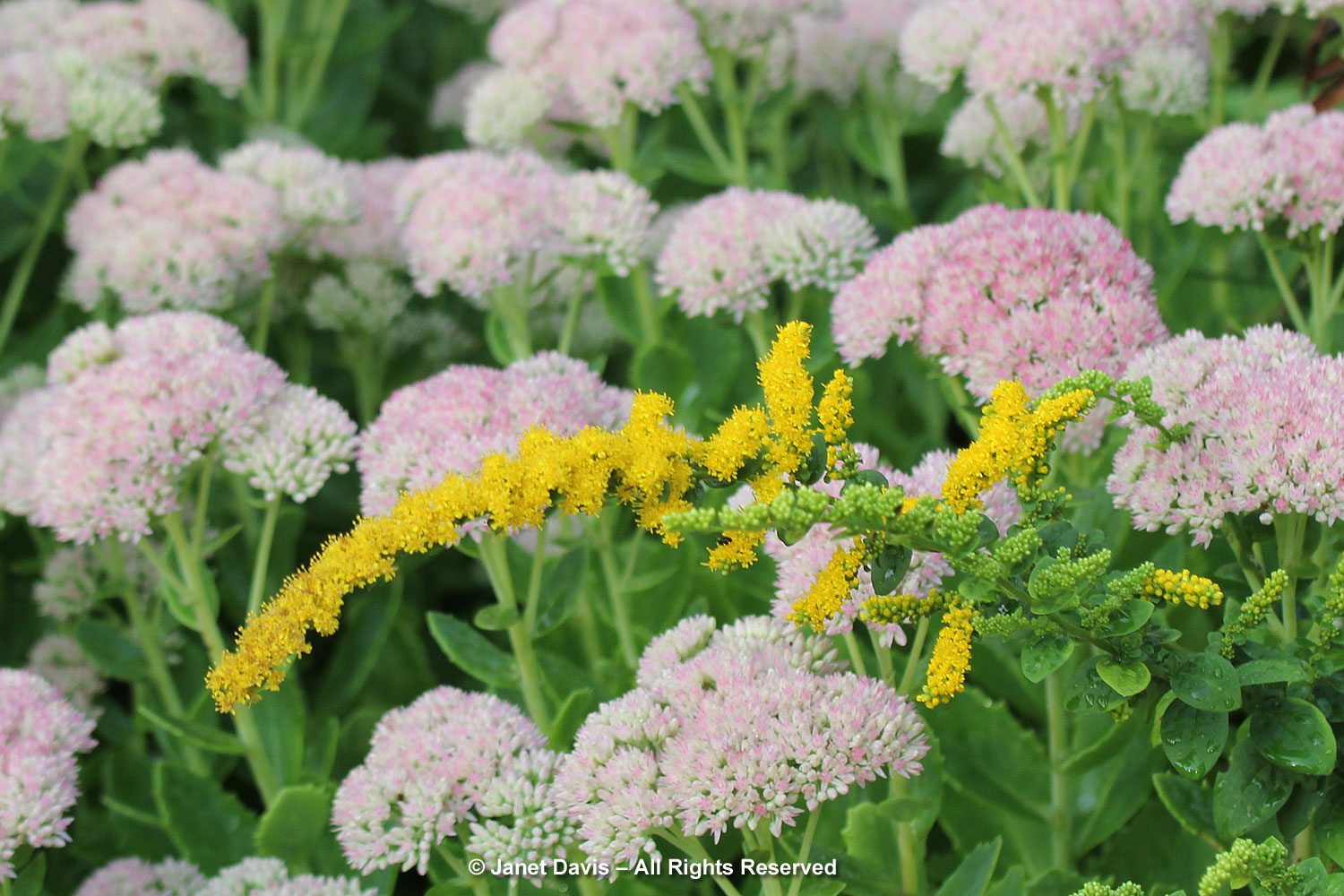
It is popular with pollinators, especially bumble bees.
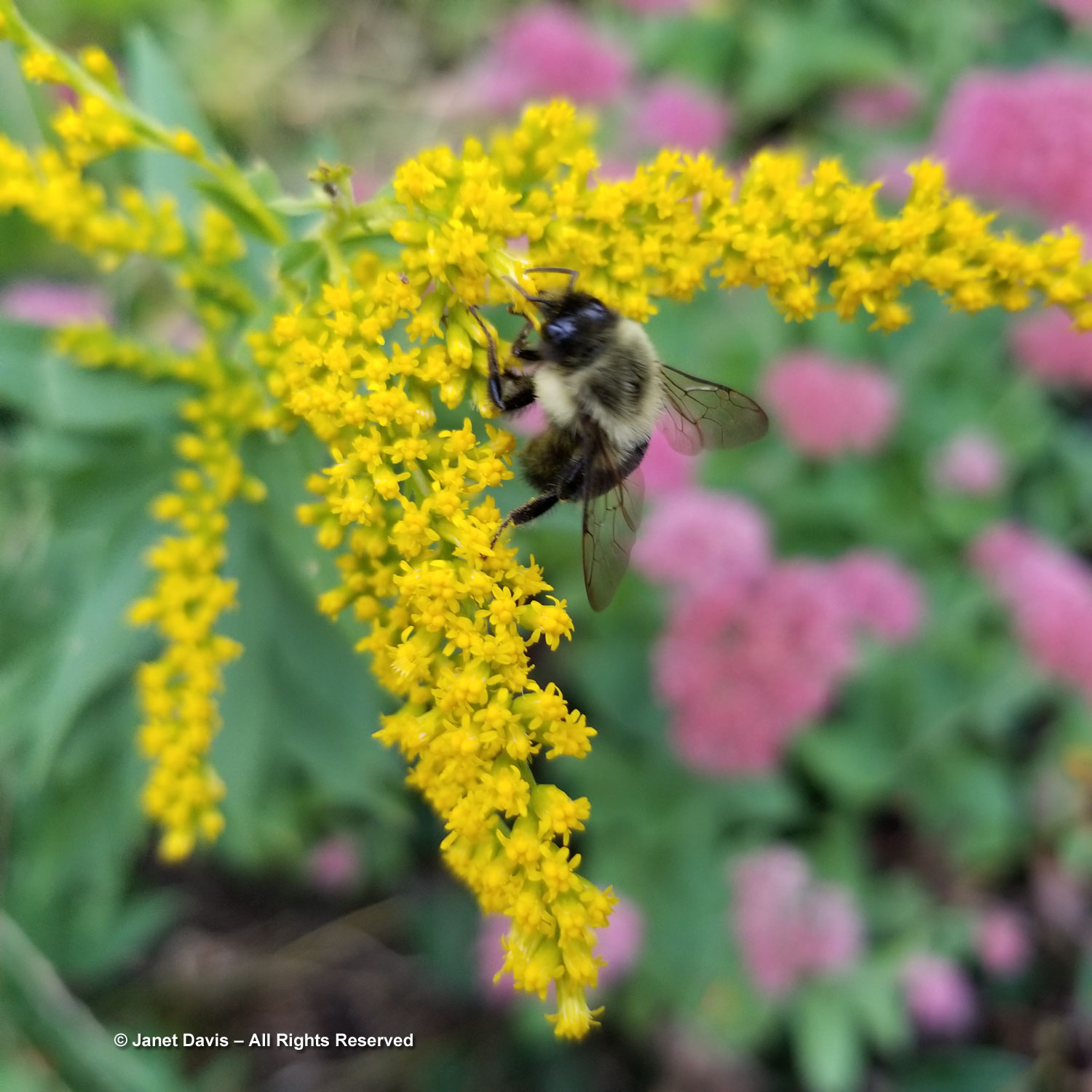
When you have friends with beautiful gardens, you’re sometimes gifted with their favourite plants. That’s what “pass-along plant” means, and the one below, browneyed susan (Rudbeckia triloba) was a gift from my pal Aldona Satterthwaite. It’s a biennial (green growth the first summer, flowers the next), so I’ll have to wait for its babies to pop up in my garden.
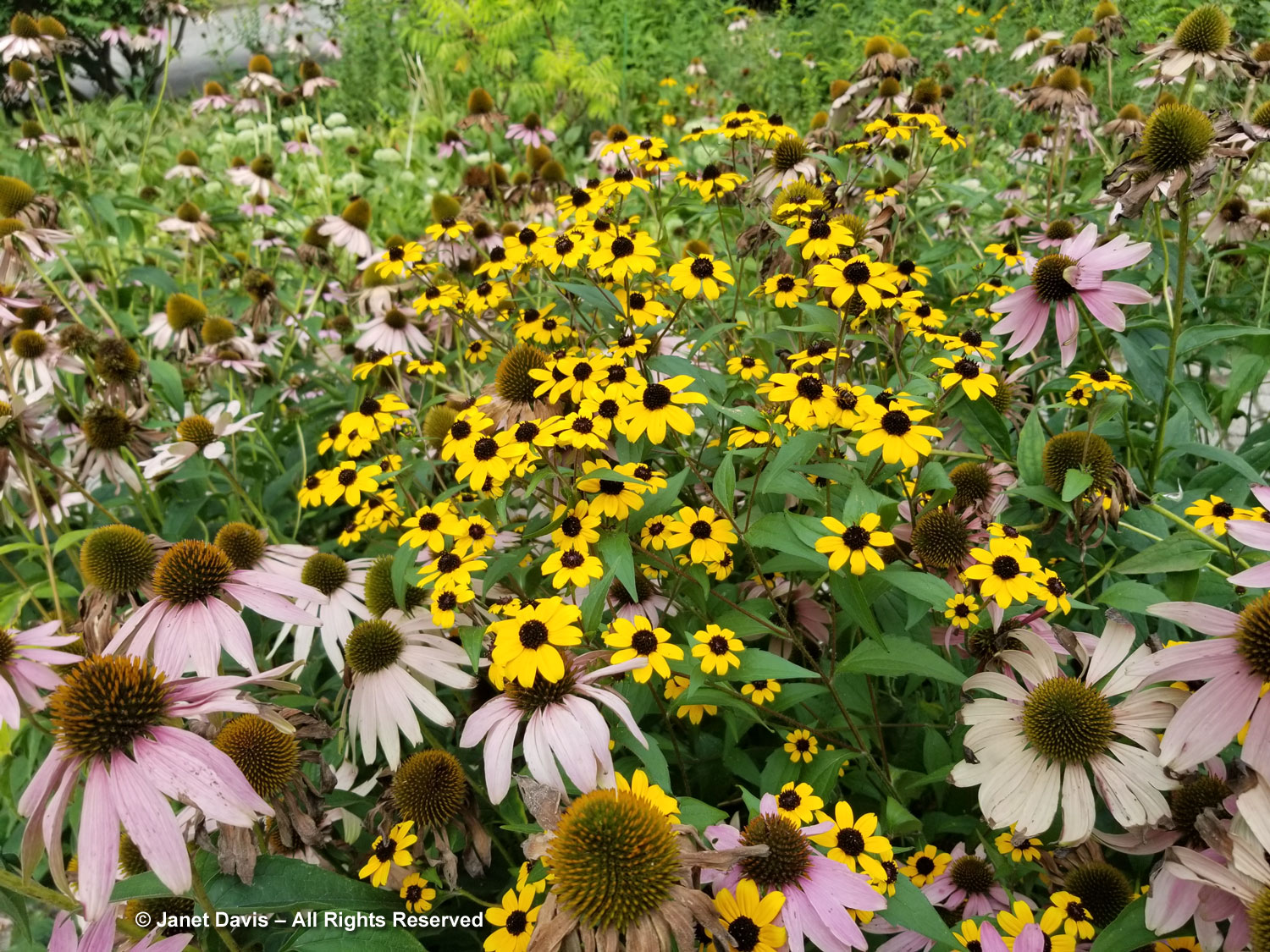
My crown also contains a few fruits from my garden, including the ripening fruit of native wild Virginia creeper….
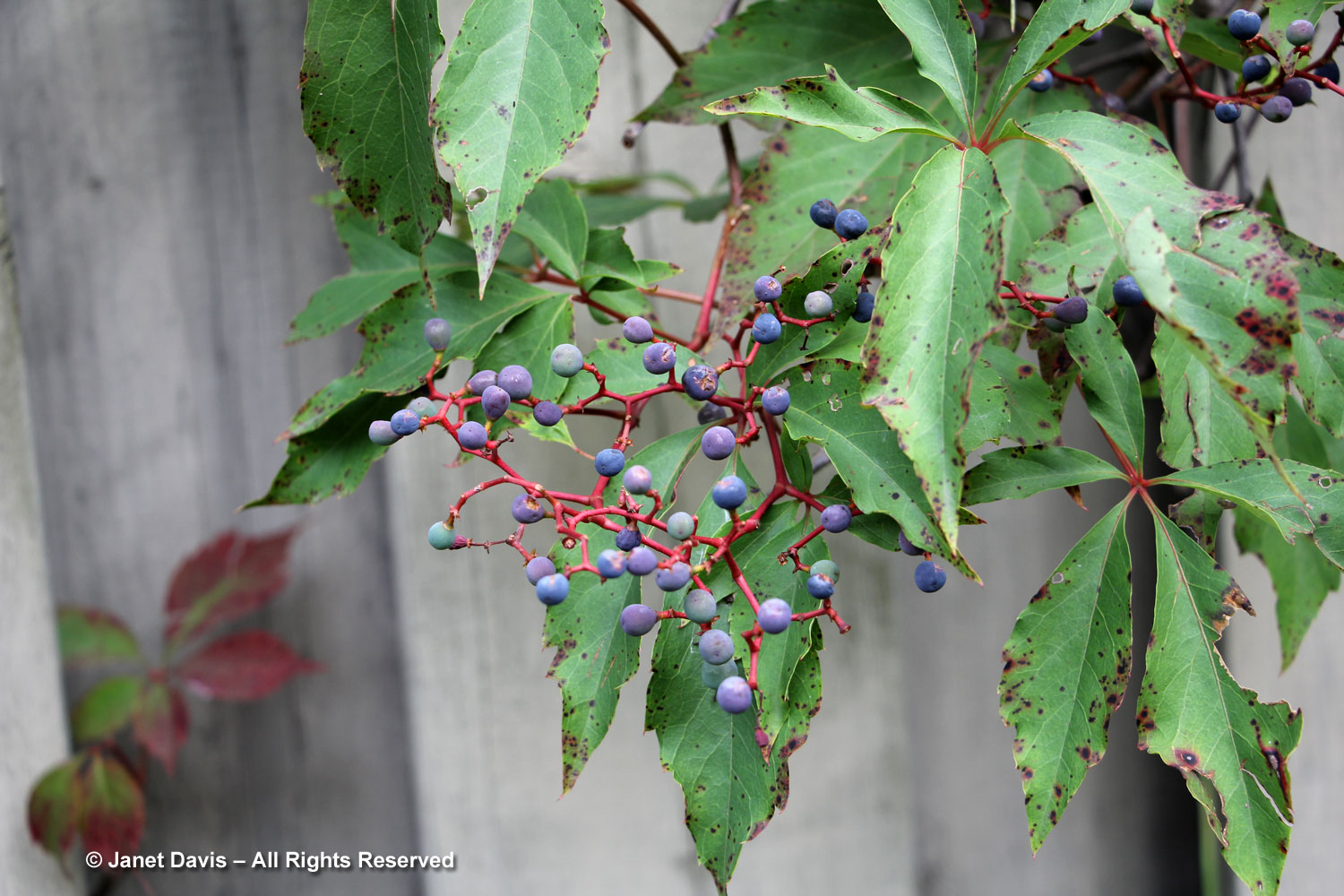
…. and those from my ‘Red Jade’ crabapple, which sadly will need a replacement next spring. The birds will miss it terribly.
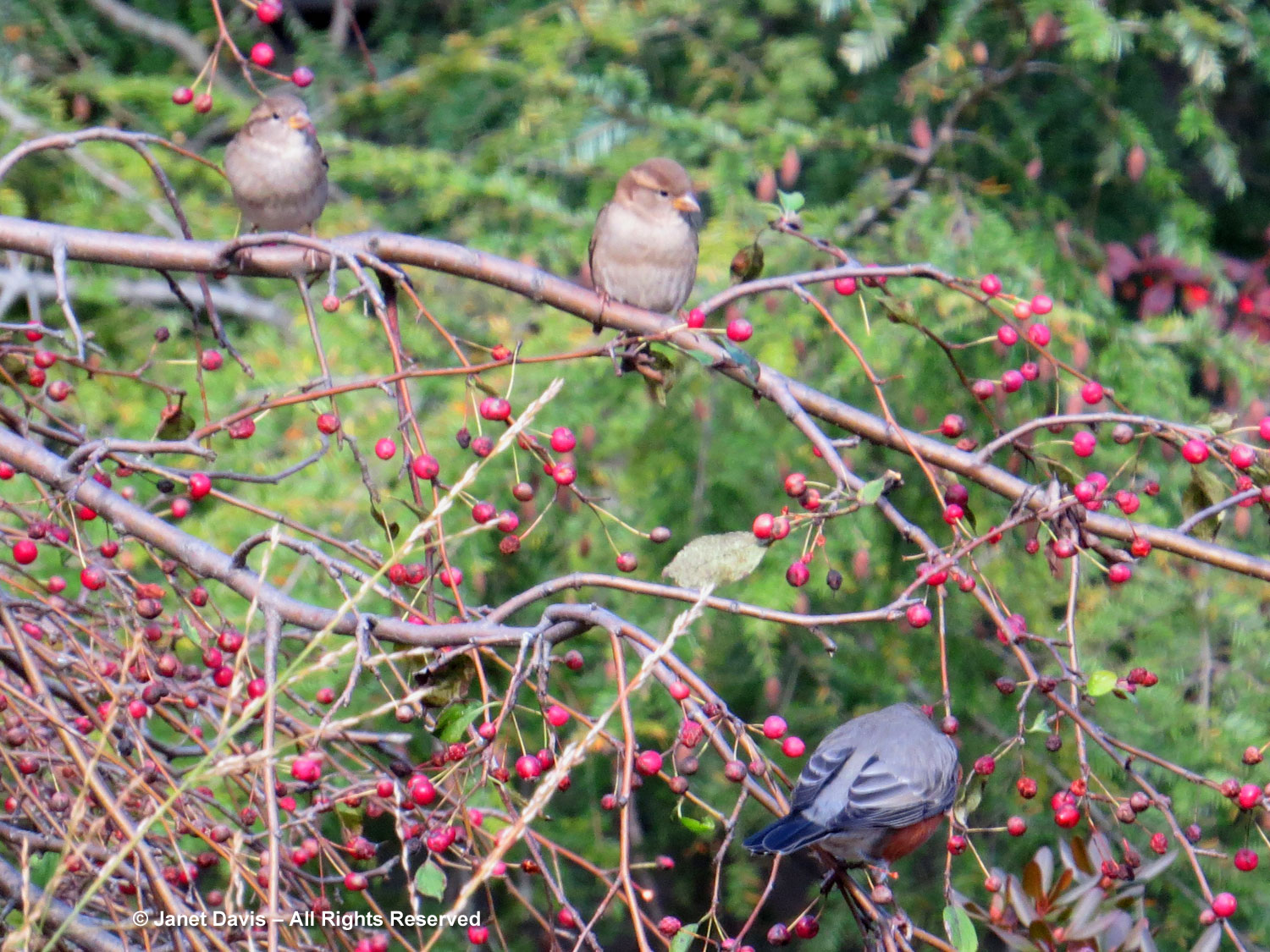
But instead of ending on a sad note, I’ll finish with a bouquet to remember the flowers of Fairy Crown 23.
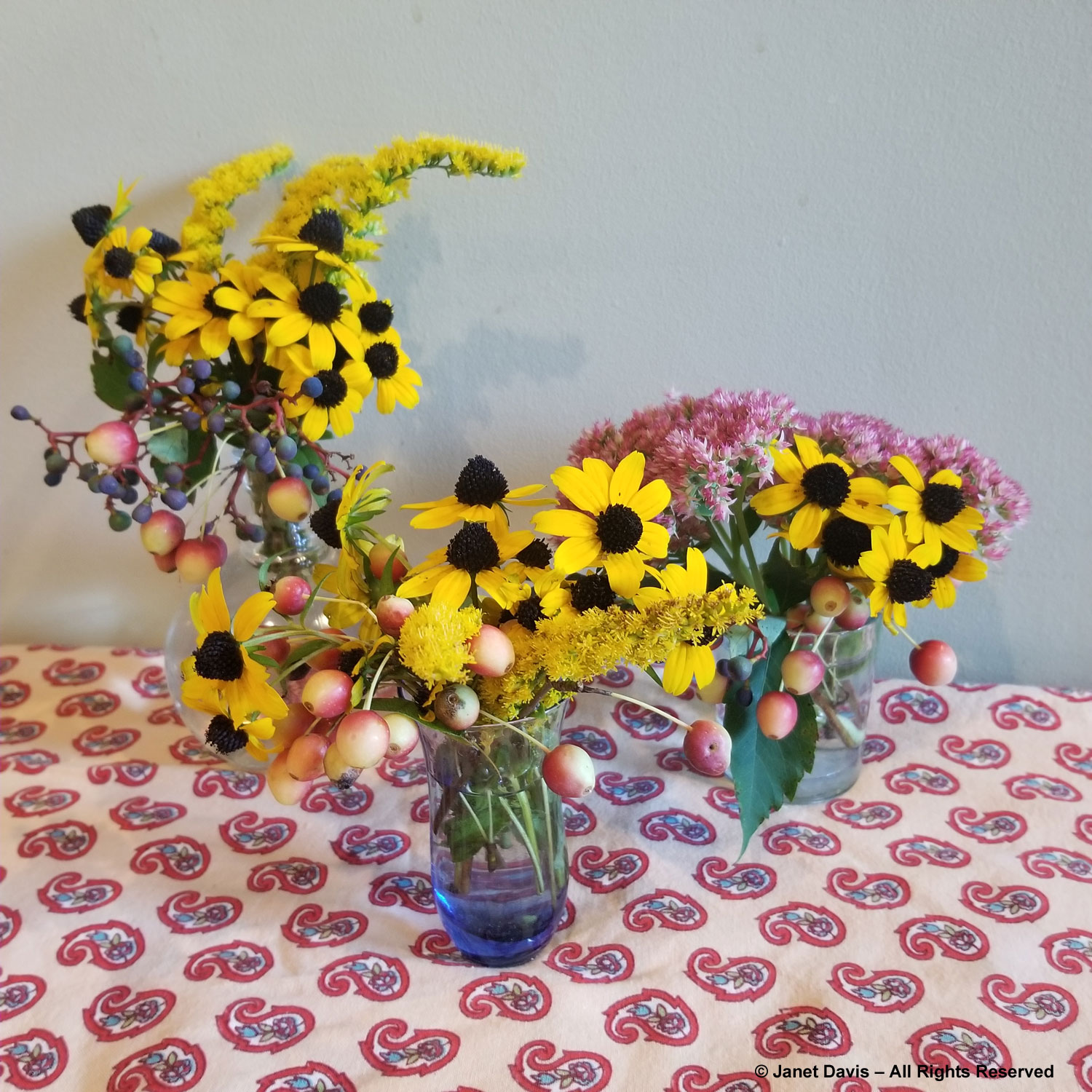
********
Missed my blogs on my previous 22 fairy crowns? Here they are! #1 – Spring Awakening
#2 – Little Blossoms for Easter
#3 – The Perfume of Hyacinths
#4 – Spring Bulb Extravaganza
#5 – A Crabapple Requiem
#6 – Shady Lady
#7 – Columbines & Wild Strawberries on Lake Muskoka
#8 – Lilac, Dogwood & Alliums
#9 – Borrowed Scenery & an Azalea for Mom
#10 – June Blues on Lake Muskoka
#11 – Sage & Catmint for the Bees
#12 – Penstemons & Coreopsis in Muskoka
#13 – Ditch Lilies & Serviceberries
#14 – Golden Yarrow & Orange Milkweed
#15 – Echinacea & Clematis
#16 – A Czech-German-All American Blackeyed Susan
#17- Beebalm & Yellow Daisies at the Lake
#18- Russian Sage & Blazing Stars
#19-My Fruitful Life
#20-Cup Plant, Joe Pye & Ironweed

